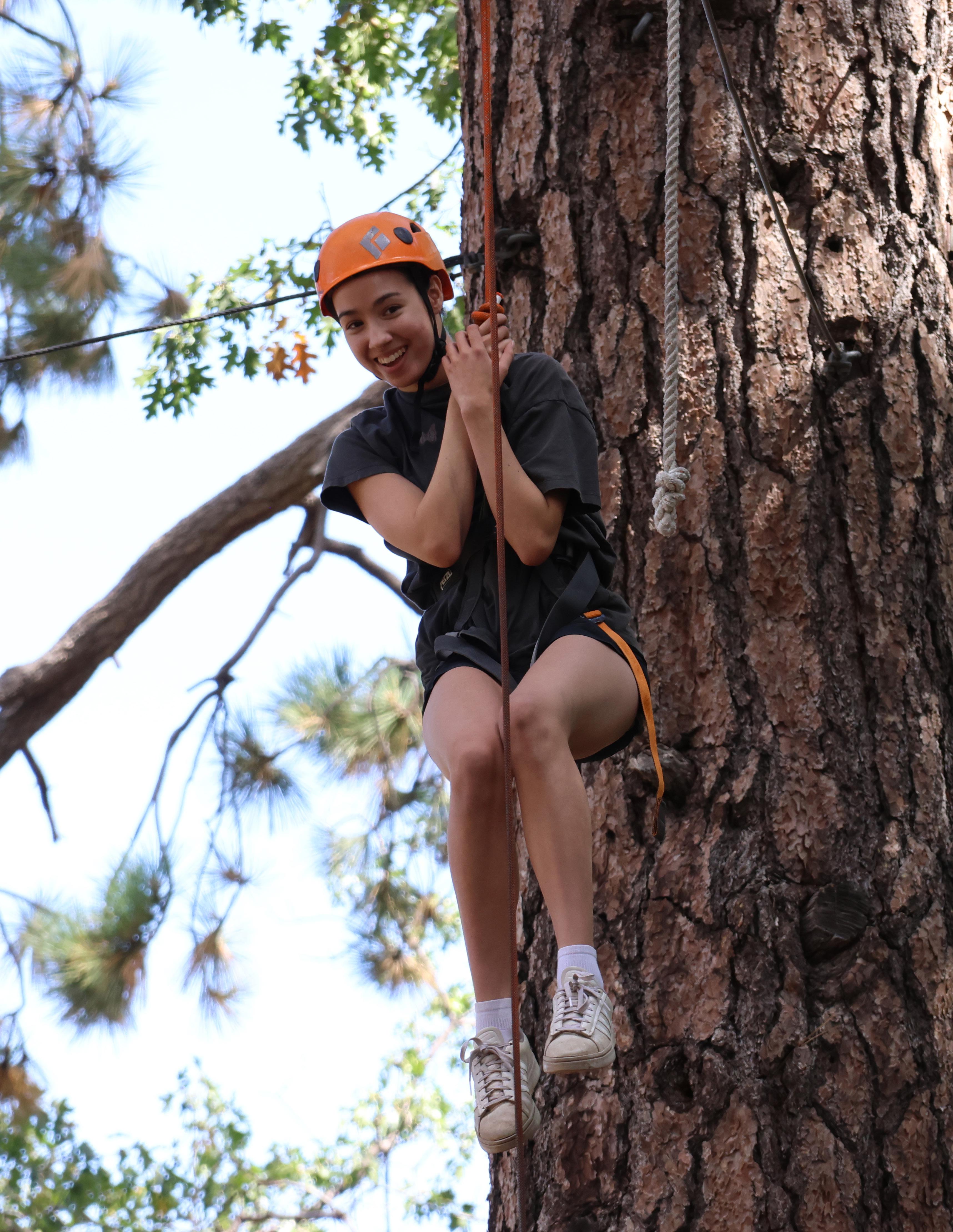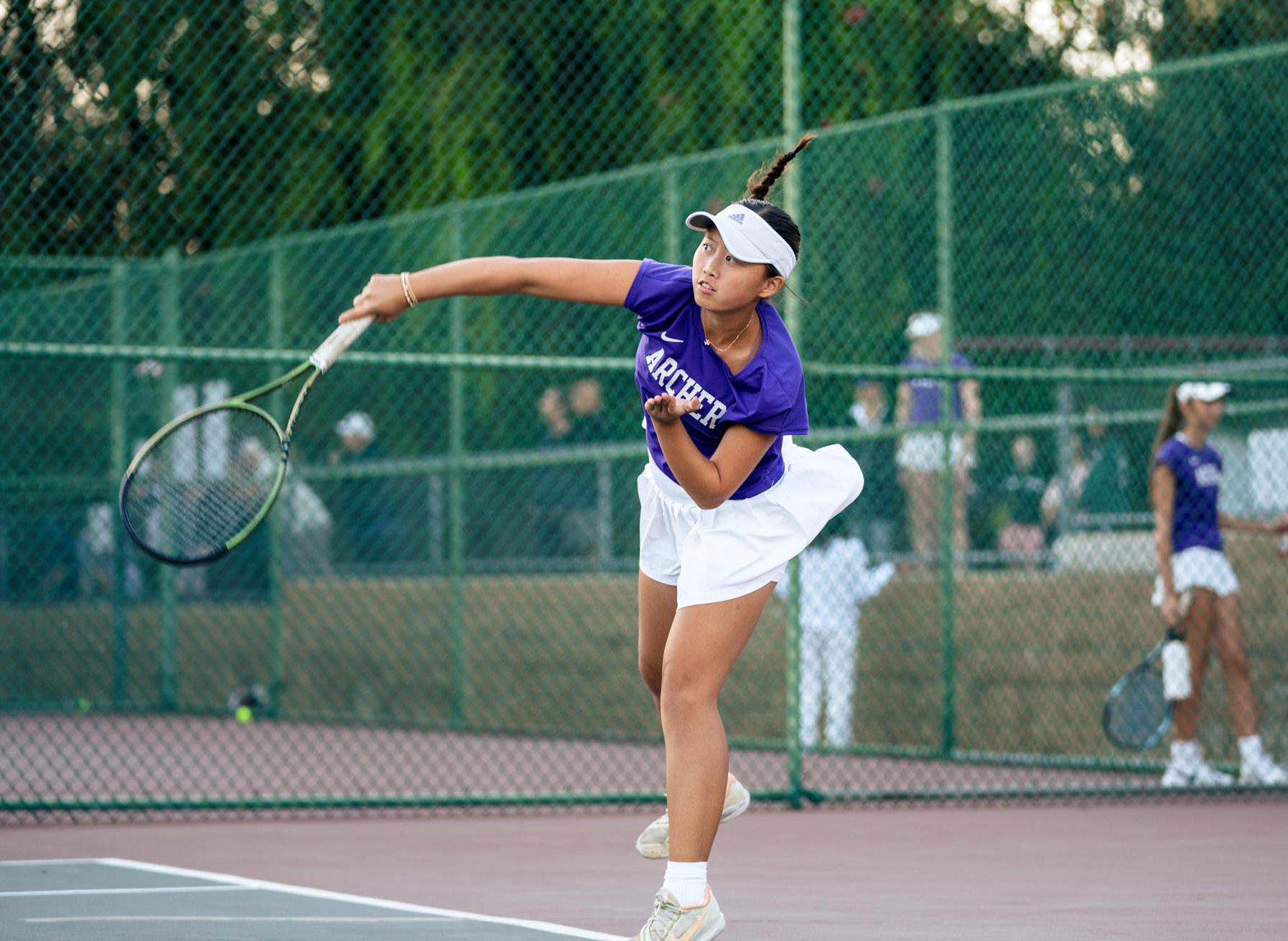GIRLHOOD UNFILTERED Navigating Teen Life with Alumni Experts


GIRLHOOD UNFILTERED Navigating Teen Life with Alumni Experts


Elizabeth English
Dear Archer Community:
What does it mean to grow up as a girl today?
It’s a question I find myself turning to often as I think about how at Archer we can protect our students’ right to childhood generally and girlhood in particular. And I do believe that as educators and parents this is our responsibility.
While girlhood, like childhood, is evergreen, it evolves with each generation and is inevitably shaped by the forces of culture, technology, and politics.
The aim of this issue of Artemis Magazine is to honor girlhood and recognize its unique iteration in this very moment in time.
We at Archer understand that girlhood is not merely a phase to outgrow; it is a foundation. It’s where voice, resilience, and curiosity first take root, and where leadership begins.

In the bustle of modern life, it can be easy to overlook the radical nature of what we do here. We trust girls. We center them. We make space not only for their success, but for their becoming. And we do so with intention, with joy, and with the firm belief that how a girl feels during her school years matters just as much as what she achieves.
Put simply, at Archer we are not trying to mold girls into something else. We are creating and protecting the conditions for them to become more fully themselves.
Yours,

“We at Archer understand that girlhood is not merely a phase to outgrow; it is a foundation. It’s where voice, resilience, and curiosity first take root, and where leadership begins.”
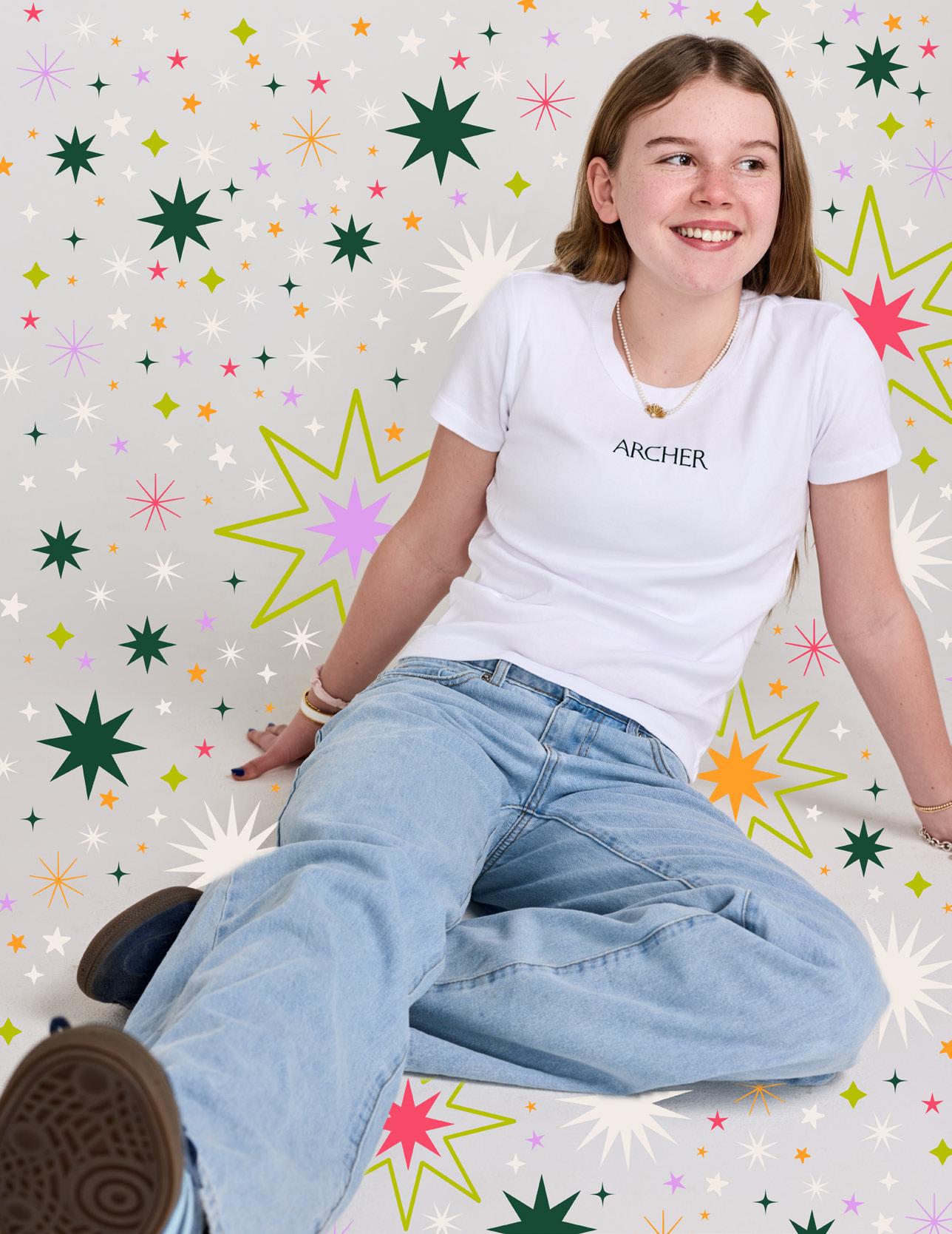
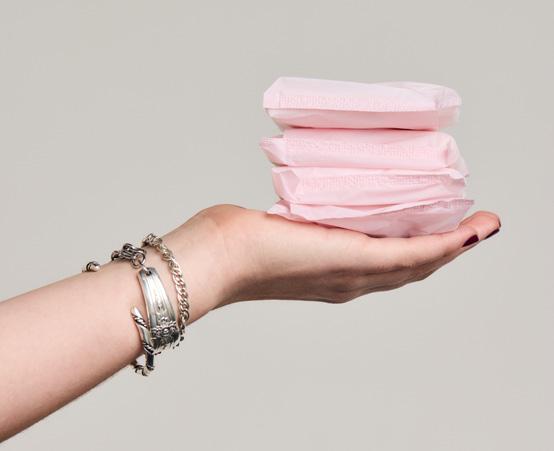
The Archer School for Girls
11725 Sunset Blvd.
Los Angeles, CA 90049
Editor
Rachael Uriarte
Director of Communications & Strategic Marketing
Associate Editors
Amanda Ryvkin
Associate Manager of Communications & Strategic Marketing
Sarah Rafiqi
Communications & Strategic Marketing Coordinator
Copy Editors
Archer Advancement
Archer Admissions
Design and Layout
Rachael Uriarte
Photography & Illustrations
Archer Communications
Archer Athletics
Rebecca Aranda
Thali Carneiro
Tracy Nguyen
JD Renes
Anastasiya Sazhina
Board of Trustees 2024–2025
Frank Marshall, Co-Chair
Tiffany Smith-Anoa’i, Co-Chair
Melanie Poturica, Vice Chair
Tracey Briscoe Monroe, Treasurer
Janet McKillop, Secretary
Prem Akkaraju
Kelli Bernard
Justin Chang
Conly Chi
Robin Formanek
Patrick Fu
Amanda Goldberg
Paloma Jimenez
Marian Lee
Janice Min
Hannah Minghella
Melissa Rawlins
Mitzi Reaugh
Brian Rosenstein
Perry Wallack
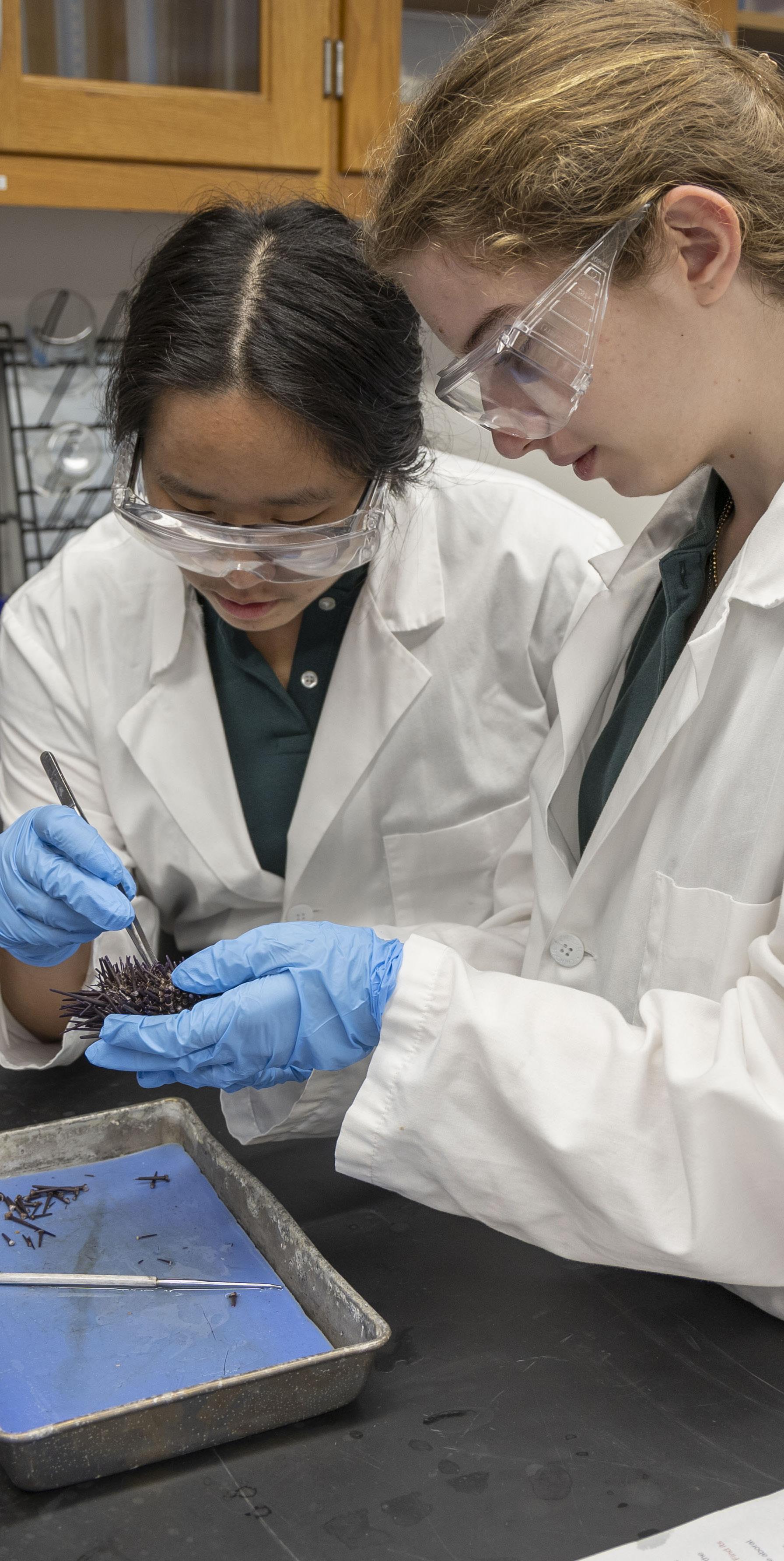

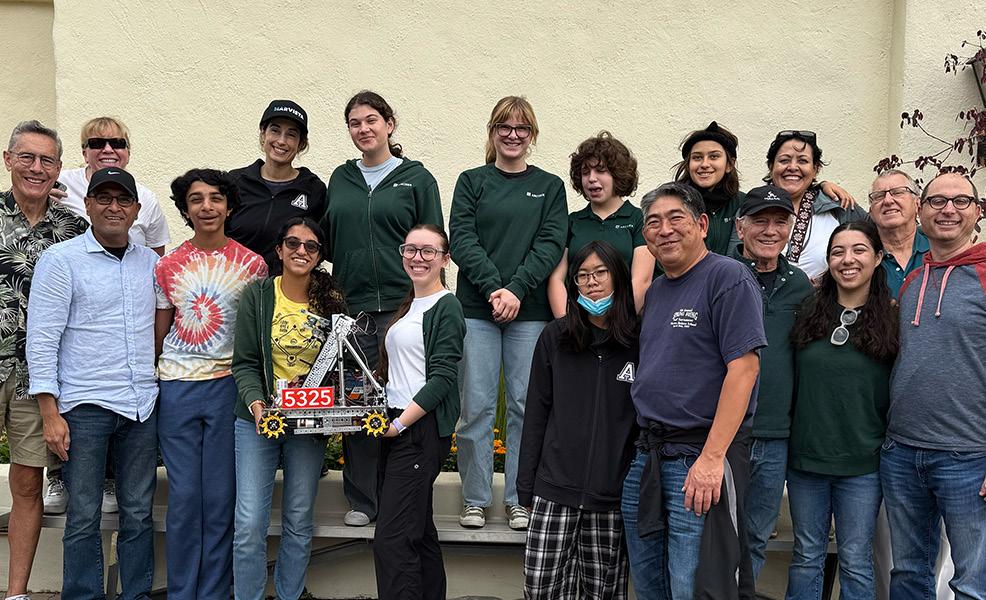

The Middle School and Upper School robotics teams attended the First Tech Challenge robotics meet on Sunday, October 27, 2024. Both teams were excited to try out the robots they have been working on throughout the semester. Not only was this the first time we've had a Middle School team participate in the First Tech Challenge, but we also had a record number of Middle School attendance for any robotics competition. This was the first meet of the season, and students have continued to work on their robots in preparation for more meets this year.

LEADERSHIP
The environmental documentary Green Superheroes 2030, which features Katia T. ’27 and Chloe V. R. ’27, has won The Green Apple Environment Award for its impact. Katia received the International Green Apple Award at Kensington Palace in London and will be presented as an International Green Ambassador in April at St. Paul's Cathedral.
Twenty-six journalism students, including staff members of both The Oracle and Hestia’s Flame, attended the For the Love of Journalism convention in Philadelphia last November. The convention is sponsored by the Journalism Education Association and the National Scholastic Press Association.
All of the students attended a wide variety of sessions on everything from building staff community to social media journalism, and they also had time to sightsee and tour the city. During the convention, some editors presented sessions with Archer's Head of Scholastic Journalism Kristin Taylor. Oona S. ’26, Francie W. ’25, and Surya P. ’25 presented “Cultivating Columnists, Producing Podcasters” to showcase The Oracle’s approach to guest columnists and podcasts. Meredith H. ’26, Emily P. ’26, Lola T. ’26, and Olivia H.-G. ’26 gave a presentation on “Obtaining Press Freedom at Private Schools.”
In the fall, the 7th grade class visited The Broad Museum to experience Mickalene Thomas’ All About Love exhibit. While there, students made connections between the dynamic visual storytelling in Thomas’ art and their summer reading of “Piecing Me Together” by Renée Watson. The students explored themes of identity, love, and self-expression, recognizing how Thomas’ vibrant, multimedia pieces mirrored the complex characters and narratives in Watson’s novel. This field trip allowed students to see storytelling through a new medium, sparking thoughtful conversations about belonging and identity while deepening their appreciation for both art and literature.

Out of 150 submissions to this year's “The Show Must Go On” Teen Monologue Festival at A Noise Within Theatre, Bryce C. ’25 was selected as a top ten Finalist, recognizing her high level of skill and professionalism in the performing arts.
Bryce was invited to a Finalists Masterclass taught by A Noise Within company actor Riley Shanahan. Bryce was also invited to enjoy an exclusive luncheon and attend a performance of August Wilson's “The Piano Lesson” at the theater. In October, Bryce had the opportunity to perform in the Finalists’ Main Stage Performance.

Nika H. ’29 and Kate R. ’28 have been named in the Top 300 Junior Innovators in the 2024 Thermo Fisher Scientific Junior Innovators Challenge for their joint project “Material vs Matter: a study of what materials can best block secondhand smoke inhalation” submitted in the 2023-2024 L.A. County Science and Engineering Fair. They were selected from nearly 2,000 competitors nationwide, all of whom had to place 1st or 2nd at their local science fair to qualify for this national competition. This marks Archer's 4th appearance in the Top 300 since 2017.
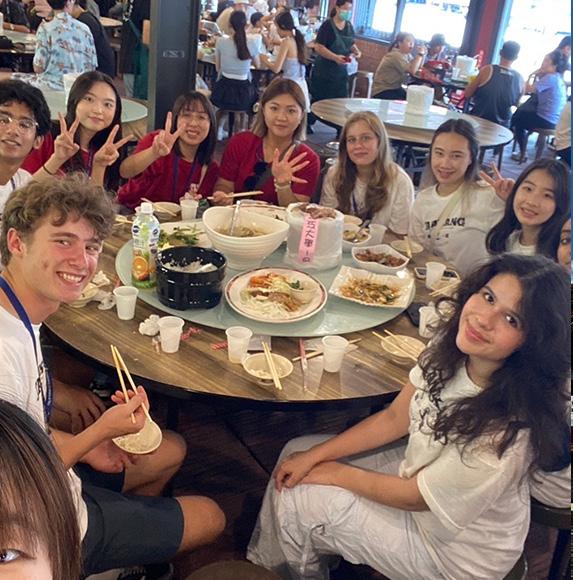
Belén H. ’26 and Dakota T. ’26 were awarded scholarships by the U.S. Department of State to study Chinese in an immersion program in Taiwan for seven weeks this past summer. According to the website, the U.S. Department of State National Security Language Initiative for Youth (NSLI-Y) program is part of an interagency initiative to ensure that Americans are learning and mastering critical languages to foster international cooperation, build mutual understanding, strengthen national security, and bolster the economy.
Belén completed her Chinese language courses at Archer in 9th grade and has since been taking the Chinese Immersion Intensives class with Ms. Gosselin. Dakota is currently in the Advanced Study Chinese class with Ms. Chen. Belén stayed with a host family in Taipei City. Meanwhile, Dakota was placed in Hsinchu City and lived in a university dorm during the week and with host families during the weekends. Both students attended programspecific classes at local universities, where they were challenged to speak only in Chinese. In between classes and 2-3 hours of homework a night, Belén and Dakota had the freedom to explore their cities, meet up with new friends, and spend their stipends provided by NSLI-Y. In addition to developing their language skills, both students gained immense value from the immersive nature of the program.

L.A. Times Inspirational Women Forum Shares Stories of Strength and Resilience
Head of School Elizabeth English spoke at the L.A. Times Inspirational Women Forum and Leadership Awards on Thursday, November 14, 2024. Ms. English was on a panel titled “The Power of Resiliency” alongside West Coast President of L’Oréal Carol Hamilton, President & CEO of United Way of Greater Los Angeles Elise Catherine Buik, and CEO and Cofounder of ConnectTo Communications Araksiya Nadjarian. Ms. English shared her experiences with the gender pay gap, the challenges she faced on her journey to becoming a head of school, and the importance of a supportive network for women to achieve high positions.

The newly minted Archer South Asian Affinity Space recognized Diwali, the Festival of Lights, in November. Club presidents Surya P. ’25, Beyla P. ’27, and Shanthi S. ’27 presented to Upper School students about the origins and meanings behind Diwali. Then, students from the affinity group hosted a Diwali celebration featuring traditional Indian foods and drinks, such as samosas and chai, and participated in henna and rangoli-coloring pattern stations.

National Hispanic and Latine Heritage Month started at Archer with a flurry of color. Mexican folklorico dance troupe Grupo Folklorico La Rosa graciously visited Archer on Thursday, September 14, 2024, to do a special performance in the Historic Courtyard. Hermanas Unidas Exec Board members announced the performance in an Upper School meeting earlier in the week, and gave a formal introduction for the troupe on the day of the performances. Students, faculty, and staff alike were treated to traditional folk music, dances, and attire from the Mexican states of Veracruz, Chiapas, and Jalisco. In between sets, the group’s director, Maria Antonia Villalobos, invited the audience onstage to learn the Jaliscan dance la raspa. She also sang the classic song Cielito Lindo (“Beautiful Heaven”) while her husband Carlos played the guitar.
Hermanas Unidas continued Archer’s Hispanic and Latine Heritage Month celebrations with a presentation in front of Middle and Upper School. They announced the year’s theme: Pioneers of Change. To fit with the theme and in honor of the Olympics this year, student presenters highlighted Olympians and Paralympians from Latin American countries and shared some of their winning moments. Additionally, Hermanas’ Executive Board also shared the ways they stay active.
Hermanas Unidas and the World Language Department also hosted a Hispanic & Latine Heritage Month Festival. Festivities included performances and activities such as traditional craft-making, malabares (soccer tricks), and games of Lotería. Students, faculty, and staff brought traditional food and drinks from Hispanic and Latine cultures and participated in a Desfile de Moda, or fashion show, to model traditional Latin American clothing.
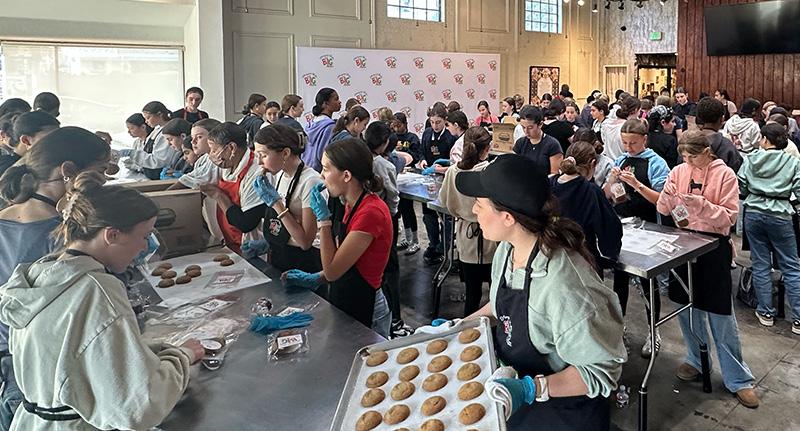

The 7th grade class learned about the complex issue of food insecurity in mentorship and class meetings in the fall semester. In particular, they focused on the "Five As" of food insecurity: Availability, Accessibility, Adequacy, Acceptability, and Agency. They turned their knowledge into action by volunteering at Our Big Kitchen L.A. (OBKLA) on Tuesday, November 19, 2024, as part of a service learning project.
The event was a huge success, as 84 students and nine mentors worked to prepare, cook, and package 450 meals and 1,000 cookies in just two hours. These nutritious meals were delivered to community members right here in L.A. who are experiencing food insecurity. OBKLA sent each volunteer off with a package of cookies and directions to pay it forward. Students gave their cookies to their bus drivers, teachers, and siblings to help brighten their days.
On Wednesday, October 2, 2024, the Middle School Garden FLX students released painted lady butterflies with the help of Head of School Elizabeth English. The classes raised these butterflies since they were caterpillars, watching them through their developmental stages: growing, forming chrysalises, and eventually emerging as full-grown butterflies. Faculty and staff joined the students to watch the beautiful moment as the butterflies were released into our Archer Garden ecosystem.

In October, Rabbi Zoe Klein and Rabbi Jaclyn Cohen from Temple Isaiah visited Archer to present to Middle School and Upper School students, respectively. The Jewish Student Union (JSU) board gave short welcome addresses and introduced the speakers. In both presentations, the rabbis introduced students to the High Holy Days, a monthlong season of religious holidays in Judaism, beginning with Rosh Hashanah (the Jewish New Year), and continuing with Yom Kippur (the Day of Atonement), Sukkot (the Festival of Booths), and Simchat Torah (the conclusion and restarting of the annual cycle of reading the Torah). While Rabbis Klein and Cohen discussed specific traditions associated with the Holy Days, such as the blowing of the shofar (an instrument made from a ram’s horn) on Rosh Hashanah and fasting on Yom Kippur, they also highlighted universal themes of the season, including reflection, renewal, and how to make amends. Students were given time at the end of each presentation to ask questions. After leaving the presentation, students had the opportunity to “sweeten the new year” by eating apples and honey, which were generously donated by parents.
Two-time World Cup Champion (and 2021 Archer Commencement speaker) Julie Foudy once said, “Leadership is not positional, it’s personal.” At Archer, leadership is not about titles—it’s about mindset, action, and courage. This year, Archer Athletics took a bold step forward by joining the Gold Coast League, embracing a new level of competition that demands more from our student-athletes.
This transition wasn’t about chasing titles or proving dominance. It was about aligning our program with the very heart of Archer’s mission—challenging girls to discover what they are capable of and developing the skills necessary to stretch toward their possibilities. For years, our teams dominated the Liberty League, but as victories became more routine, the opportunity to truly stretch and grow diminished. Greatness doesn’t emerge from comfort; it’s forged in the moments that test us, that ask us to reach further, to think differently, and leverage the resilience to push through.
That’s why this shift is more than a change in competition—it’s a defining moment, an invitation to RISE (Reach, Inspire, Strengthen, and Execute).
At Archer, coaches challenge and support athletes to RISE—these principles define our athletic philosophy. The Gold Coast League provides the ideal proving ground for this work, where student-athletes are no longer just competing, but also evolving as leaders who meet the challenge. And this season proved that Archer athletes are ready to do just that. Against more competitive opponents, Archer athletes are learning to problem-solve under pressure, stay composed in the face of adversity, and execute when the moment demands it. These are not just lessons in sport; they are lessons for life.
Despite the inevitable growing pains of entering a more challenging league, Archer teams stepped onto the field, court, and course ready to embrace the challenge.
This fall season was not about easy wins or comfortable competition. It was about learning to rise—to meet challenges with courage, to embrace setbacks as learning opportunities, and to recognize that true success is not just measured in championships but in character.
In the Gold Coast League, Archer athletes aren’t just playing—they’re growing. The move up has demanded more, but it has also offered more—more opportunity, more resilience, and more leadership.
GO PANTHERS!
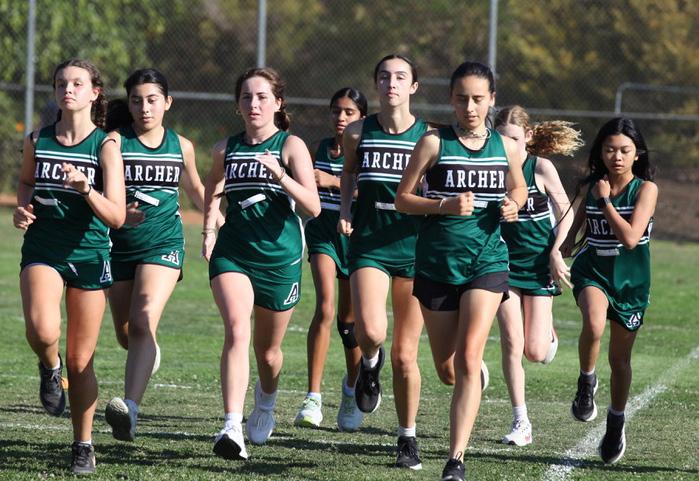

Kim Smith Athletics Director

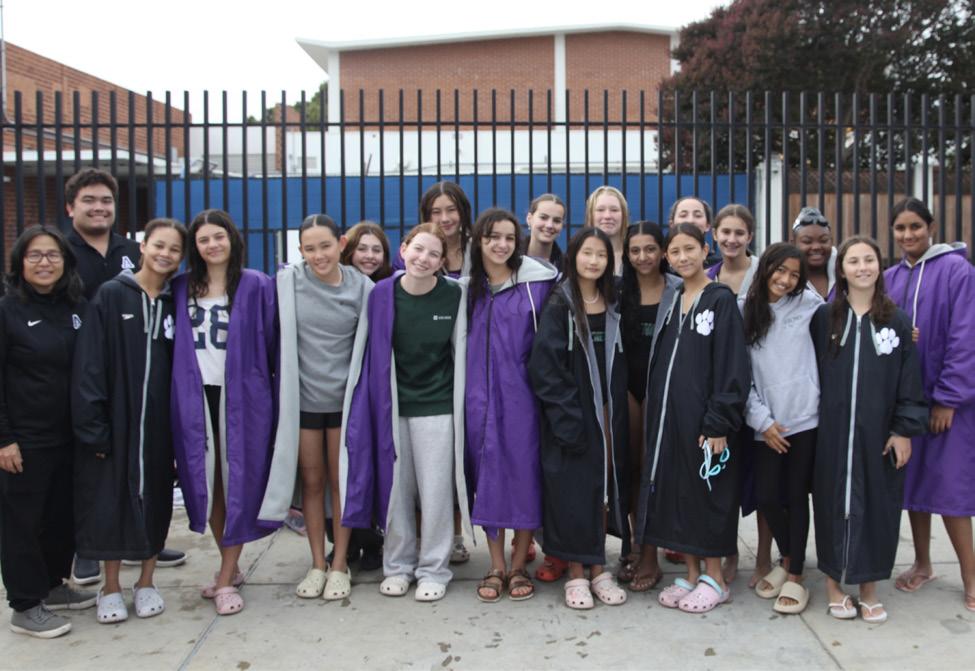
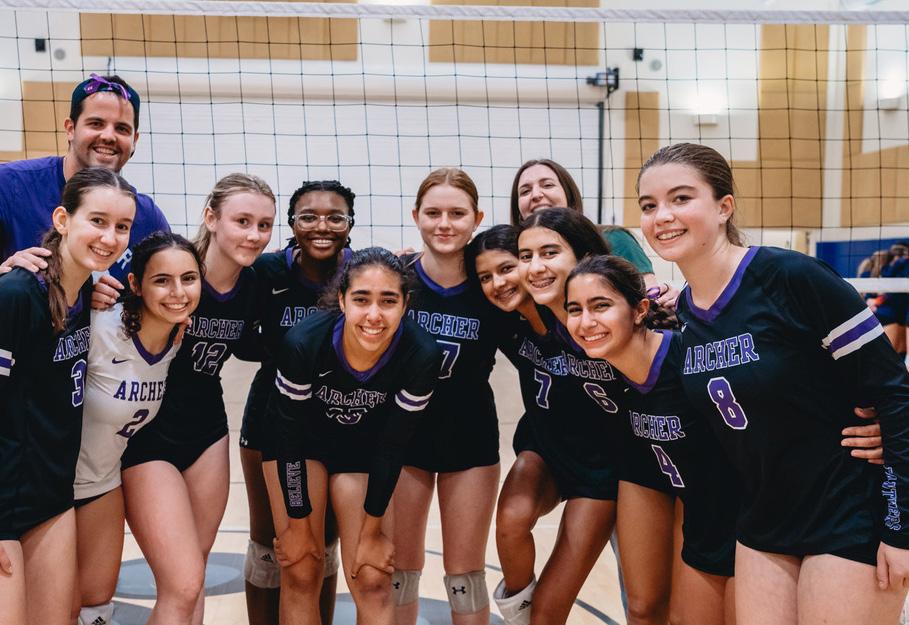
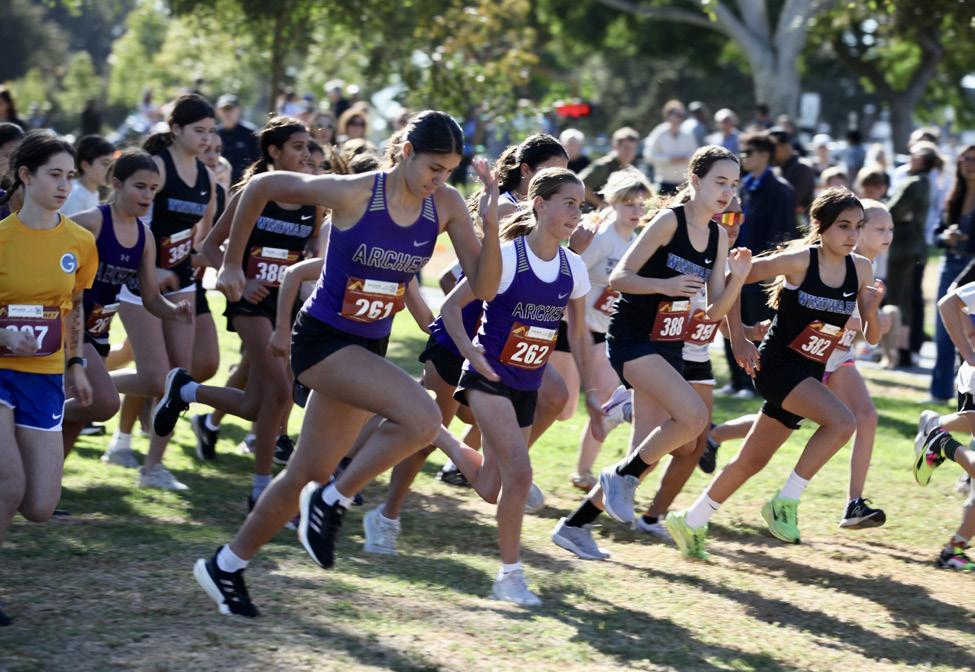
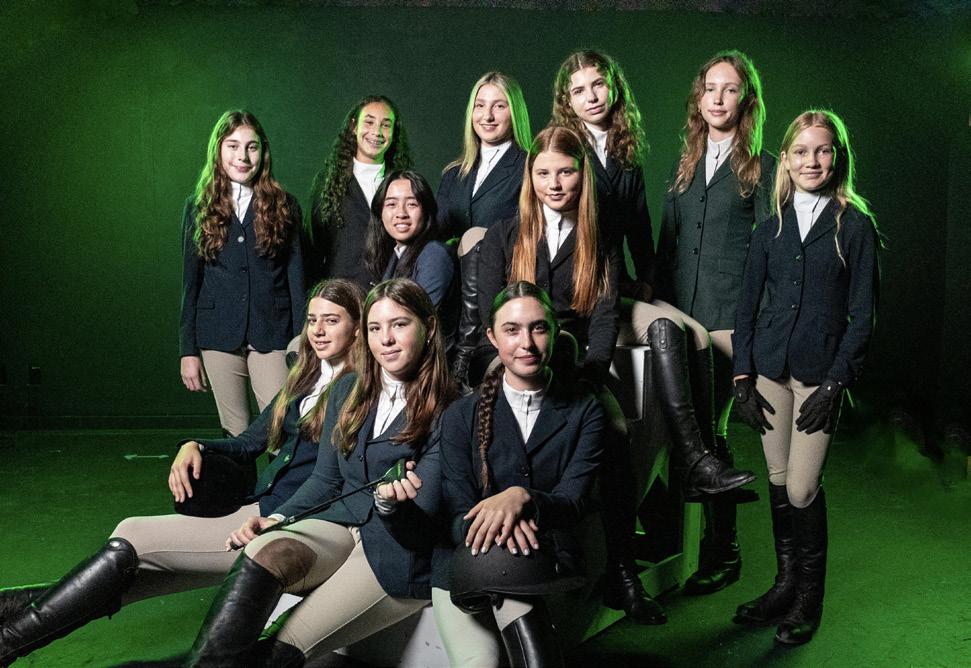

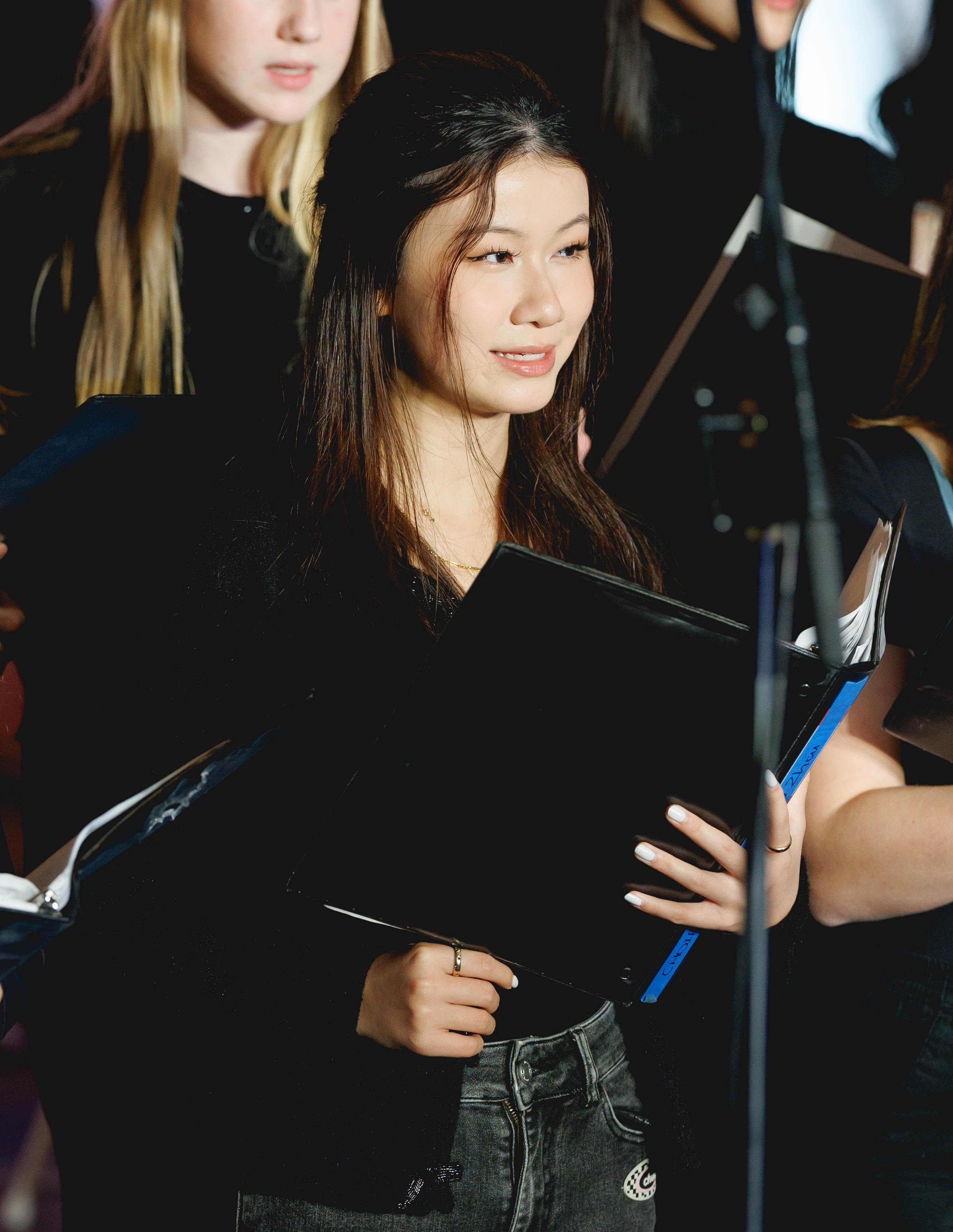
Archer’s 2025 Winter Concert took place on Wednesday, February 12, and Thursday, February 13. The theme of the concert was “Come Together.” The concert was a night of joy and celebration—it was about the way music can facilitate coming together as a community to witness and acknowledge the hard work, dedication, and musical talent that exists and has persevered in the Archer community.

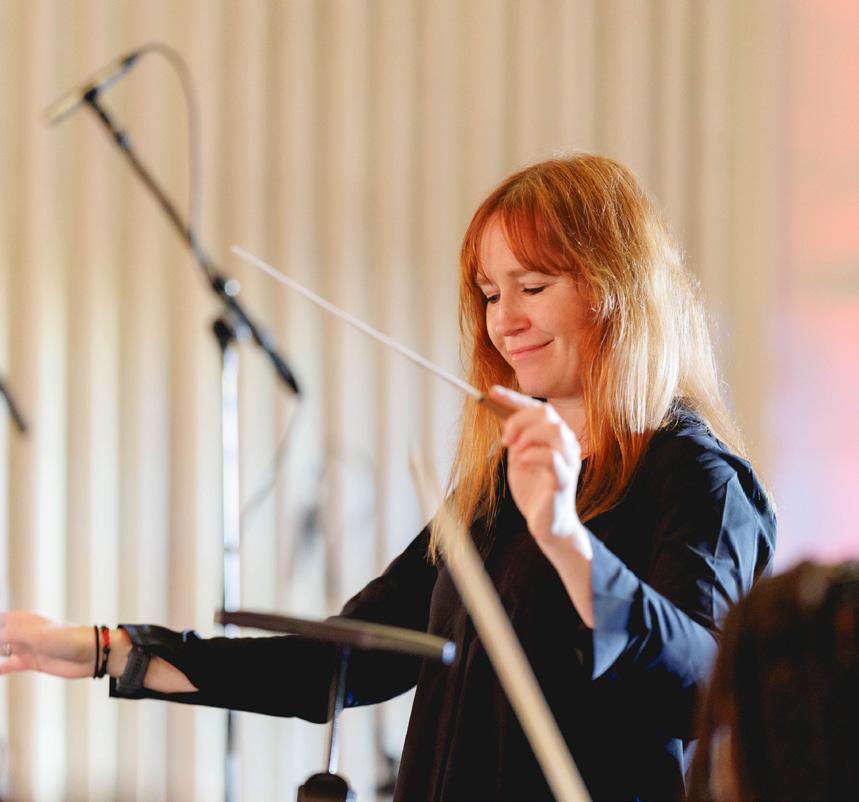
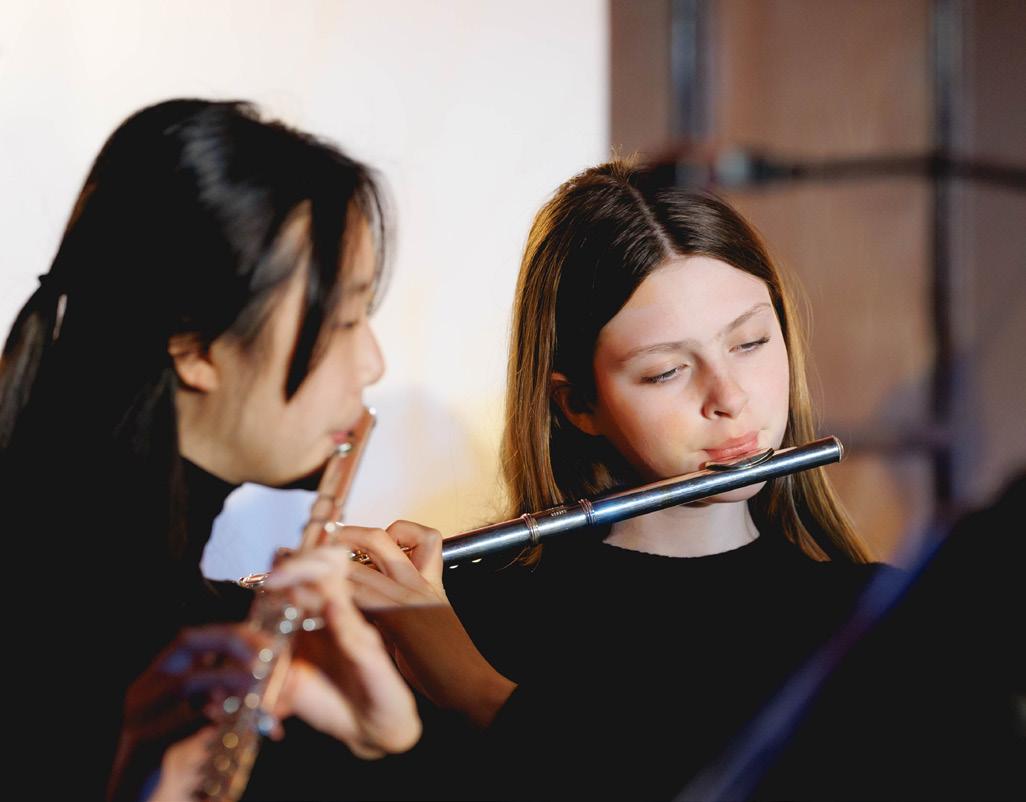
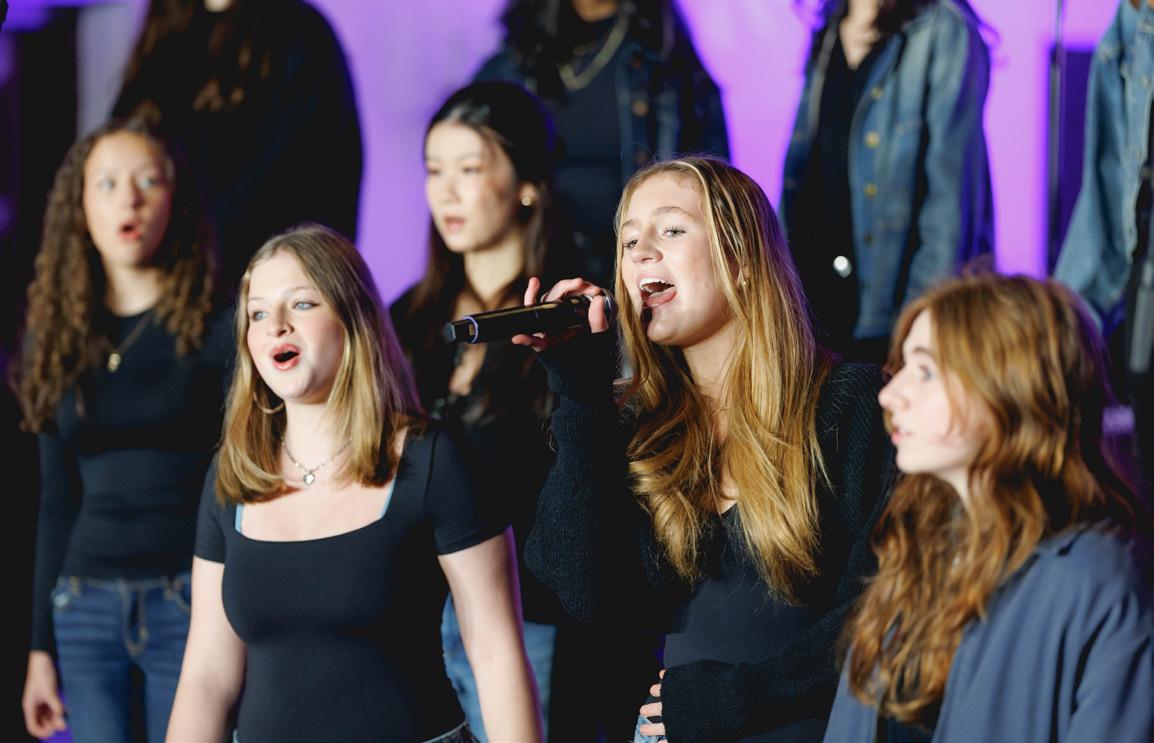
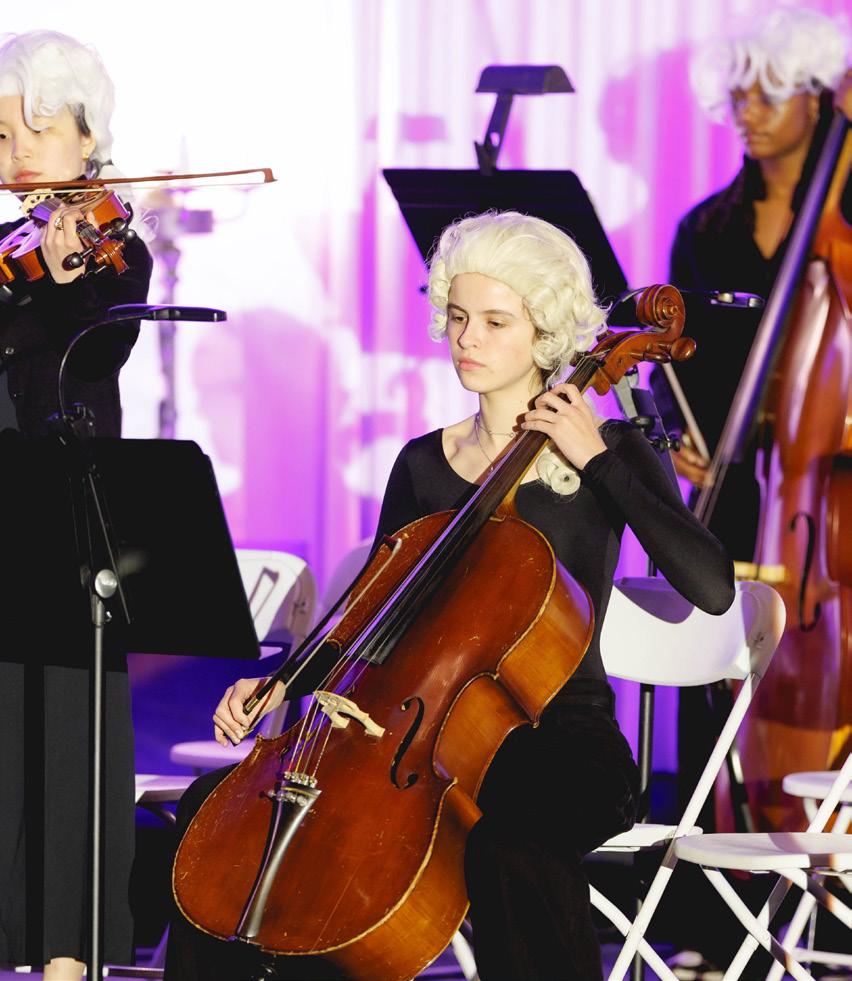
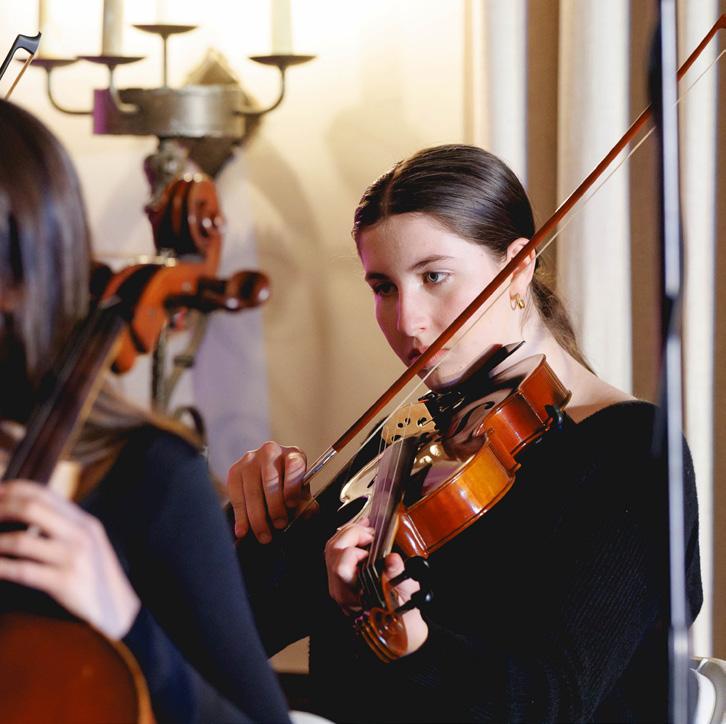



The tale of plucky Hetty Feather was brought to life on stage by Middle School students in the Meridith Baer Blackbox Theater. This past December, Archer community members were invited to join Hetty on her escape from the Foundling Hospital. They trembled, thrilled, and cheered as Hetty went on her journey facing Matron Stinking Bottomly, discovering the traveling circus, and braving the scary city. Through it all, Hetty overcame hardships in the search for her real mother and a true family of her own.
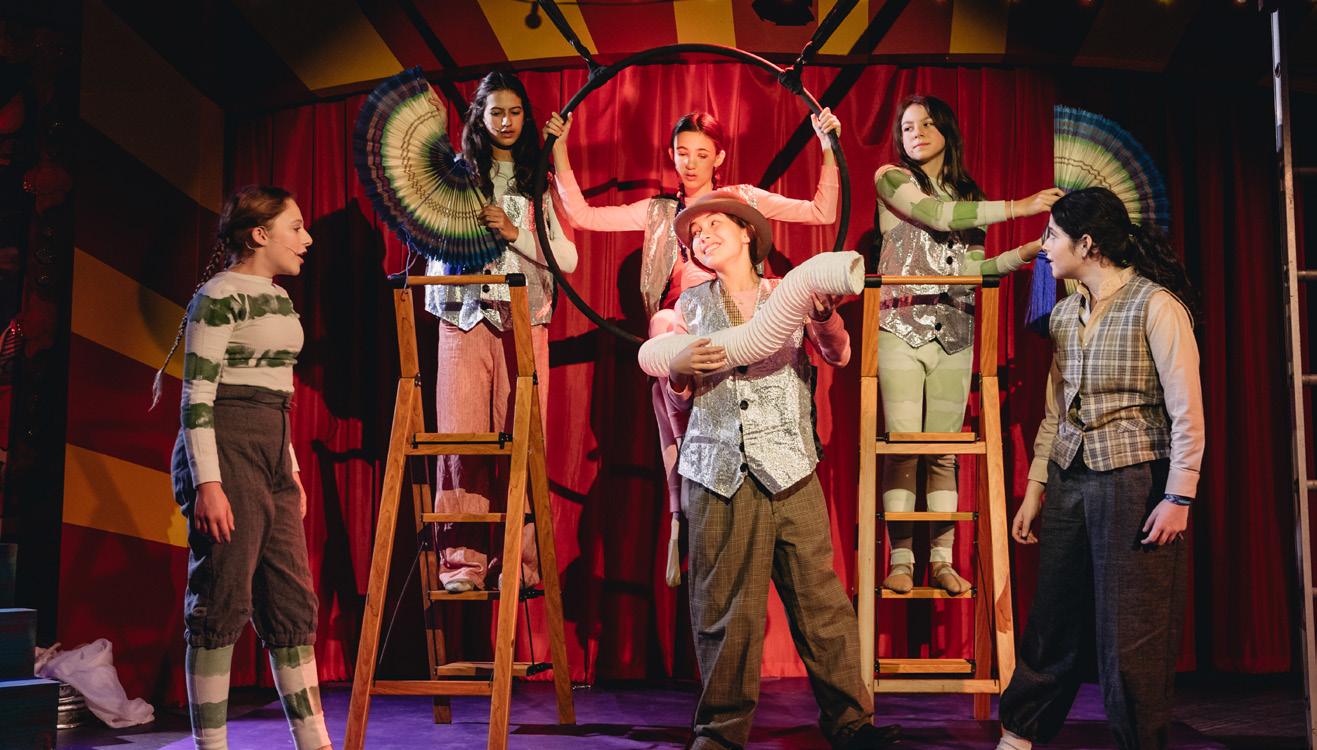



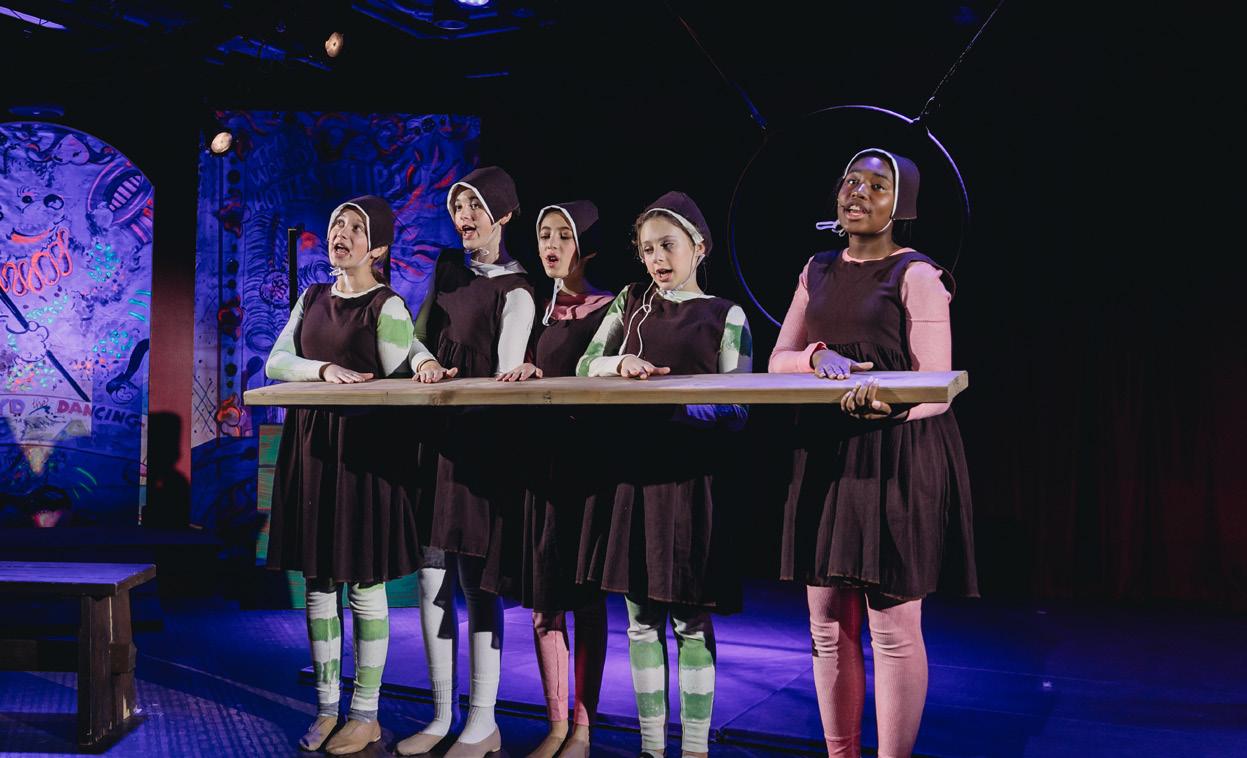
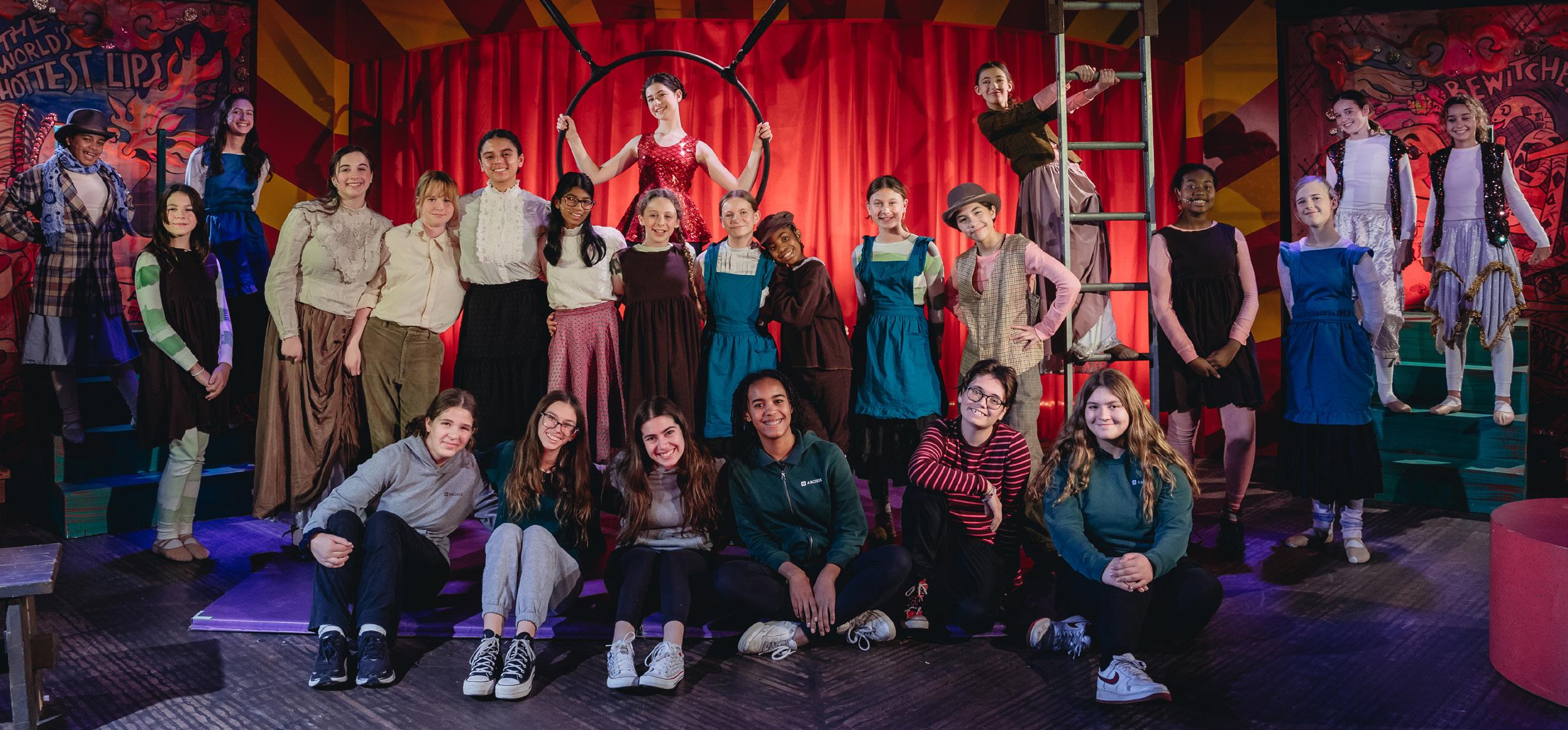

In the fall, the Kennedy/Marshall Amphitheater was transformed into a Greek paradise for the Upper School musical ‘Mamma Mia!’ Cast members told the vibrant, feel-good story about a young bride-to-be who secretly invites three men from her mother’s past in hopes of finding her father. The audience was thrilled with timeless hits from ABBA, including "Dancing Queen" and "Take a Chance on Me." The upbeat show explored love, family, and friendship with humor and heart. It was a celebration of life set to some of the most beloved pop songs of all time.
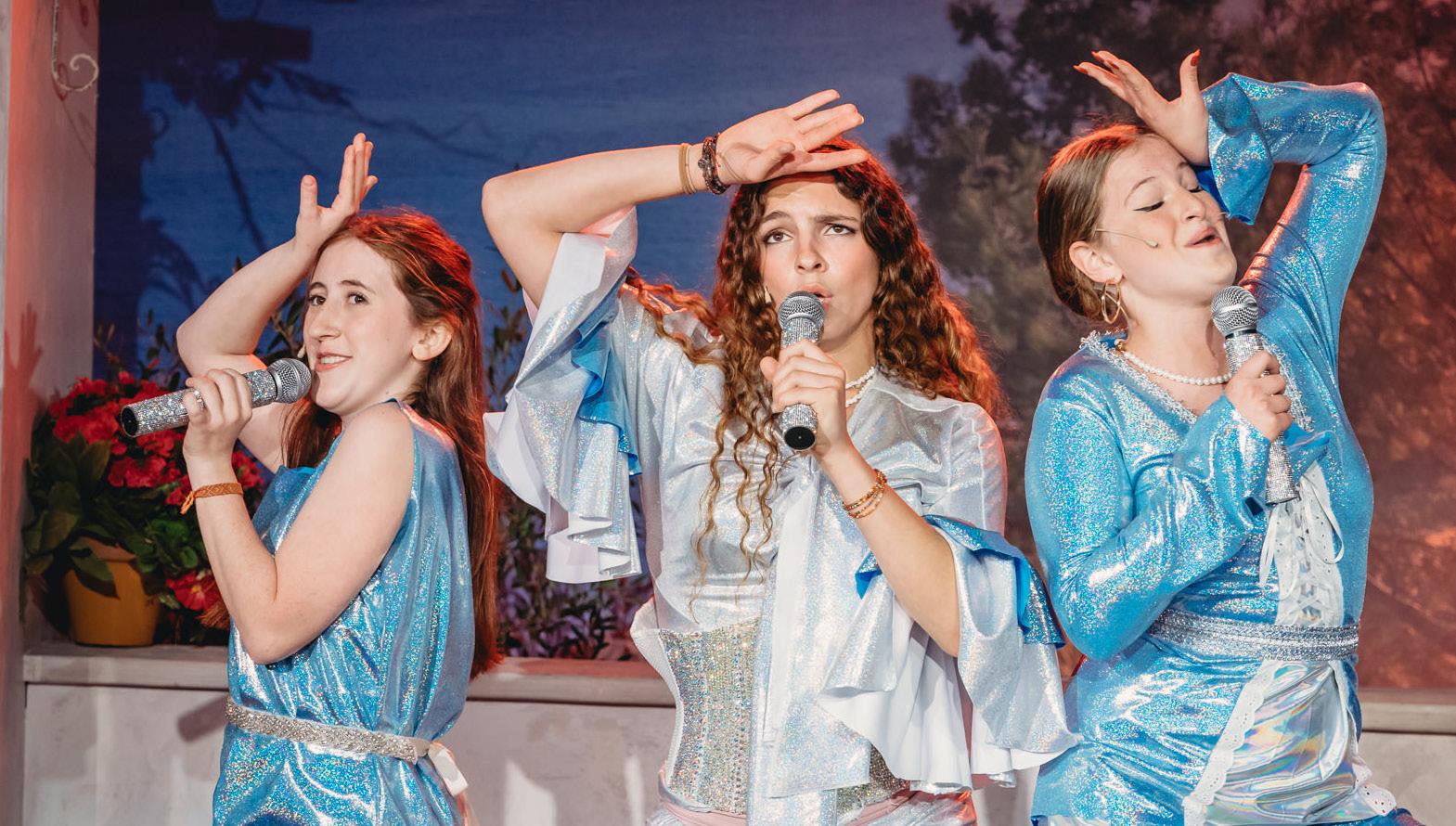

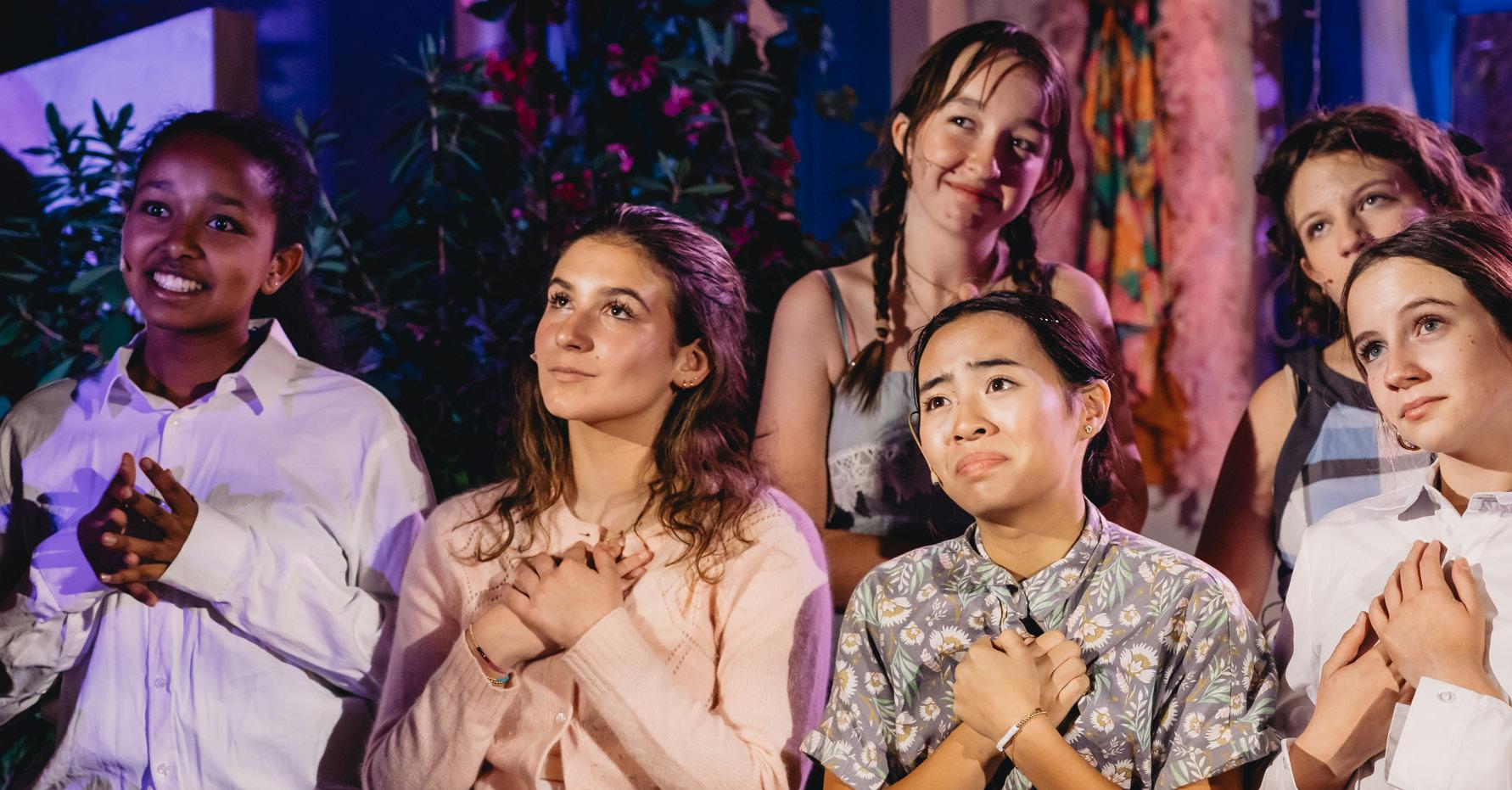
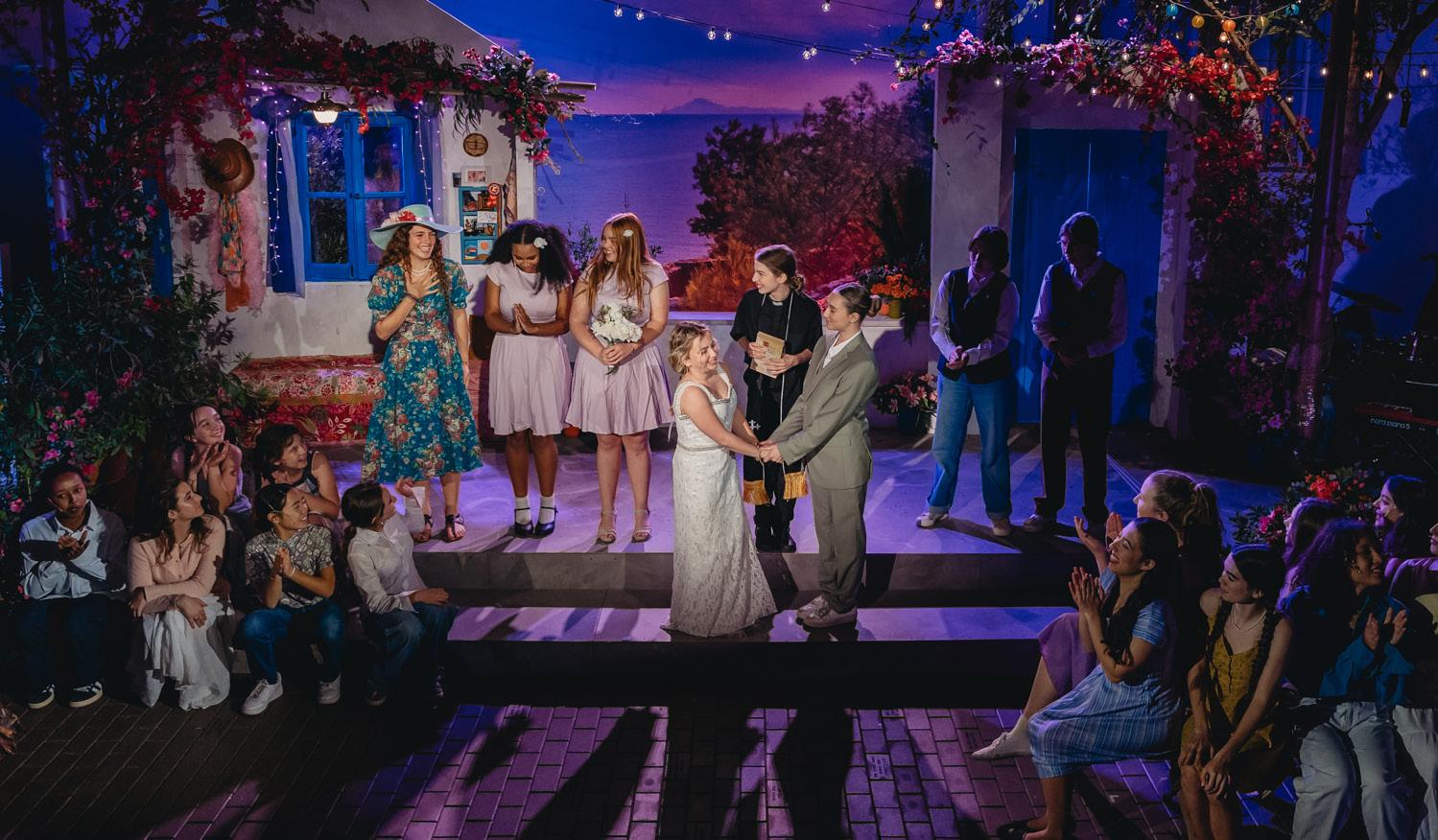


When picturing
the hallway of an all girls school, you might imagine clusters of girls, packed next to each other, the corridor filled with judgemental side-eyes and cruel whispers.
Having been a part of Archer’s Ambassador Leadership Team since 9th grade, I have gotten the opportunity to hear the concerns of many prospective families while leading tours and Discover Archer events. At the end of a tour, leading the families back to the Admissions lobby, I am often asked questions like, “What is it like going to an all-girls school?” “Are there mean girls?” or “What is the drama like?” Greeting parents in the courtyard at Discover Archer, I have heard these same questions in the same uncertain tone.
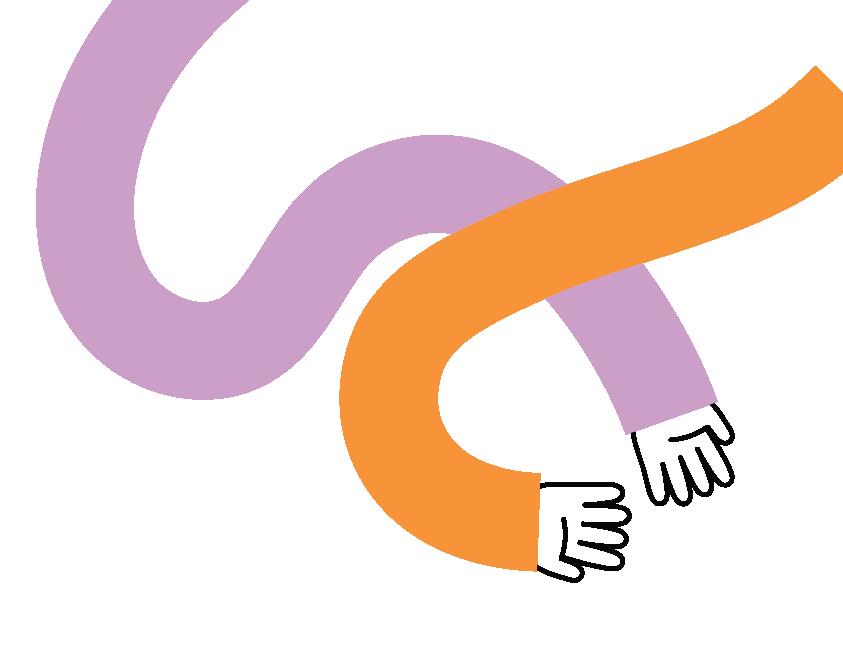
encapsulate the nature of girlhood at Archer. That’s the point. The superficial picture of this type of all-girl environment fails to fully illustrate the complexity of this type of education. Every Archer girl will have a different social experience here. Every Archer girl will come to define girlhood in their own way at Archer: that’s what makes it special.
From Regina George
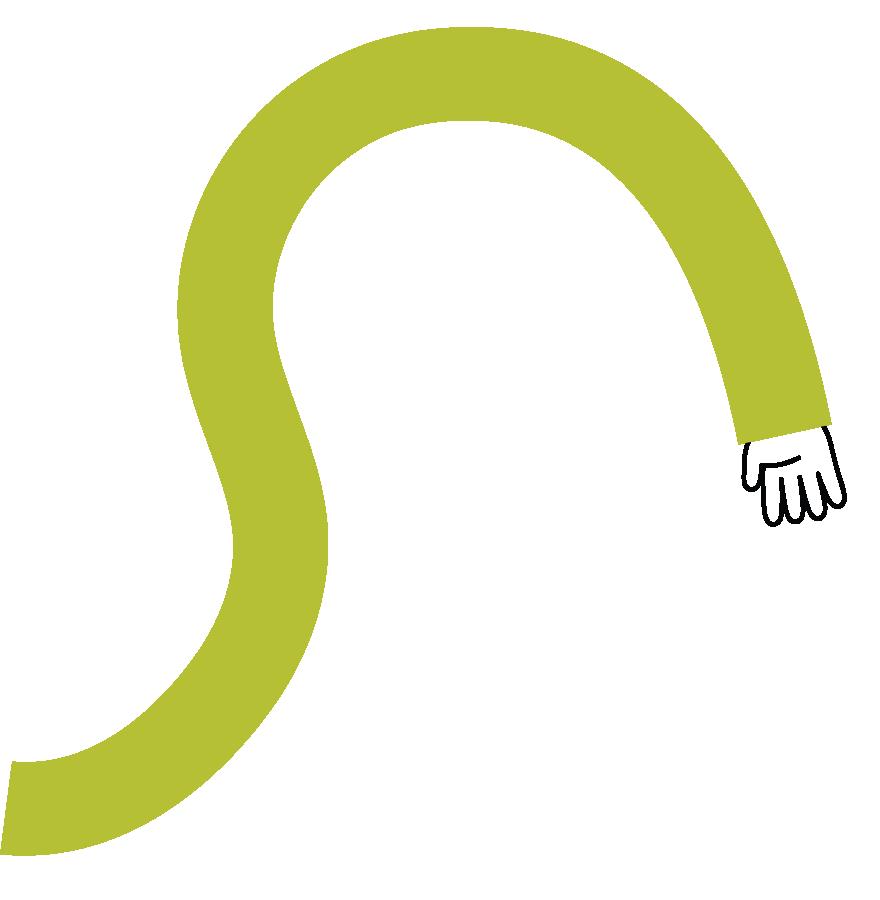
Since 6th grade, when I came to Archer, I have had the privilege of forming female friendships that I believe will last a lifetime. These female friendships are the ones I dreamed of having as a little girl; friendships where you travel together, dance together, stay up laughing until 3 a.m. at sleepovers, and know each other's thoughts from eye contact. Not only have my female friends brought out the best in me by pushing me in dance or cheering me on before I present in class, but they have also been greatly supportive during big changes in my life. My nanny, Amanda, passed away from a long fight with stage four breast cancer in 2022. In the wake of this loss, I felt inspired to co-found and co-lead an organization and Archer club dedicated to breast cancer awareness called Empowering Hearts, which I launched in 2024. My friends knew how much this club meant to me, as Amanda was like an additional parent for me at home for 14 years. Some of my friends even met Amanda once or twice at my house. They have been incredibly supportive to this day and attend all club meetings. I am forever grateful for the compassion and care they’ve extended, always willing to lend a helping hand or listening ear.
This year, my twin siblings started their first years in college. I am extremely close

in the amphitheater at 12:30 p.m. during lunch.
Clinical psychologist and author Dr. Lisa Damour’s work focuses on the mental development of young women and teenage girls. She has visited Archer frequently, and she described a familiar image she remembers seeing on campus. “I saw something at Archer I've never seen at another school, [...] girls literally skipping down the hallway between classes,” Damour said. “It gives me goosebumps to remember it, and it gave me goosebumps when I saw it, because what that tells me is that there's a tremendous sense of safety. And once you have safety, all good things can happen. And so my strong hunch is the safe environment of Archer cultivates strong friendships and girls
feeling that they can be their true selves at school and with their peers, and in that, find the people who really are a great fit for them.”
Whether it be from conversations on Zoom at 11 p.m. or listening to them rant about how they feel about the future, I have also learned so

"These uplifting, supportive, and nurturing effects of female friendships are most beneficial when the friendships have a healthy dynamic."

with girls is that they can have a sense that they're supposed to have a coherent friendship group—that [the] crew of women who support them should all be friends with each other,” Damour said. “Occasionally, that works well. But in my experience, friendship groups are really hard and don't always have as much fun as they should or as everybody thinks they're going to … having a range of female friendships [is] important. I also think that the way it often plays out realistically is that, especially as women age, they have one-on-one friendships with many supportive women.”

Damour said she observes excellent female friendships in both co-ed and single-gender schools, but further notices a special environment that all-girls schools foster.
“What I really love about seeing single-gender environments is that, in my experience, they open up a very wide range of what it means to be female,” Damour said, “and I think in doing that, allow girls and young women to explore sides of themselves that they may not explore in co-ed environments, and to connect with other girls and young women around sides of themselves that they may not feel that they have the freedom to get to know in schools with boys.”
When picturing the hallway of an all-girls school, I hope you can now zoom out of the clique of “mean girls,” and envision girls running through the halls to see each other, collaborating on a project in class, and waving goodbye to each other at the buses every day.
"Not only have my female friends brought out the best in me by pushing me in dance or cheering me on before I present in class, but they have also been greatly supportive during big changes in my life."

WORDS BY SARAH RAFIQI
ILLUSTRATIONS BY THALI
CARNEIRO
The challenge with talking about girlhood is finding a shared language with which to discuss it. What is the thread that connects your perception of girlhood to that of your friends, sisters, mothers, and grandmothers? Some may argue that girlhood can be found in the toy aisle, a carousel rack of clothes at the department store, or a game played on school blacktops and in living rooms. But none of these examples encapsulate the varied brilliance of what it can mean to be a girl. Others may look to the girlhood stored in their personal memories of childhood—playing, learning, and growing—but these unique experiences can never be fully shared or translated into another person’s experience. In the effort to quantify what girlhood means, only one thing seems universal: girlhood is transient. Girlhood is a snapshot of time in a woman’s life when she is growing into herself.
The transition that marks girlhood has always been one of great cultural intrigue. There is a social spectacle surrounding girlhood, with movies and TV shows like “Mean Girls,” “Euphoria,” and “The Summer I Turned Pretty” all vying to authentically encapsulate what this period in a young woman’s life is all about. Some artists have dedicated their careers to turning their lens onto girls—director Sofia Coppola and actress Molly Ringwald became household names for their portrayals of young women on screen. Teen girl magazines in the early 2000s appealed directly to this demographic, trying to capture an amorphous feeling onto glossy pages. These mediums and their audiences became mirrors of one another. As TV, movies, and magazines tried to reflect the interests of young women and girls, simultaneously, young women and girls tried to embody what they saw in that media, emulating the looks of models and actresses through
hairstyles, fashion, and dieting. For better or—more often—worse, girls had a benchmark for how to look, how to act, and how to identify themselves.
During the ’90s and ’00s, the identity of girlhood in media was heavily segmented, putting the girls in media and those consuming it into neat boxes. The Spice Girls were a clear example, as each artist represented a different core personality trait: posh, sporty, scary, ginger, and baby. The quad of friends in “The Sisterhood of the Traveling Pants,” a coming-of-age adventure based on Ann Brashares' best-selling novel, was another example of a girl group with varying personality tropes. Girls consuming these media could identify with a character they felt best represented them. In doing so, narrow definitions of girlhood were conveniently communicated en masse. You could be a girly girl or a sporty girl, but rarely could
In the effort to quantify what girlhood means, only one thing seems universal: girlhood is transient. Girlhood is a snapshot of time in a woman’s life when she is growing into herself.



you be both. For an entire generation of girls, whichever they chose came with its own benefits and pitfalls.
Each decade has had its own characterizations of femininity, from traditional to corporate, rebellious to consumeristic. In the 2000s, hyper femininity was simultaneously popularized and treated as sinister. In popular culture at the time, girly girls, the idealized stereotypes of what it meant to be a girl, were reduced to being either shallow and ditzy like Paris Hilton or mean and spiteful like Regina George. Even the 2001 film "Legally Blonde," a rare exception which celebrates its girly girl protagonist, acknowledges and directly confronts the negative stereotypes of hyper feminized women during the time period. On the opposite end of the spectrum, a stalwart of modernday girlhood canon, 2004’s “Mean Girls” features a main character, Cady Heron, whose moral descent is visually marked by a plastic, fantastic feminization. From 'nerdy' to 'popular,' the further down the rabbit hole she falls, the more effeminate her clothes become and the more makeup and hairspray she plasters onto herself. At the end of the movie, after atoning for her mistakes, Cady returns to her true self. Her female friendships and feminine clothes are shed off like a snake skin, indicating that there was nothing positive Cady could have gained from her tryst down girly lane. The cultural mistrust of femininity during the aughts began to shift as the decade ended and the means of media production transferred to their core audience: teen girls.
The rise of social media in the 2010s introduced a new medium that transformed girlhood once again,

Rather than a boardroom of media moguls deciding what to print, girls online get to decide for themselves what accurately reflects the reality of their girlhood.
this time into performance art. The set of standards for girlhood were transferred from magazines and televisions onto hand-held devices. Suddenly, girls could not only see what was expected of them, but they could also participate by posting themselves fulfilling those expectations. In doing so, girls could gain social capital and feed into the loop of how social media algorithms defined girlhood. Instagram and YouTube became particularly fertile ground for self-expression. Instagram was initially populated with food photos until fashion and beauty bloggers flocked to the space, forever shifting the platform into one of influence. Meanwhile, YouTube featured video blogs (“vlogs”) that showcased lifestyle content. As users realized these platforms were places for networking and building portfolios, they became more polished spaces and a whole new career was formed: the social media influencer. Many of the influencers on Instagram and YouTube were young women who spoke directly to girls and shared their vision of what girlhood should be. Bethany Mota’s YouTube videos chronicling her school day morning routines and clothing hauls garnered millions of views from young girls hoping to emulate her.
TikTok tap danced onto the scene in 2017, becoming the new go-to app for young people by the end of the decade. For many young girls, TikTok was a breath of fresh air from the overly curated pages of Instagram and the long-form content of YouTube. People could come on the platform and make short, spontaneous videos driven by pop culture trends. Some of the earliest stars of TikTok were teenage girls like Charli D’Amelio and Addison Rae, who participated in and inspired dance trends. Once again, girls were introduced to a new place where they could be the creators of content as well as the consumers.
As social media users continue to add to the apps they are using, new threads to girlhood have begun to emerge. Rather than a boardroom of media moguls deciding what to print, girls online get to decide for themselves what accurately reflects the reality of their girlhood. Many of these usergenerated trends take on the task of defining girlhood. In recent years, 10step skincare routines and non-surgical aesthetic procedures have tried to erase certain aspects of girlhood altogether, like acne—girls are given the promise they can simply buy their way out of experiencing landmarks of the transition into womanhood.
Meanwhile, other trends face girlhood head-on. The year 2023 saw girls and women take to social media to assert their girlhood and revel in girl culture. The same mediums that push suffocating expectations on young women and girls also skyrocketed the popularity of trends like “Barbie-core” and “coquette,” which have been mentioned in millions of videos on social media. These trends celebrated feminine traits in a way that gave agency over to the creators. As girls and young women were the ones participating in these trends, they could indulge in their girlish tendencies without the need to hide or contextualize those interests. Women and girls could wear pink simply because it’s cute or wear bows just because they’re fun—not to signify entire personality traits. While the ’90s and ’00s had girly girls and sporty girls, 2023 had strawberry girls, vanilla girls, tomato girls, etc. Although these trends also categorized women, the trends were so ubiquitous that they were not so much personality markers as they were visual aesthetics that said, “I’m a girl.” All of a sudden, there was a loud-spoken joy to girlhood on display in our society. By reclaiming the term “girl” in pop culture, girls and women rediscovered the beauty of girlhood on their own terms.
As they reclaimed girlhood, they also reframed conversations to reflect the nuance of being a girl.
The acceptance of nuance online has allowed the highly categorized and restricted perception of girlhood to shift. Even Paris Hilton has shed her “dumb-blonde” persona while preserving the uber-girly aesthetic that made her famous. Hilton went viral for a 2024 clip at a congressional hearing in which she complimented Representative Claudia Tenney’s jacket before transitioning neatly into her testimony about the abusive nature of the troubled teen care homes industry and advocating for legislative change. Influencer Nikita Redkar has garnered hundreds of thousands of followers on Instagram and TikTok through her videos explaining complex social and political issues through a hyper-feminine filter. Redkar takes advantage of the accessibility of social media, where there is no managing editor who determines what “smart” can sound like. She challenges viewers to grapple with their preconceived notions of girlhood as she simultaneously affirms and subverts expectations.
Mass media has begun to reflect the shift in culture to a more nuanced view of girlhood. 2023 saw new coming-of-age films like “Barbie” and “Poor Things” amass critical acclaim and popularity as they explored the meaning of what it means to
be a “woman” through the lens of childlike female characters. These movies didn’t aspire to make pictureperfect protagonists, but rather, the messiness and imperfections of these characters were what defined them as girls. They represented a new era of femininity, one in which girlhood wasn’t as restrictive as before.
However, the increased nuance of femininity in culture hasn’t created a girl utopia akin to “BarbieLand.” As so many trends before it, girl culture has become overly saturated online, and the authenticity of the content has come into question. It has become harder to differentiate between what is true girlhood and what is overconsumption and caricature. With each new trend, there is pressure to buy more products to fit that aesthetic. The internet has become saturated with collages showing exactly what items each type of girl must own—Vanilla Girls drink out of white Stanley Cups and Tomato Girls wear flowy dresses, for instance. Even TikTok, which was once a haven of silliness online, has become inundated with curated influencer posts. Online trends also foster social conversation about the nature of girlhood itself. “Girl dinner,” a trend of sharing images of meals consisting of mismatched snack items, was simultaneously lauded by some for liberating girls from appearing perfect and put together all the time, while it was
condemned by others for promoting non-nutritious eating habits.
Interestingly, many participants in these social media trends weren’t girls at all. They were women in their 20s and 30s who wanted to recapture some of the joy of girlhood that they may have missed out on in earlier eras of their youth. If a girl in the 2000s didn’t want to be seen as a “girly girl” for fear of being stereotyped as ditzy, she could rediscover pink and bows 20 years later, on her own terms. The term “20-something teenage girl” became a common refrain online to describe the phenomenon of women who did not have it all figured out or who did not want to let go of their girl-selves fully. Some critics view this trend as an infantilization of women, but there is also something else at play: a nostalgia that draws women back to their girlhood.
If girlhood is a transition, then it cannot be fully understood from within itself while it is being experienced. There is an understanding that can only be had from the perspective of looking back at that time and seeing how it forms us into the women we become. While we try to make sense of who we are by determining whether we are sporty girls or girly girls, vanilla girls or tomato girls, it’s often not until we look back that we can see the full picture of our wholeness in girlhood.
If girlhood is a transition, then it cannot be fully understood from within itself while it is being experienced.


From skincare struggles to mental health challenges, being a teen today comes with a lot of questions. What actually causes acne? How do stress and social pressure affect your skin and mind? And seriously—how can you tell the difference between a bad mood and something more serious?
To get real answers, Archer students Olivia H.-G. ’26 and Ella D. ’25 sat down with three incredible Archer alumni experts: Dr. Onyeka Obioha ’05, a board-certified dermatologist who knows all about keeping skin healthy and glowing; Dr. Olivia (Liv) Tiffany ’09, a clinical psychologist specializing in teen girls’ mental health; and Dr. Loren Castellon ’10, an OB-GYN who helps patients navigate everything from hormonal health to overall well-being.
They broke down the science, debunked myths, and shared their best advice on everything from acnefighting diets to managing stress like a pro.
OLIVIA H.-G. ’26 AND ELLA D. ’25 TALK TO OUR ALUMNI EXPERTS ON DEALING WITH THE UPS AND DOWNS OF BEING A TEEN GIRL
When it comes to skincare, Dr. Onyeka Obioha is your go-to expert. An Archer alum and board-certified dermatologist in Beverly Hills, she’s all about embracing your skin’s unique needs. Whether you're dealing with acne, hyperpigmentation, or just want to perfect your glow-up, Dr. Obioha is here to share her insider tips. As a leader in dermatology and an advocate for diversity in the field, she’s on a mission to ensure everyone’s skin gets the care it deserves.
Are there any lifestyle or dietary changes that can help improve skin health during adolescence?
Acne is a complex inflammatory condition that is influenced by a variety of factors including hormones, genetics, medications, stress, cosmetic products, and diet. While it’s not completely clear (no
pun intended!) why some people are more sensitive to certain food triggers compared to others, we do know that there is a relationship between breakouts and high glycemic index (GI) foods.
Unfortunately, the Western diet is largely made up of highly processed foods with a high GI (soda, sweets, cereals, white bread, white rice). Such foods quickly raise blood sugar and demand more insulin. This surge in insulin and insulin-like growth factor (IGF-1) activates pro-inflammatory pathways that stimulate sebum production and exacerbate acne.
In addition to high glycemic foods, whey protein has been identified in the literature to cause acne in teenagers.
While dairy is popularly suspected to play a role in acne, the exact relationship is not fully understood.
There are a few observational studies that have found acne to be associated with whole and skim milk consumption.
I recommend a diet rich in low GI foods, such as colorful vegetables, fresh fruit, whole grain, legumes, nuts, and seeds, which support balanced blood sugar levels.
It’s important to note that diet is just one of many contributing factors to acne, therefore acne should not be treated with diet alone. Be sure to seek expert advice from a boardcertified dermatologist to ensure you are on the proper personalized skin care regimen.
What are some common skincare mistakes teenagers make, and how can they avoid them?
There is a recent increase in skincare product overuse, which can result in skin dryness, irritation, and exacerbation of acne. Additionally, with the rise of social media and “influencer culture,” I find that teens are often seeking solutions in the wrong places. I cannot emphasize enough the importance of seeking care from a boardcertified dermatologist for acne management— as opposed to taking advice from social media due to a misperceived mastery of skincare. Uncontrolled acne can result in permanent scarring, thus treatment should not be delayed.
How does makeup affect teens' skin, and what are the proper ways of taking makeup off to prevent acne and/or skin conditions?
Makeup that contains pore-clogging ingredients can exacerbate acne. Additionally, falling asleep with makeup on and/or exercising with makeup on can clog pores. It is important to remove makeup before sports/exercise, as well as before the end of the day. Teens should use a gentle makeup remover or micellar water, followed by a mild cleanser to ensure all makeup and impurities are washed off. It’s also helpful to avoid scrubbing the skin too harshly, as this can cause irritation. Using a moisturizer afterward will help keep the skin hydrated and balanced. Regularly cleaning makeup tools like brushes and sponges can also reduce the risk of transferring bacteria to the skin.
What is the role of stress in skin health, and how can teens manage stress to improve their complexion?
"With the rise of social media and “influencer culture,” I find that teens are often seeking solutions in the wrong places."
Other common skincare mistakes teenagers make include over-washing their face and picking at their skin. Picking at pimples can lead to scarring and infection. To avoid these mistakes, teens should minimize the quantity of skincare products and opt for non-comedogenic products suited to their skin type that can help prevent breakouts and irritation.
Stress can significantly impact skin health by triggering or worsening conditions like acne, eczema, and psoriasis. When stressed, the body produces more cortisol, a hormone that increases oil production in the skin, leading to clogged pores and breakouts. Stress can also weaken the skin's barrier, making it more susceptible to irritation and inflammation.
Teens can manage stress to improve their complexion by practicing relaxation techniques such as deep breathing, meditation, or yoga. Regular physical activity helps reduce stress hormones while boosting circulation to the skin. Ensuring adequate sleep is also crucial for stress management and skin repair. Additionally, maintaining a balanced diet, staying hydrated, and setting aside time for hobbies or socializing can
help reduce stress and promote healthier skin.
In today’s fast-paced world, stress is almost inevitable—but it doesn’t have to control your life. Dr. Olivia (Liv) Tiffany, an Archer alum and Doctor of Clinical Psychology, specializes in helping girls and women connect with their most authentic selves and build a healthy relationship with their emotions. Whether through therapy or her work with Camp Sisterhood, Olivia is all about fostering radical self-compassion, supporting mental well-being, and uplifting the female voice.
What are the most common mental health challenges that teens face today, and how do you approach treating them?
I believe that the core and root of the challenges that teens are facing today is a disconnection from their true and most authentic self. The variety of mental health challenges that teens are facing today includes depression, anxiety, social anxiety, OCD and rigidity, disordered eating and body image concerns, and perfectionism. I adhere to the idea of examining different forms of mental and emotional suffering from a root cause and holistic approach, which allows us to understand how to actually make long-term changes at the root of what is causing the more visible mental health symptoms.
Mental wellness comes from an individual being in full alignment with the truest expression of themselves— this includes being connected to their passions and interests, voice, emotions, truth, ability to say no and make choices, and expression of self-compassion. For teenagers, being in alignment with their true selves is particularly hard for a variety of reasons; in fact, I would venture to say that adolescence is the hardest time for a human being to honor their truth and authenticity. This is because

belonging, which is a core need for all humans, is even more important and prioritized in adolescence. Because of this, it is extremely common for many teens to abandon their truth on many levels in order to belong, be accepted, and loved.
Furthermore, because adolescents are on the cusp of being a child and a young adult, they are in a place where developmentally they need to make their own choices and decisions to honor their truth and authenticity, but can’t yet fully and safely do that because they are still under 18 and living under the roof of their parents’ or guardians’ house. This need to conform and please in order to belong in one’s school, social scene, family system, on social media, and academically can often take on the form of the various mental health conditions I mentioned above. In my practice, I focus on getting to the root of the presenting symptoms through exploration of the authentic self, lifestyle changes, and family therapy. I integrate coping tools and emotional distress-building tactics alongside the root cause approach.
How do you differentiate between typical teenage mood swings and more serious mental health issues?
This is a great question! Preadolescence and adolescence are developmental stages that are known for emotional intensity due to a variety of factors, which include but are not limited to structural brain changes, hormones, social changes and pressures, and environmental factors. When contemplating this question in regards to teenagers, I often encourage teenagers, parents, and educators to ask whether the presenting symptoms are consistent on an almost daily basis, whether the emotional presentation is interfering with the teenager’s ability to function in their daily life, and how long the intensity/suffering lasts. If the emotional and mental symptoms seem to be long-lasting, consistent on a daily basis, are causing functional impairment in social, academic, and self-care areas, and are distressing to

the individual, that is more indicative of a long-term mental health concern, rather than typical teenage mood swings and intense emotions.
All that being said, I do believe that there is a fine line between the two and a mental health professional should always be consulted to help determine the differentiation and provide support. Lastly, even if the mental distress is determined to be more long-term mental suffering than typical teenage mood swings, I firmly believe in the model of resilience and epigenetics, positing that change and growing out of specific mental health conditions is 100% possible throughout the lifespan.
How do menstrual cycles and hormones impact teenage girls' mental health?
I think that learning about menstrual cycles is something that is widely underrated as an educational tool of support for mental health for girls and women. The beginning of a teenage girl’s menstruation and the hormonal shifts that occur between the ages of 11-18 years old hugely influence mental health, particularly for girls.
One thing that is often not talked about or even known about is that there are four phases within each single menstrual cycle: menstrual, follicular, ovulatory, and luteal. Each of these phases impacts a girl’s energy levels, social battery, emotions, mood, self-esteem, emotional sensitivity, sleep, concentration, and level of anxiety. For instance, the menstrual phase (the period) is supposed to be a time of rest, slowing down, taking care of oneself, reflection, and quiet. The luteal phase, which is the second half of the menstrual cycle, is a time of higher intensity emotions because of a girl’s hormone levels during this stage in their cycle. They will often feel less social, feel more down and anxious, may notice sleep is a little more difficult, and be drawn to organize/ focus inward at this time.
The few days right before the period
comes will always be particularly emotionally heavy. In contrast, the ovulatory phase (in the middle of the cycle) and the follicular phase (the first half of the cycle) are generally a little lighter emotionally, filled with more energy and motivation, higher self-confidence, and more emotional balance and regulation. During these phases, girls will also generally feel more socially motivated and comfortable, and their social batteries will be higher.
Though the menstrual cycle is more inconsistent in the adolescent years, I do believe that the general knowledge of where you may be in your cycle can help girls and women structure their daily life based on their hormonal and bodily needs, rather than pushing or going against the natural needs of the cycle. There are apps which can help track the cycle. Understanding these concepts can not only help girls and women choose whether to slow down or speed up based on where they are in their cycle, but it also gives them knowledge of why they may feel more emotional at times.
their emotions, rather than avoiding or feeling fear towards them.
How can teens build emotional resilience and cope with stress in healthy ways?
I believe that there are three core ways that teenagers can build emotional resilience/cope with stress during their adolescent years. These resilience-building tools are as follows: cultivating self-compassion/self-trust/ self-acceptance, making time in their life for their passions which give them meaning, and cultivating an intimate relationship with their inner emotions.
"I believe that the core and root of the challenges that teens are facing today is a disconnection from their true and most authentic self. "
Lastly, there is a negative connotation and view of the phases of the cycle that include heavier emotions (the period and the five days leading up to the period), yet I believe in shifting the narrative around these times. These more emotional times, though intense, can help girls and women become more in touch with their emotions, their intuition (which is strongest during these times), their needs, and what needs to change in their life for the better. Slowing down, spending time in reflection and quiet, and releasing emotions help girls build a healthy relationship with
The first and foremost is self-compassion, self-trust, and selfacceptance. Humans in general—but adolescents even more so—tend to have a very loud “inner critic” who seems to be judging and critiquing their every choice, emotion, behavior, thought, and action. There can be a lot of time spent on what is the “right” thing to do (which will help avoid pain), yet if there is a focus on self-compassion and overall trust of goodness, the more painful moments will become more manageable. This practice of selfcompassion and radical acceptance takes time to build and practice, but I believe it is one that should be started from a young age.
The second element is really tuning into what a teen’s authentic interests, passions, and purpose are. This is the thing (or things) that make them feel alive, confident, at ease, and excited. This might be a hobby, activity, belonging to a specific group, learning about a certain thing, etc. Teenagers need to have time in their lives, even with all the academic stress, when they can be free to experience joy, meaning, and curiosity. Importantly, this needs to be something that they are truly choosing to pursue, not something
that they feel they should do or are feeling pressured to be involved with from other people.
Lastly, it is deeply important for teenagers to begin to cultivate a practice of relating intimately with their emotions. The world we live in, which is fast-paced and pressured, does not often allow teenagers to spend time in their own energy, reflecting, journaling, or feeling their emotions in a safe environment. There is a lot of avoidance of emotions, seeing emotions as “bad” or “scary,” and emotional suppression. This suppression can actually create higher anxiety and depression in the end, so it is extremely valuable for teenagers to make space for their thoughts, their emotions, and the grief, sadness, and anger which often have nowhere to go.
As many students prepare to apply for college and leave Archer, how would you recommend navigating the college admissions process to limit stress and anxiety as much as possible?
I have heard from my teenage girl clients (and from when I went through it myself) that the college application process, and even the years leading up to it, are arguably some of the most emotionally intense and pressured experiences in a child/adolescent’s youth. A couple things come to mind when mitigating the stress surrounding the college application process.
One goes back to something I mentioned earlier: Radical Acceptance. This concept is radically accepting the experience of going through something difficult or feeling difficult emotions (like stress, anxiety, and self-judgment), rather than resisting it or making it wrong. I know that the college process is inevitably going to be a stressful process for teenagers, particularly those who are highly motivated and have specific dreams for themselves for their future. So, instead of trying to encourage them to not care as much about the outcome (which can sometimes feel invalidating), we can create a space for them to hold the difficult emotions which arise with this experience without judgement—full acceptance
of their potential attachment to a certain outcome or school, full acceptance of their anxiety, and full acceptance of the difficulty of the whole process.
Alongside this radical acceptance is the importance of emotional regulation tools, which soothe one’s nervous system when stressed.
Each teenager should have a list of “regulating tools” that are specific to them (e.g., taking a walk, playing soccer, listening to music, breathing, meditation, showering, singing, dancing, drawing, calling a friend, spending time in nature, etc.), which they know they can use when the anxiety becomes too much.
How can teens communicate their mental health needs to their parents or caregivers effectively?
One thing that often gets in the way of teenagers sharing about what’s going on emotionally or about what their needs are is shame. Though we have come an extraordinarily long way in destigmatizing emotions, mental health, and therapy, there can still often be resistance to teens fully sharing the breadth of what they’re experiencing emotionally and requesting the support they truly need. When teenagers become aware of specific needs they have in relation to mental health, it’s important that they first go talk to someone who they know is a safe person.
A safe person is an individual in the teenager’s life who is not judgmental, who is calm, supportive, non-critical, and reliable. This may be a parent, sibling, teacher, coach, therapist, or other family member. It’s important that the teen have an experience with as many adults as they can who will hold space for them, listen, not “freak out,” and not judge. This will help the teen build up the courage to continue to ask for
their mental health needs to be met. Another suggestion would be for teenagers to talk to adults about their mental health needs in a moment when the adult is grounded emotionally, which increases the chances of the adult supporting the teen in the best way possible.
Let’s be real—periods are still way too mysterious for something that happens to half the population. Dr. Loren Castellon, an Archer alum and OB/GYN, is here to change that. After completing her residency at the University of Washington, she’s now helping patients in Santa Monica and Playa Vista navigate everything from cycle irregularities to cramps that feel like they should be illegal. With her expertise, we’re cutting through the myths and getting real about what’s actually normal, when to see a doctor, and how to make that time of the month a little less miserable.
How can parents support their teenage daughters in understanding their menstrual cycle and talk to them about sexual health, consent, and contraception?
"I think there is a preconception that periods are expected to be painful, probably stemming from insufficient education."
As parents, helping a teenager understand their menstrual cycle first entails promoting a relationship where your daughter feels comfortable reaching out to you with questions about changes in their body as they enter menarche (the first menstruation). An open conversation about what a first period means is essential—that she has reached childbearing age. Her uterus is now responding to a big rise in hormones, and menses is what occurs when her uterine lining sheds each time an egg is released from an ovary. It makes it a more natural topic when you understand what is going on.
Sexual health, consent, and contraception are all important to talk about during high school. It can begin with empowering your daughter by fostering her self-worth in all aspects of her life—particularly in social settings. I think by instilling this truth as she grows up, she will make decisions that are her own, and so the meaning of consent will come more instinctually. This fundamental choice that your daughter has in all situations is so important for her to understand before leaving for college. My approach to talking about sexual health involves acknowledging that sexual awareness is a normal part of our biology. It is our job as parents, teachers and physicians to teach this in safe spaces.
Normalizing this transition and acknowledging that preconceptions of sexual identity and orientation exist opens the space for genuine conversation. I believe talking about contraception makes the most sense when your daughter understands the autonomy she holds over her reproductive decisions. She may choose not to consider birth control options in high school, and that is OK—as long as she is provided with the ability to ask questions and has access to resources to decide for herself.
How can teenage girls manage painful periods or irregular cycles?

I think there is a preconception that periods are expected to be painful, probably stemming from insufficient education regarding sexual health. However, there are many medical options that can help manage painful periods! It is always appropriate to visit a gynecologist to talk through your options. Usually, treatment involves hormonal medication that reversibly suppresses ovulation or stabilizes the uterine lining to lessen (or sometimes entirely stop) both the pain and bleeding. Generally, painful periods are physiologic due to the chemicals that naturally cause the uterus to contract and shed the lining. Occasionally, however, there can be an underlying diagnosis such as endometriosis. This isn’t common to have as a teenager but may be considered if, for example, you must stay home because of painful periods or if you have pelvic pain outside of your period.
If your periods are not occurring every month and are unpredictable, they may need to be evaluated. The most common cause of irregular cycles in teenagers is that the hormone system is not fully developed or synchronized. A visit with a gynecologist can help differentiate this from other diagnoses such as polycystic ovarian syndrome (PCOS) or other hormonal/nonhormonal causes—that way we can guide management strategies more effectively.
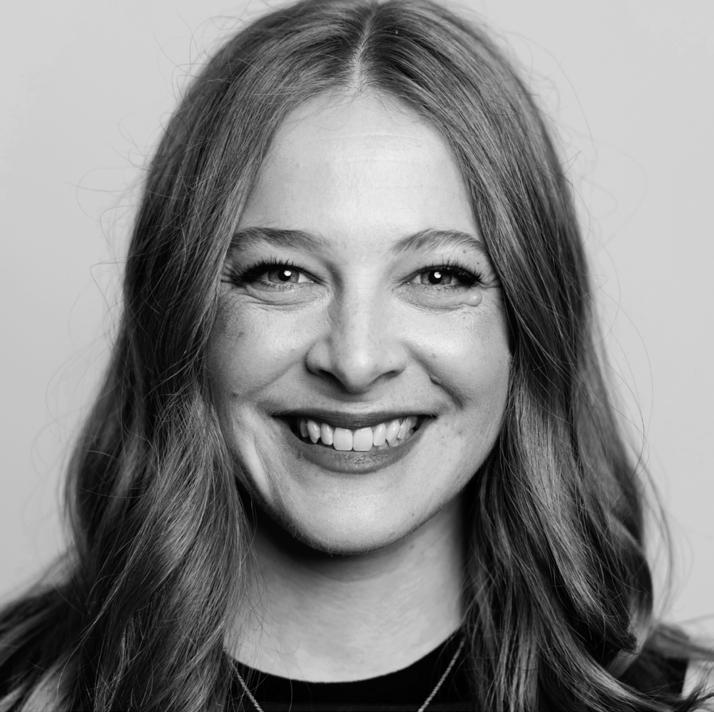
How does stress affect a teenager’s reproductive health, and what coping mechanisms can help?
Stress can affect a teenager’s reproductive health by redirecting or reprioritizing how the body distributes its energy resources. High stress can cause the chemical/hormonal signaling to the ovary to ebb, as the body focuses more on organs that are needed for survival. This may cause periods to temporarily stop, as the ovaries are not ovulating (an example of evolution working against reproductive health).
During teenage years, the high amounts of estrogen that ovaries produce are essential for normal pubertal development, and long term can affect bone and cardiovascular health. This is an extreme example, but theoretically it is how stress can affect our bodies. I remember the academic stress of high school, particularly in the 11th and 12th grade, right before applying to college. Coping strategies can help redirect the stress and help us see the bigger picture, beyond the AP test coming up or the long essay that is due. Hobbies and activities outside of school can be helpful distractions. Personally, I love to find that outlet with exercising— which is also a treatment for painful periods. Calling friends in the evenings also helps with venting, or even reading a book that transports you into a different world.
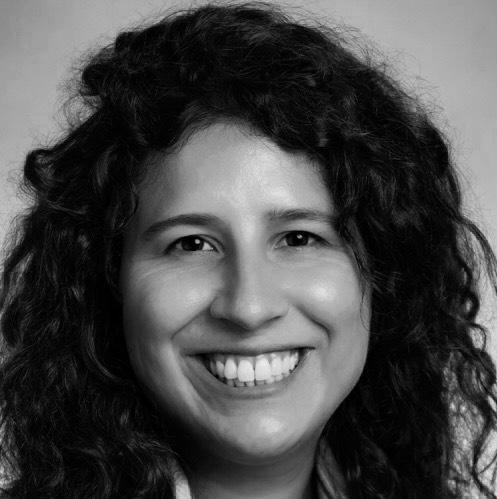
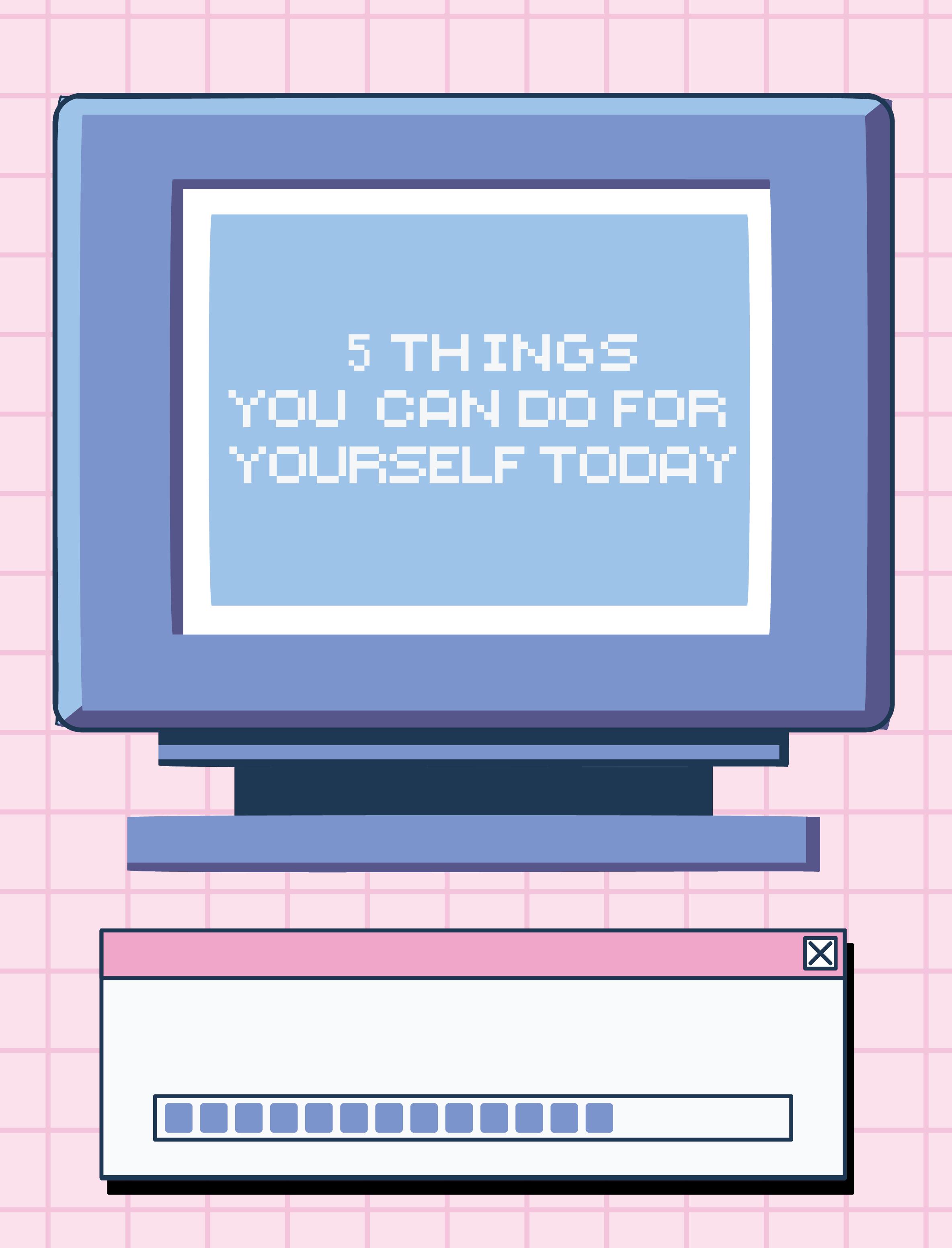
BY STEPHANIE FERRI, FITNESS AND WELLNESS DEPARTMENT CHAIR & 9TH GRADE DEAN OF CULUTURE, COMMUNITY, AND BELONGING
Self-care is about making time to nurture yourself and prioritize your health, happiness, and well-being. Self-care can look different for everyone depending on what works best for them, but the goal is to help maintain balance, reduce stress, and enhance overall quality of life.
Social platforms like Instagram, TikTok, and Pinterest have helped popularize self-care rituals. Whether it is a bubble bath with candles, a detailed skincare routine, or an expensive treatment, some of these practices have become trendy and bring with them pressure to purchase and consume. However, self-care can be easier than you think. You don’t need a lot of products, overthe-top techniques, or even time.
These five tips are all things you can do today to help boost your health and well-being.
at yourself with acceptance can be the first step toward building a more loving relationship with yourself.
be emotional to let go of things, but remember that it's a step towards a lighter, more focused environment.
Why it matters: Sleep is essential for physical and mental recovery. Getting enough quality sleep helps you feel more energized, improves cognitive function, and supports overall health.
What to do: Aim for 7-9 hours of sleep per night. Create a bedtime routine that signals to your body that it’s time to wind down, such as dimming lights, limiting screen time, and relaxing with a warm bath or reading. Consider setting a bedtime alarm to help you stay on track.
Tip: Keep a consistent sleep schedule, even on weekends, to regulate your body's internal clock.
Why it matters: Exercise boosts endorphins, which can improve mood, reduce stress, and increase energy. It also supports physical health by maintaining a healthy weight, improving sleep, and increasing circulation.
What to do: Find an activity you enjoy—whether it’s walking, yoga, dancing, or weightlifting. Aim for at least 30 minutes of moderate exercise most days of the week.
Tip: Make movement fun and do it with family and friends.
Why it matters: Human connection is fundamental to emotional wellbeing. Spending time with others— whether it's friends, family, or your community—helps combat feelings of loneliness, boosts mood, and provides a sense of belonging. Positive social connections can offer support during difficult times and enhance overall happiness.
What to do: Reach out to loved ones; make plans outside of school or take the time to message or video chat with a friend.
Why it matters: Smiling at yourself in the mirror is a simple yet powerful way to boost your mood and practice self-love. It helps foster a positive self-image, increases feelings of selfcompassion, and can even trigger the release of endorphins (the body's natural "feel-good" chemicals). This small act of kindness towards yourself can start your day on a positive note and serve as a reminder that you deserve to feel good.
What to do: Stand in front of the mirror, smile at yourself, and affirm something positive. You don’t need to do anything fancy—just look at yourself with kindness, even if it feels awkward at first. Allow yourself to feel that smile. Let it lift your spirits.
Tips: Do this exercise in the morning to start your day with positivity or before challenging moments. If smiling feels difficult, start small. Just looking
Why it matters: Decluttering and organizing your space can reduce stress, improve mental clarity, and create a sense of accomplishment. Donating or repurposing items you no longer need allows you to give back and make space for things that truly bring you joy. This process can be therapeutic, helping you let go of the old and make room for the new.
What to do: Create three piles or boxes: one for items to keep, one for donations, and one for things to repurpose or recycle.
Tip: Make it a habit. Regularly revisit your space every few months to keep clutter from building up. Organizing doesn't have to be a huge task; breaking it down into small, manageable steps makes it more approachable. Be kind to yourself during the process. It can
Tip: Quality over quantity. You don’t have to connect with everyone all the time. It’s more important to build deeper, meaningful connections with a few people rather than spreading yourself too thin. While connecting with others is important, ensure that your social interactions don’t drain your energy. Make space for time alone to recharge if you need it.
bit.ly/artemis-care-0325 for more resources.
unstructured learning time is a non-negotiable for raising bold, resilient young women.
WORDS BY RACHAEL URIARTE
PHOTOGRAPHS BY TRACY NGUYEN

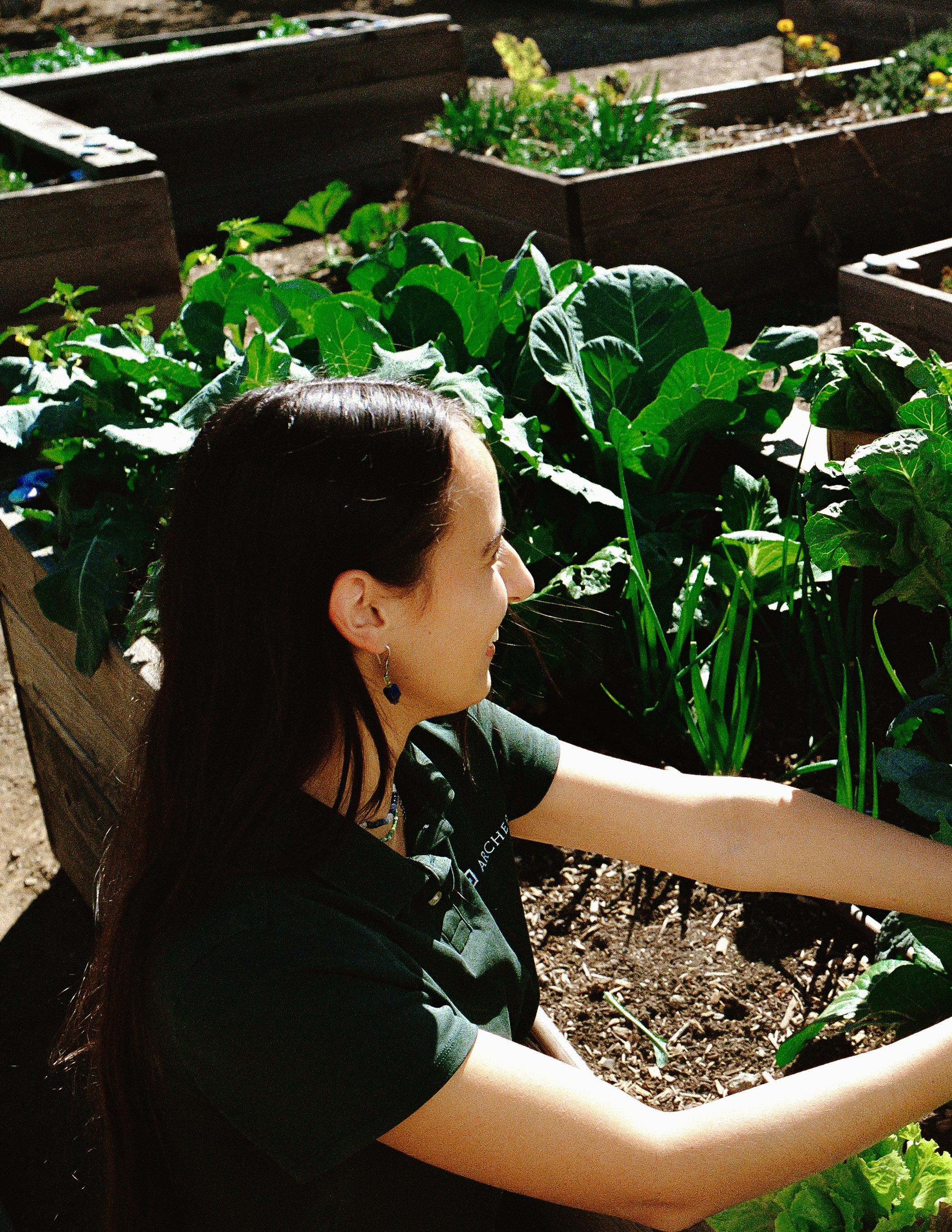

an era where adolescence often feels like a relentless march through AP coursework, extracurricular checklists, and the algorithmic abyss of social media, The Archer School for Girls offers a striking alternative: the radical act of play. Since 1995, The Archer School for Girls has built its reputation on cultivating confident, resilient, and intellectually curious young women. But beyond its academic brilliance, what truly sets the school apart is its commitment to something refreshingly simple yet profoundly impactful— unstructured, joyous learning.
Educational experts have long championed the benefits of free play, particularly for adolescents. Reed Farley, Archer’s Director of Middle School, knows that free play is more than just a pleasant diversion—it’s essential. “Free play is unsupervised, unlike classroom settings where teachers craft lessons with clear guidelines for participation and collaboration,” Farley explains. “When given unstructured time, students choose their own journey, build friendships, develop empathy, and learn emotional regulation while pursuing a passion or interest.” And the science backs it up. As Jonathan Haidt asserts in "The Anxious Generation," children need free play to develop resilience, problemsolving skills, and the ability to navigate complex social interactions— capacities that no amount of meticulously scheduled enrichment programs can fully replicate.
Archer has embedded this philosophy into the school day through initiatives like FLX Block, a dedicated period in which students are given the rarest of academic gifts: time to do as they please. During this time, students have the autonomy to decide how to spend their time—whether catching up on homework, meeting with teachers, or engaging in free play. This could mean anything from a Math Cafe, to workshopping a stand up comedy routine, or a pawsome pup-run, an animated favorite that includes beloved Archer dogs. These moments of self-directed activity reinforce the idea that learning is not
confined to the classroom. Instead, it happens organically when students have the freedom to explore their interests and recharge. The choices are theirs to make, and therein lies the magic.
"These moments of selfdirected activity reinforce the idea that learning is not confined to the classroom."
“The FLX Block allows students to pause, reflect, and decide what they need in the moment,” Farley says. “It’s empowering, and it builds the kind of self-awareness and autonomy that are critical for lifelong success.” Contrary to the fear that unstructured time might lead to chaos or disengagement, students describe it as a lifeline—a rare pocket of the day where they can exhale. For Archer girls it is a valuable opportunity to simply be themselves without the weight of expectations.
It is this lifting of the weight of expectations that is one of the most compelling aspects of FLX Block. The program comes built in with an innate ability to foster creativity and adaptability to take on challenges that arise. After all, when are you more inspired to take calculated risks than when you feel you’re in a safe space to do so? Farley notes that students use this time to dive into pursuits that inspire them, from sustainability projects to improvisational theater. “Students are encouraged to pursue an interest, take a risk, and try something new,” he says. “These explorations often develop into areas of focus in our Upper School, where students learn foundational techniques and develop their unique creative voice.” This autonomy not only sparks curiosity but also cultivates the confidence to experiment, fail, and try again.
Nowhere is this philosophy more tangible than in Archer’s garden, a vibrant, student-centered oasis that serves as both a living laboratory and a haven for exploration. Here, science meets artistry, and the boundary


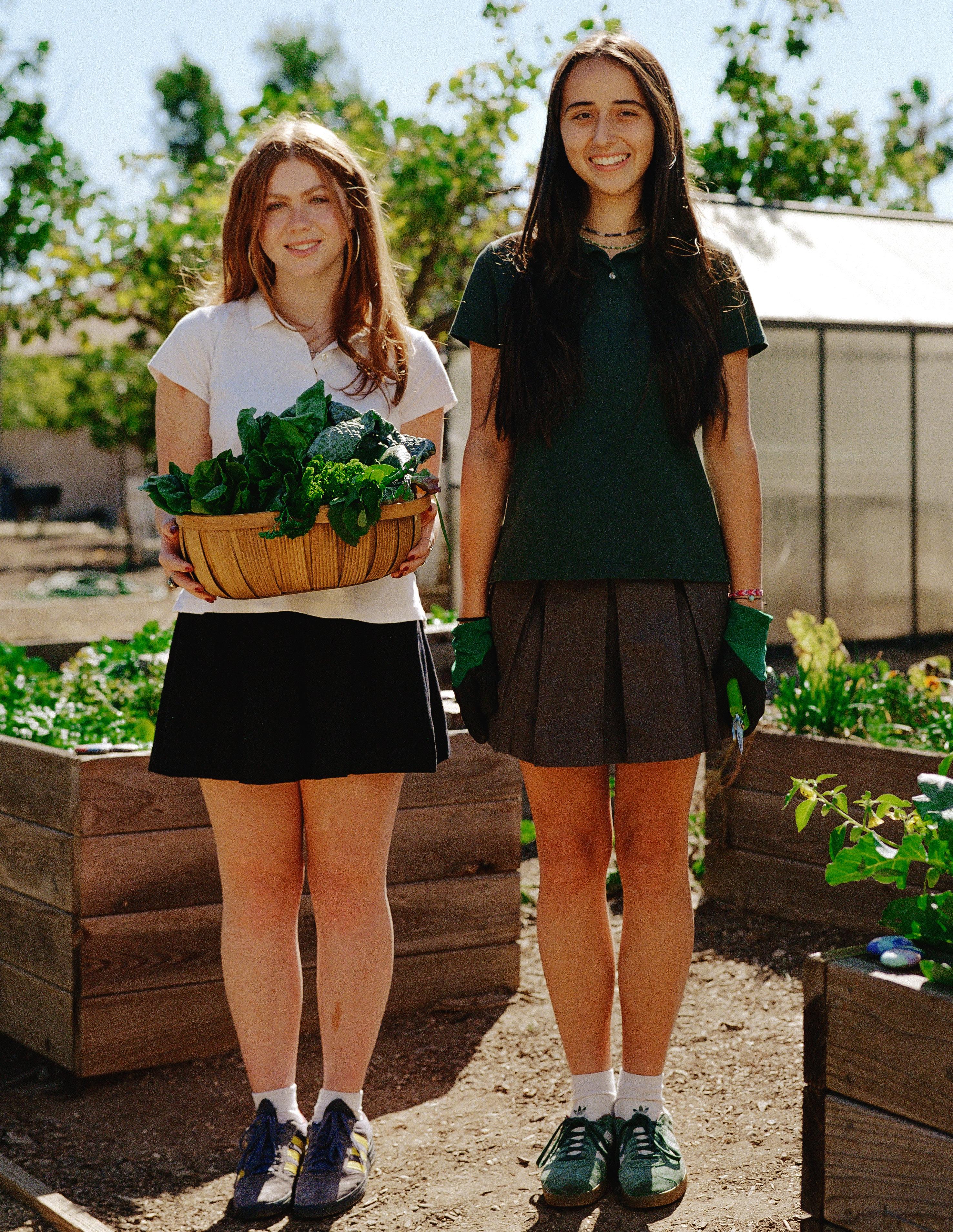
between learning and play dissolves entirely. Carmen Sahagún, an Archer Science Teaching Apprentice who oversees the Garden FLX Block, has seen firsthand how the space transforms students’ relationships with the natural world— and with each other.
“Spending time in the garden is one of my favorite ways to help students connect with the natural world,” Sahagún says. “When students observe a butterfly emerging from its chrysalis after studying the importance of pollinators in class, they form cognitive and emotional connections to that organism and topic.” These moments don’t just reinforce classroom learning; they imbue it with meaning, making scientific principles feel less like abstract concepts and more like personal discoveries.
"When students observe a butterfly emerging from its chrysalis after studying the importance of pollinators in class, they form cognitive and emotional connections to that organism and topic."
What makes the garden unique is that it functions as a space for both structured and unstructured learning. More than just a setting for botanical observation, the garden is a space where creativity flourishes in unexpected ways. “My philosophy when it comes to outdoor education is that not every student is going to connect to nature in the same way,” Sahagún explains. “Some students love getting their hands dirty while learning about gardening and ecology, but others may choose to express their interest by drawing in a field notebook or practicing nature photography.” This flexibility allows students to discover their own entry points into scientific inquiry, making the garden a powerful tool for engagement.
Indeed, the garden has become a microcosm of self-directed critical thinking. One afternoon, students— fresh off a documentary screening about garden pests—took it upon themselves to wage war on grub
worms, enthusiastically digging them out of the soil to protect their newly planted crops. On another day, a challenge to create collages using only materials found in the garden led to an impromptu lesson in composition, texture, and the creative potential of nature’s detritus.
Beyond the intellectual and artistic benefits, there’s an undeniable social alchemy at work in these unstructured spaces. Collaboration is another key benefit of the garden experience. “Working in the garden encourages students to problem-solve collaboratively,” Sahagún says. “Last semester, they had to coordinate which crops could be harvested, how to divide them fairly, and how to ensure the year-round flowers were watered daily.” The result? A strikingly sophisticated exercise in taking initiative, communicating, and negotiating—skills that, in another setting, might have required a seminar but here unfold organically over the tending of kale and marigolds. These responsibilities foster core leadership skills and reinforce the value of collaboration.
Archer’s holistic approach to education reflects a broader belief that joyful learning is essential for academic brilliance, not optional. Reed Farley acknowledges that, for many parents and educators, free play can feel unnerving precisely because of its unpredictability.
“Free play is scary! Students indeed have more opportunities to make mistakes during unstructured play, but parents and administrators often forget that
these moments provide the most opportunity for students to learn and grow as humans.” Mistakes, after all, are where the best learning happens. This perspective challenges the conventional wisdom that academic achievement must come at the expense of fun, friendship, and social activity.
The outcomes of Archer’s approach speak for themselves. Farley points to increased student engagement in science as one tangible result. “Students get to choose their own research topic and conduct their own experiments without the pressure of a letter grade,” he says. “Our students then get the opportunity to compete in the regional Science Fair competition.”
Parents play a crucial role in supporting these initiatives. “As adults, we have our own preconceived idea of what academic success looks like,” Farley says. “Students must be allowed the freedom to pursue their own interests, as it inspires them to become lifelong learners.” By embracing a broader definition of success, families and educators can help students thrive not just academically, but as well-rounded, curious individuals.
Archer’s embrace of play is a quiet rebellion against the prevailing notion that success is a straight-line ascent from childhood prodigy to Ivy League acceptance letter. It is a reminder that education should be expansive, not reductive; that intellectual growth is not only about what can be measured but also about what can be experienced. In an educational landscape that too often equates productivity with progress, Archer stands as a case study in what happens when students are trusted to find their own way—one cartwheel, one hypothesis, one grub worm at a time.
"Free play is scary! Students indeed have more opportunities to make mistakes during unstructured play..."
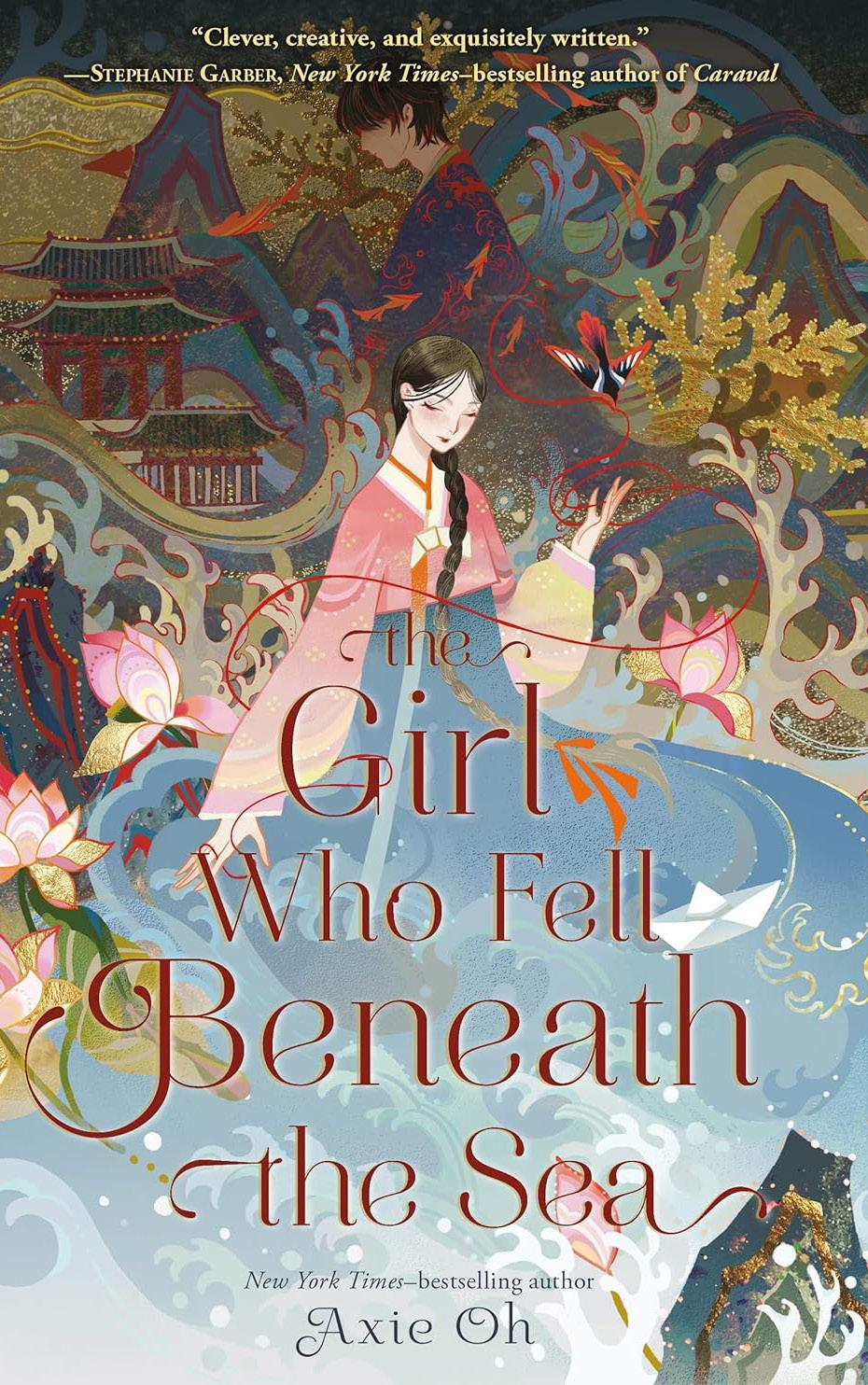
"The
by Axie Oh
A captivating fantasy inspired by Korean folklore that follows Mina, a courageous girl who sacrifices herself to the sea god to save her brother. As she ventures into a magical underwater world, she uncovers the strength within herself and the power she has to shape her own fate. Mina’s journey is all about learning to trust herself, fight for those she loves, and take control of her destiny—and we can’t help but cheer her on as she discovers just how powerful she truly is.
If you're interested in any of these titles, please feel free to visit The Tia Palermo Library at Archer to check them out!
WORDS BY DENISE SOTO, ARCHER LIBRARIAN
When we think about the moments that define girlhood, a wide range of memories probably come to mind—some sweet and funny, others hilarious or totally cringey. But it’s often the tough, emotional moments that stick with us the longest, shaping who we become as we grow.
Girlhood, no matter how you personally experience it, is a unique journey we all navigate in one way or another. While it might seem like there’s a single “girlhood” experience, the truth is, it looks different depending on where you’re from, your background, and what you’ve been through. Today, we’re starting to recognize that girlhood isn’t a one-size-fits-all experience. It’s constantly evolving, shaped by everything from personal stories to larger cultural shifts—and that includes embracing the many ways people express their gender and identity.
The following books offer a window into the lives of teenagers who have made us feel less alone in our awkwardness, helped us appreciate the beauty of our imperfections, and captured the raw, messy, and real experience of growing up. Each one offers a slice of life that reminds us we’re all navigating this journey together—with moments of joy, confusion, triumph, and vulnerability.
"You Should See Me in a Crown" by Leah Johnson
A fun, heartwarming story about Liz Lighty, a smart, determined girl who’s out to win prom queen and secure her future at an Ivy League school. With her world turned upside down by family drama and a sudden scholarship opportunity, Liz pushes past self-doubt and learns to embrace her unique strengths. As she navigates new friendships, first love, and the pressure to fit in, Liz discovers that true confidence comes from being unapologetically herself. It’s a celebration of selfacceptance, resilience, and stepping into your power as Liz takes charge of her own story.


by AcevedoElizabeth
The story of Xiomara Batista, a Dominican-American teen who uses poetry to express her deepest emotions about family, love, and finding herself. Torn between cultural expectations and her desire for independence, Xiomara’s journey of self-expression through her powerful poetry is a celebration of finding your voice, even when the world seems to be telling you to stay quiet. Her courage to speak her truth inspires all of us to embrace our own uniqueness and never apologize for who we are.
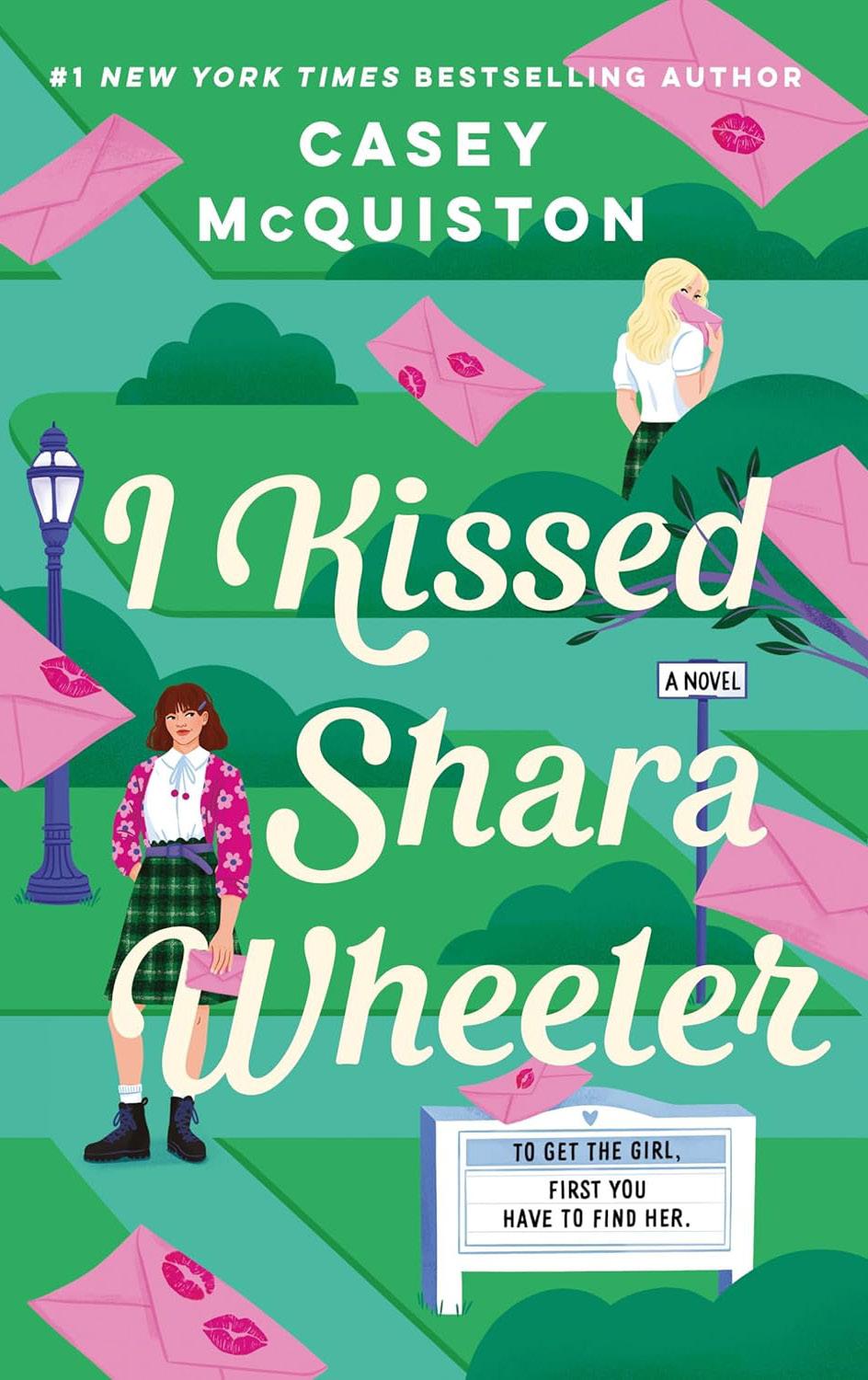
Starr Carter, a 16-year-old girl who becomes an unexpected activist after witnessing the police shooting of her best friend, Khalil. Starr’s journey through a world of injustice, race, and identity in both her all-Black neighborhood and mostly white school is nothing short of inspiring. Her struggle to find her voice and fight for what's right is a reminder that we all have the power to speak up, make a difference, and stand strong in the face of adversity.
"The
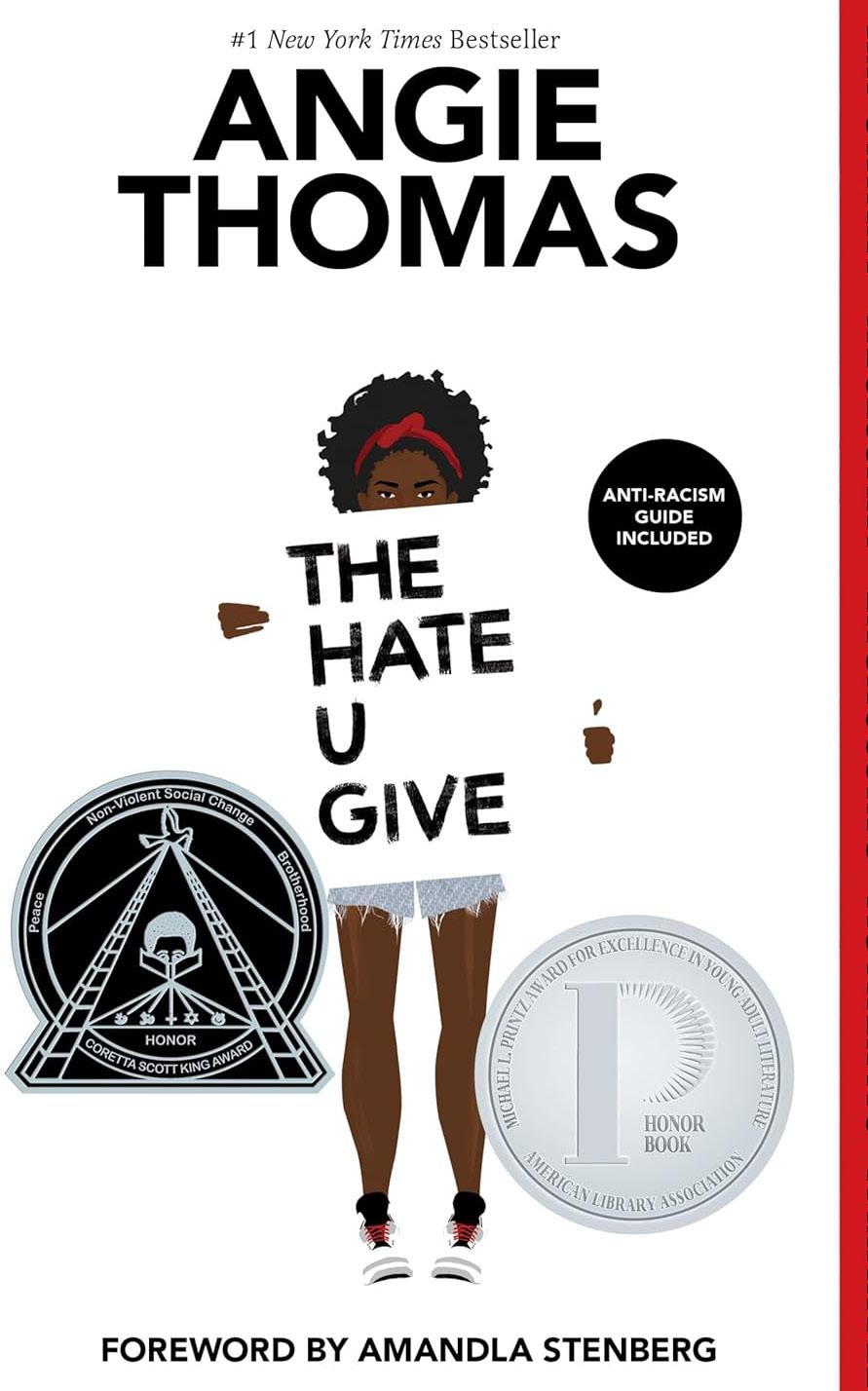
"I Kissed
A fun, heartwarming story about Chloe Green, a high school senior who’s thrown into a whirlwind of romance, rivalry, and mystery after her nemesis, Shara Wheeler, kisses her and vanishes. As Chloe embarks on a journey to uncover the secrets Shara left behind, she discovers new sides of herself, her friends, and her desires. It’s a story of self-discovery, love, and the unexpected twists that come with growing up.

"The Summer I Turned Pretty" by Jenny Han
The ultimate coming-of-age story, following Belly Conklin through a summer of love, heartache, and self-discovery at her family friends’ beach house. As Belly navigates relationships with family and friends, she begins to uncover who she is and what she wants from life. As she learns to accept herself, flaws and all, her emotional growth mirrors the ups and downs we all go through as we figure out who we are.
"(Books) have made us feel less alone in our awkwardness, helped us appreciate the beauty of our imperfections, and captured the raw, messy, and real experience of growing up..."



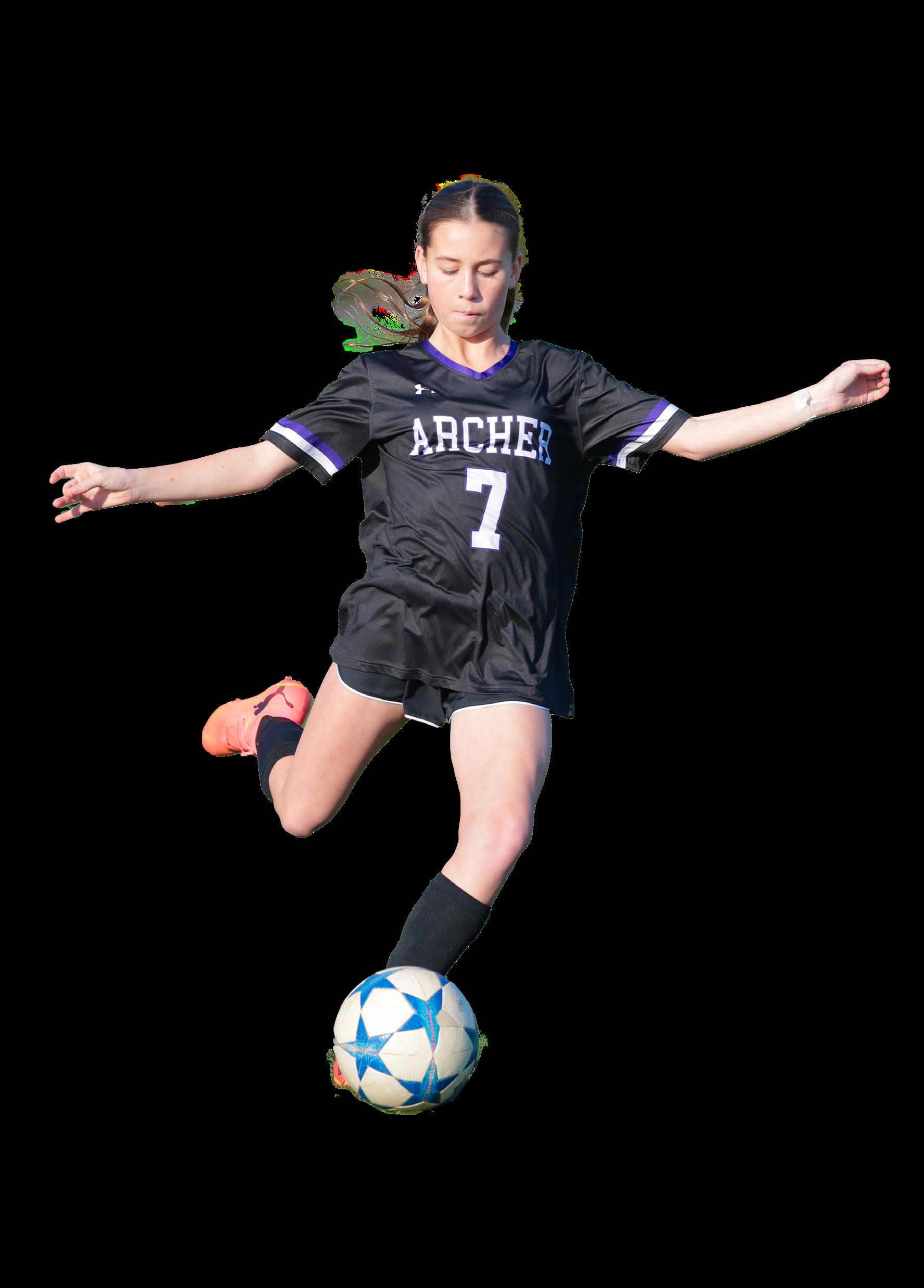
The Archer School for Girls relies on the philanthropic support of the community to take learning inside and outside of the classroom to the next level. Students thrive in an environment made just for them, and your gift to the Archer Fund today will be a wonderful tribute to Archer’s faculty, staff, trustees, and students.
Archer Fund contributions benefit:
• Athletics, performing and fine arts, experiential education, sustainability, humanities, world language, STEM, field trips, and student clubs
• Faculty professional development
• Flexible tuition, which awarded nearly $3.7 million in scholarships this year
• Alumni initiatives, events, and networking opportunities
Ways to Give:
• By credit card: archer.org/donate
• By stock: archer.org/stock
• By mailing a check to the School at 11725 Sunset Blvd, Los Angeles, CA 90049


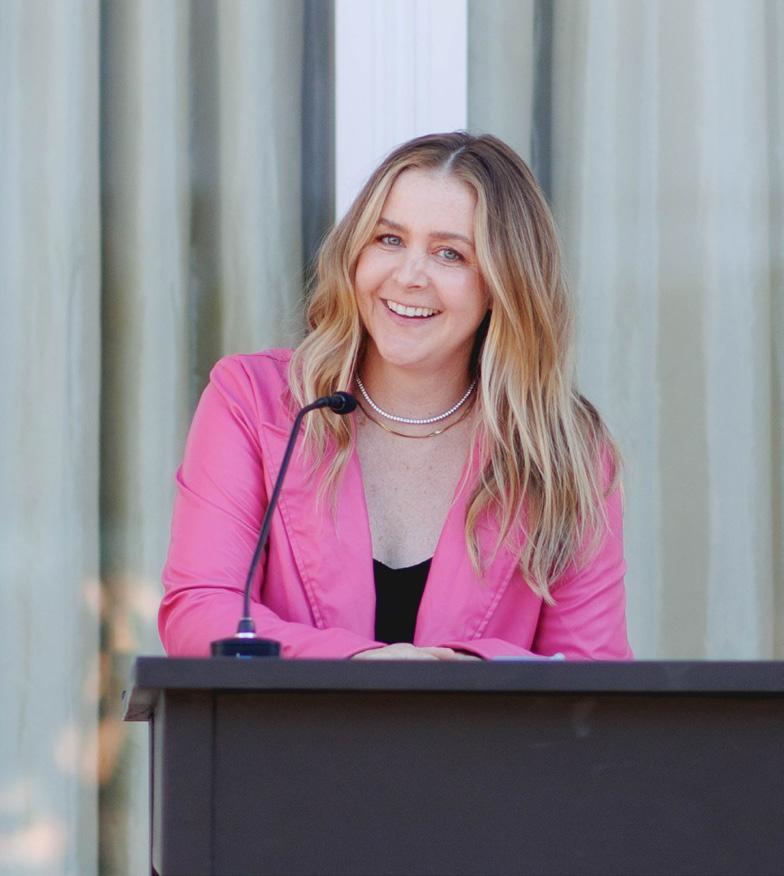


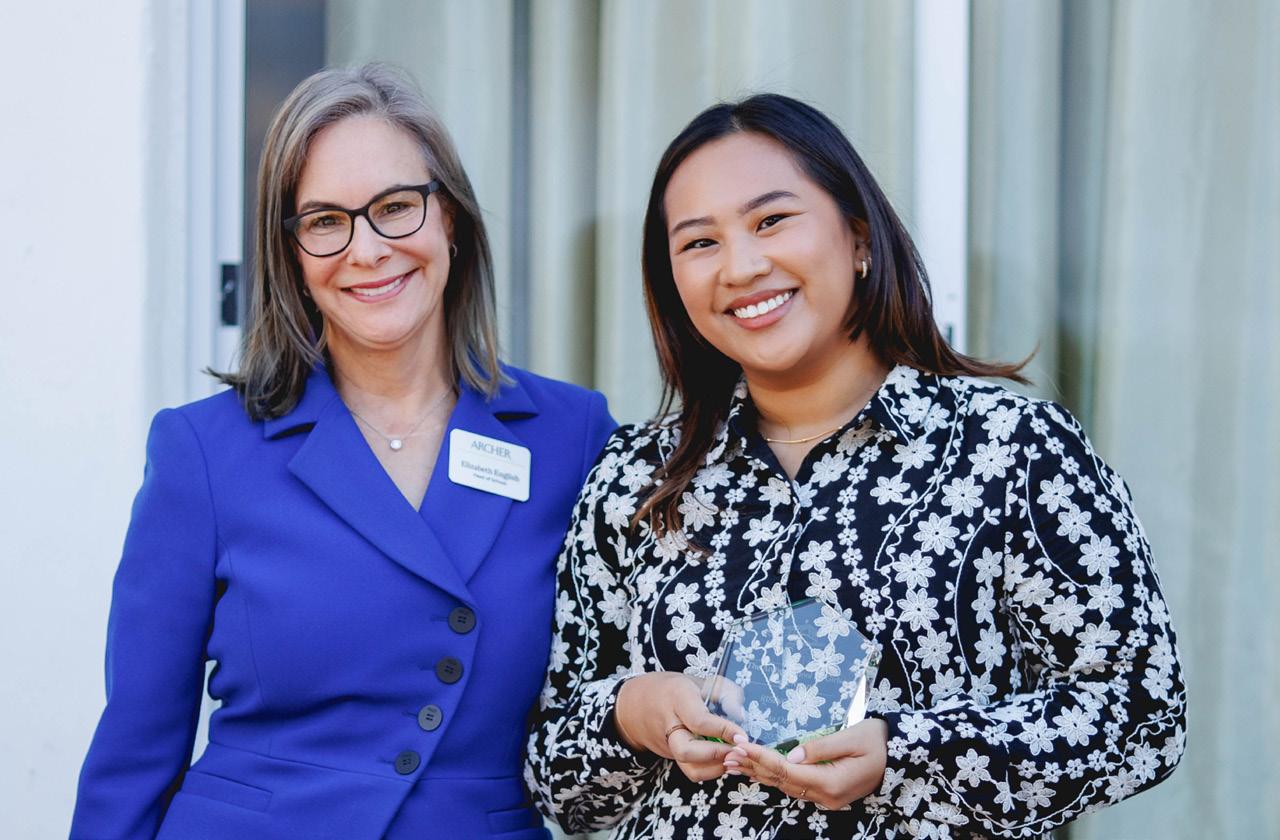
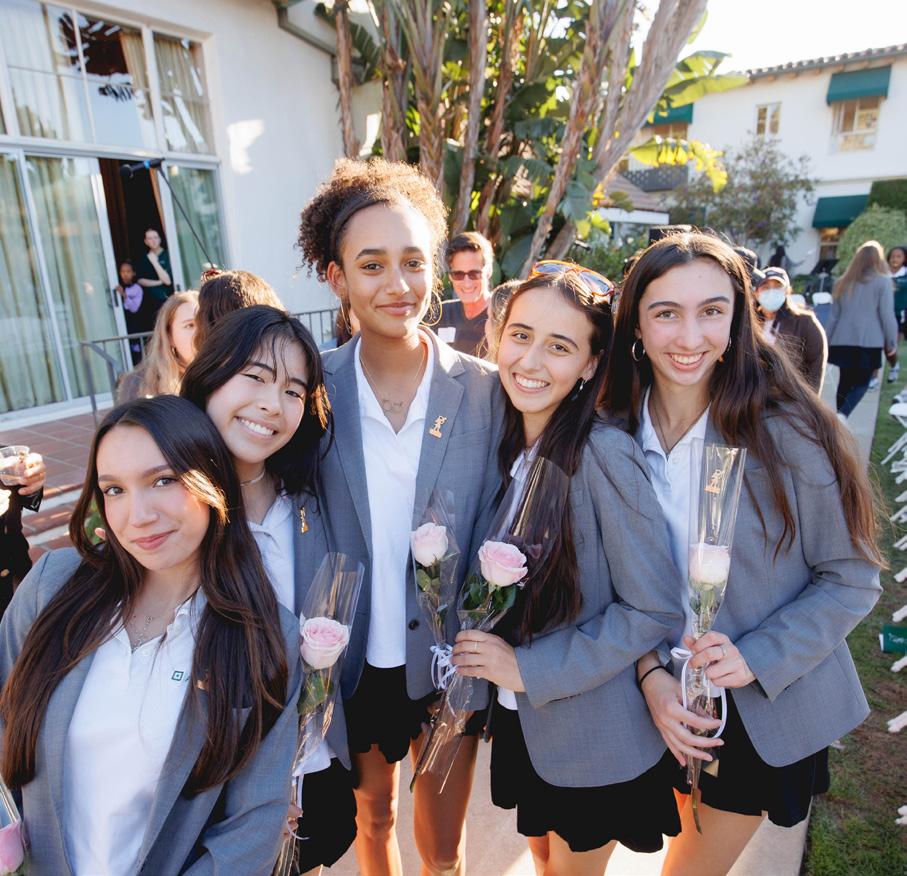
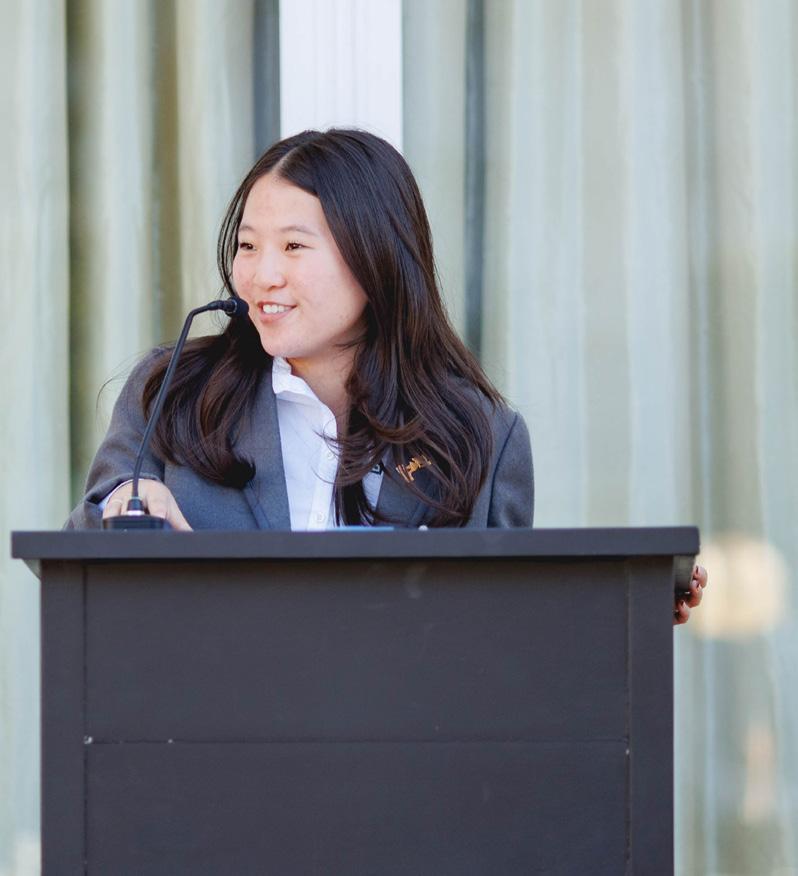
Thirty years ago, Archer’s founders met to discuss creating a girls’ school. Archer celebrated this meeting during our Founders Day and Senior Recognition Ceremony this Wednesday, November 13. Head of School Elizabeth English welcomed attendees and presented the Diana Awards to two distinguished Archer alumni. Sarah Staudinger ’07 was awarded the Professional Achievement award, and Carina Oriel ’16 was presented with the Rising Star award.
Student Body President Rachel C. ’25 gave a presentation honoring Archer’s founders and the senior class. Co-founders Megan Callaway and Dr. Diana Meehan each took to the podium to speak about the history of Archer. Afterward, the Upper School Orchestra gave a performance of “Royals” led by Orchestra Director Dr. Hannah Murray and the Unaccompanied Minors sang “What Happens When A Woman?” led by Choir Director Bri Holland.
12th Grade Dean of Culture, Community, and Belonging Casey Huff gave her remarks to the Class of 2025 before she led the Senior Recognition Ceremony in tandem with Director of Upper School Maggie Cenan. The Unaccompanied Minors returned to the spotlight to sing the school song, “Within the Walls of Archer.” Finally, Ms. English closed out the ceremony with final remarks.
Following the event, the Class of 2025, distinguished alumni, and guests enjoyed a celebration and reception in the Historic Courtyard.
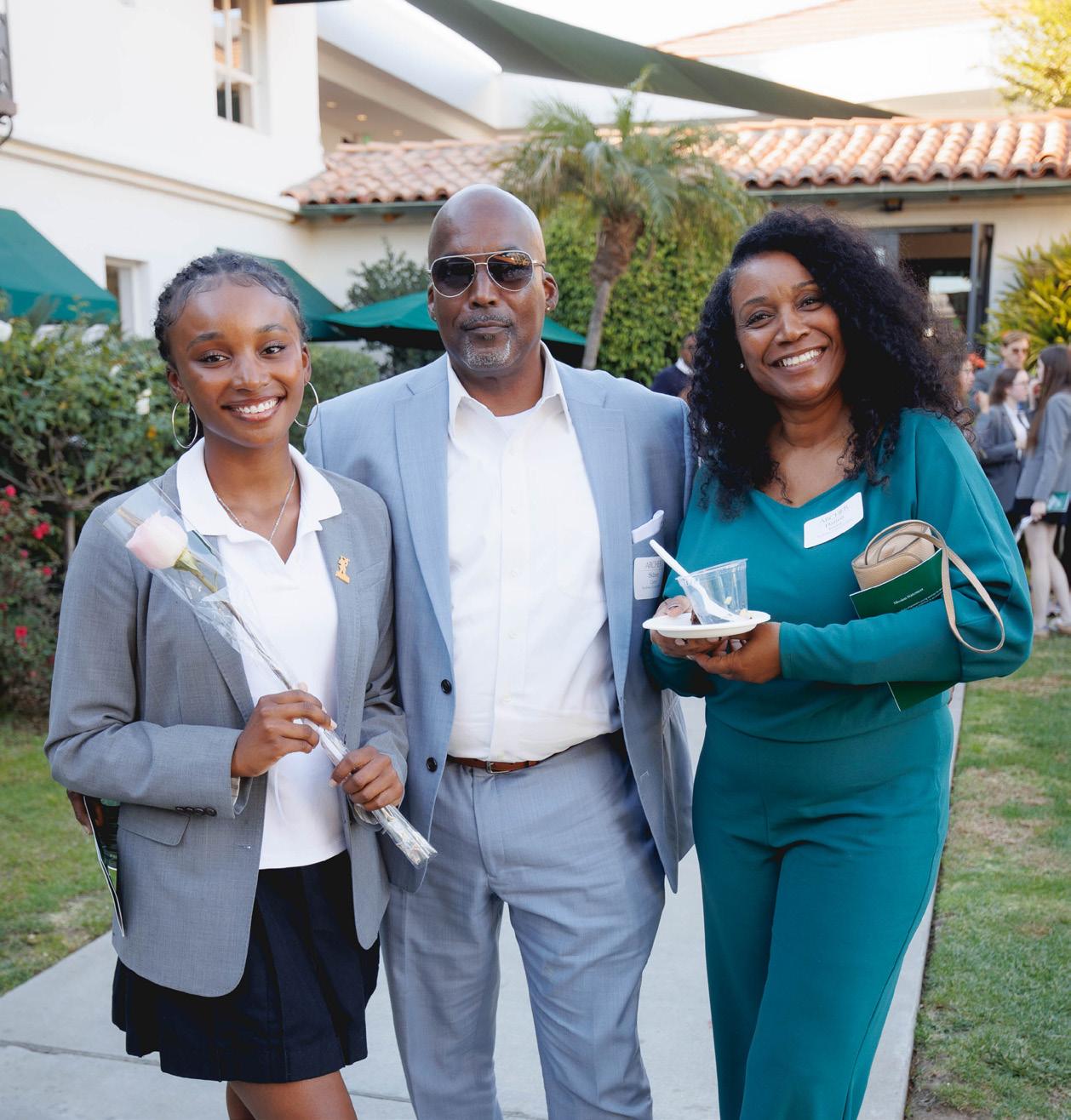
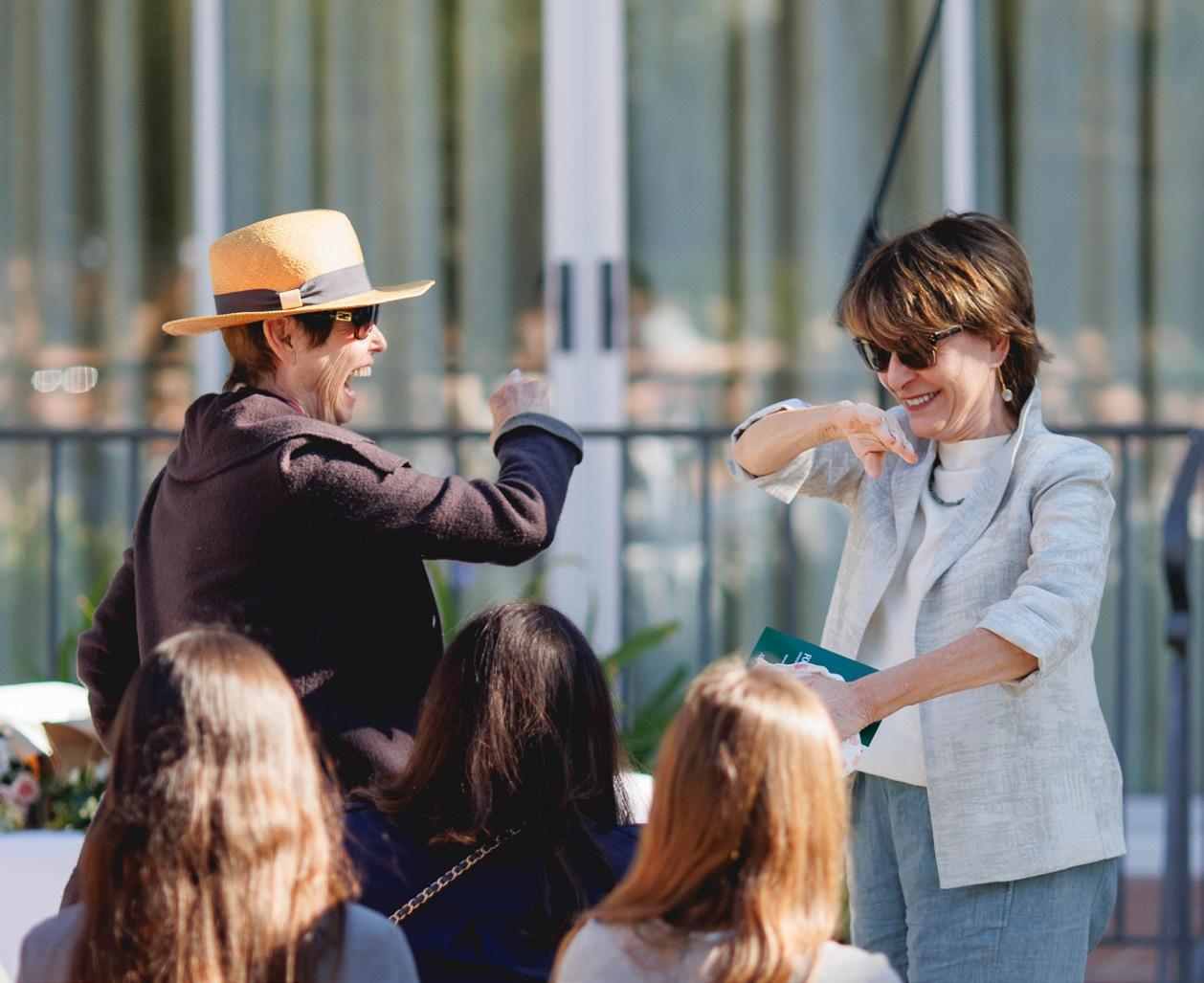

BY FRANCIE W. ’25, FEATURES EDITOR SEPTEMBER 15, 2024
Although the weather may get warmer, and the years increase in number, each summer has one distinct facet in common with those that came before and those that will follow: songs of the summer. 2021 was the summer of Olivia Rodrigo’s album “Sour”; 2022 was dominated by Kate Bush‘s “Running Up That Hill (A Deal With God)”; 2023 was ruled by the soundtrack of the hit movie “Barbie.” Just as summers before, 2024 was also defined by incredible songs and albums that topped the charts. However, summer 2024 wasn’t defined by just one song or one artist: the summer of 2024 will go down in history as “pop-girl summer.”
If you opened Spotify, Apple Music, TikTok, Youtube, or any musically related platform during June, July, and August 2024, you most definitely encountered the phenomena of pop-girl summer. During these months, Billboards Hot 100 charts were packed with female artists, and the radio stations were consumed by female-made music.
So, let’s unpack these songs and albums and talk about how these women created the iconic sounds of the summer.
“Brat” by Charli xcx Pop princess Charli xcx established her presence for the summer, starting all the way back in February with the release of her single “Von Dutch.” Just three months later, Charli released the album’s second single “360.” Although “Brat” had not been fully released yet, it had already taken the world by storm. Brat’s iconic green hue plagued the digital walls of social media platforms and news stations, and eventually took a paramount role in Vice President Kamala Harris’ presidential campaign.
Arguably, the popularity of the album can be mainly credited to TikTok. For months, the “Apple” dance ruled the “For You” page, and influencers and Gen Z’ers alike were living in a “brat summer.”
After its release, many were confused as to why people were celebrating being “brats” due to the word’s negative connotation. However, in the context of her album, one cannot “be” a brat, but one “is” brat. On social media, Charli explained, “You’re just like that girl who is a little messy and likes to party and maybe says some dumb things sometimes. [A girl] who feels like herself but maybe also has a breakdown…But it’s brat. You’re brat. That’s brat.”
Each song is candid, vulnerable, and downright bratty, and the world is loving it. “360” has become a hyper-pop anthem, while “Club classics” embodies the spirit of the self-described “club album.” With collaborators like Billie Eilish, Addison Rae, and Lorde, “Brat” is truly an album for the girls and from the girls, solidifying its welldeserved place in this past pop-girl summer.
“Short n’ Sweet” by Sabrina Carpenter Similar to Brat’s success, even before its release, former Disney star Sabrina Carpenter’s sixth studio album, “Short n’ Sweet,” also had a notable rise to fame. Album singles “Espresso” and “Please Please Please” were undeniably two of the biggest songs of the summer. The synth-pop songs with witty and exuberant lyrics made for the perfect summer melodies.
Even though the album was only released in the last week of August, its impacts on the summer are still notable. “Espresso” debuted on the Billboard Hot 100 chart at No. 10, and in just two weeks, the song secured its spot at No. 1. Even more impressive than


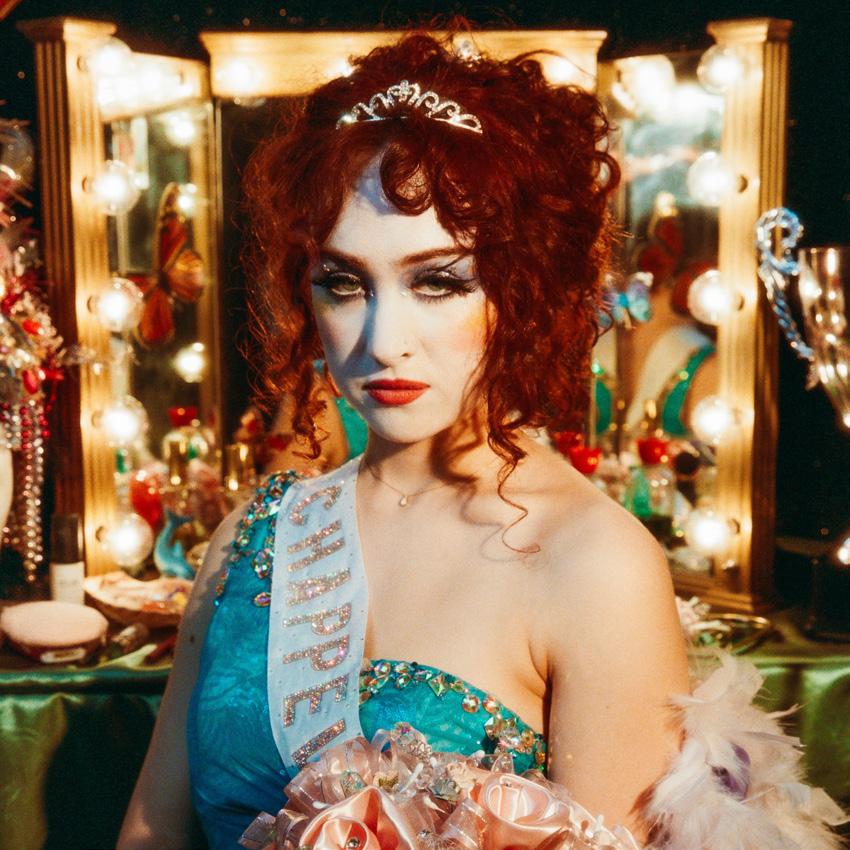
But what do these albums have in common?
female-made pop albums that took the summer by
(Photo sources: Amusement Records, Atlantic Records, Island
that, “Please Please Please,” which was released in early June, debuted at No. 2 and rose to No. 1 after just one week.
Hashing out both the joyful and painful realities of young female adulthood, Carpenter sings about the experiences of so many women. Her blunt and unapologetic lyrics bring listeners through a story with each song, and the tunes and background vocals are addicting and leave us wanting more.
“Short n’ Sweet” is undoubtedly one of the few true pop albums to be released by a female artist in quite some time, and it achieved everything we needed it to.
“The Rise and Fall of a Midwest Princess” by Chappell Roan
Although Chappell Roan’s debut album, “The Rise and Fall of a Midwest Princess,” was released in September 2023, the album has remained highly popular over the past few months.
The upbeat, plucky songs are just what the summer called for. Roan’s music fits in perfectly with the other pop songs of the summer, and served the summer well. Album hits “HOT TO GO!,” “Femininomenon,” and “Good Luck, Babe!” continuously topped the Billboard charts, and deservedly so.
One of the biggest moments for music each summer is the iconic Lollapalooza music festival in Chicago. This summer, Chappell Roan was one of the headliners for the festival. During her daytime set, Roan generated the largest crowd in Lollapalooza history. While speaking about Roan’s history-making set, Brittany L’Heureux, a representative with Lollapalooza, noted that “it was a magical moment that added to Lolla’s DNA.”
Further solidifying her music’s vital role over the summer, a survey conducted by The New York Times found that her hit “HOT TO GO!” was one of 13 top-rated “songs of the summer.”
Each of these artists is a trailblazer in the music industry and is reestablishing the importance and popularity of the genre. Although these three singers were arguably the most influential female artists of the summer, there are a plethora of other inspiring female pop artists who also redefined this summer as a true pop-girl summer. The era of pop-girls should not end here: We should continue supporting and listening to these talented and inspiring women year-round.

The Oracle is Archer’s student-run news site, which is updated dynamically from late August through the end of May. Archer upper school students who have taken or are currently enrolled in journalism classes, which range from introduction to advanced study, are responsible for all aspects of the Oracle and make all decisions about content.
As a student-run publication, The Oracle’s mission is to provide a forum that encourages authentic voices and discussion in our increasingly diverse educational community. The Oracle serves as a resource for the Archer community and beyond to report relevant, interesting and newsworthy information. The Oracle staff is committed to fostering critical thinking in our reporting as well as providing students’ perspectives. Through these endeavors, The Oracle strives to strengthen student voices.
The Oracle is a member of the National Scholastic Press Association (NSPA) and the Columbia Scholastic Press Association (CSPA).
The Oracle started as a small newspaper lunch club that went online in the 2012-2013 school year. It became an elective class in 2013-2014 and began to find its footing as a true journalism program.
Since then, the Oracle has won numerous national awards, including winning the NSPA Online Pacemaker (2015, 2018, 2019, 2022) and being an Online Pacemaker finalist (2017, 2021, 2024); CSPA Gold Crowns (2021, 2022, 2023, 2024) and Silver Crowns (2016, 2020); earning the recognition of SNO Distinguished Site (2024); placing in top 10 Best of Show at multiple JEA NSPA National High School Journalism Conventions; and being published more than 80 times on Best of SNO since 2017.
In recognition of its support of a free and responsible student press, The Archer School for Girls has won the First Amendment Press Freedom Award for the past nine years. Students on The Oracle staff have also won numerous individual awards through NSPA and CSPA.
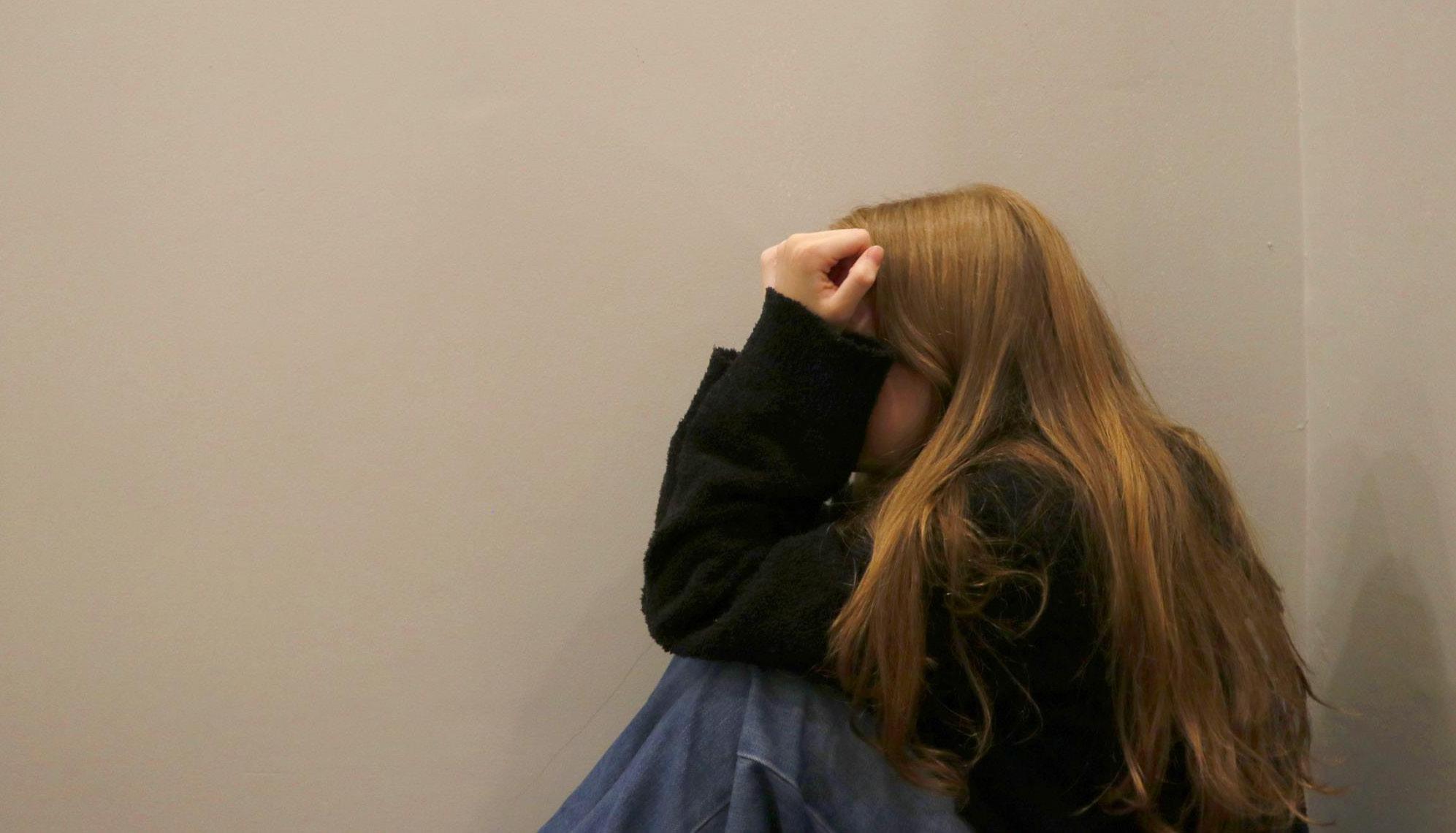
BY CHARLOTTE B. ’27, SENIOR REPORTER
NOVEMBER 17, 2024
Content warning: This article covers sensitive topics such as sexual assault, which may not be suitable for all readers. If you or a loved one is in need of help, reach out to RAINN, the national sexual assault hotline, by calling 800656-HOPE or call 988 for the National Suicide Prevention Hotline. All calls are confidential.
Every 68 seconds, an American citizen is sexually assaulted.
Whether it’s a teenage girl walking home, a toddler in a “Cinderella” dress, or a woman in her 80s riding the bus, there are no criteria necessary to become a victim of assault. Despite this fact, there is one commonality: Around 75% of sexual assault survivors—male and female alike—experience victim blaming.
Defining victim blaming
Victim blaming is categorized by any statement or response that explicitly states or implies that a victim of a crime is at fault for what they experienced. Survivors of sexual assault, domestic
[ABOVE]
A girl leans against the wall with her head in her hands. The emotional and mental toll of sexual assault paired with victim blaming can be incredibly damaging to survivors. “When it comes to domestic violence or sexual assault, you didn’t have a voice in it,” Morales said. “Something happened to you that you didn’t want. So then to continue to experience that after, is continuing the harm.”
(Photo credit: Charlotte B. ’27)
abuse, and other intimate crimes often face victim blaming.
During sophomore year, every Archer student is required to take a 12-week selfdefense course run by IMPACT Personal Safety. IMPACT is a non-profit organization dedicated to ending violence in society and empowering people to take control of their lives through self-defense. Don Hart is a padded instructor, senior instructor, and instructor trainer at IMPACT. He said the perpetrator is always at fault, no matter the victim’s actions.
“The most common reasons people get attacked are because there are bad people out there. There are parasitic
people out there. There are people that want something for nothing. Or on the flip side, there are people that are deranged in some way, shape or form, whether it’s their upbringing or a chemical imbalance, [and] their moral compass says this is okay,” Hart said. “The common [assumed] reason is ‘I was attacked because I did something wrong. I was attacked because I was wearing the wrong thing. I was in the wrong place. I was out too late.’ I think that’s a socially conditioned concept of victim blaming.”
“There are bad people out there. There are parasitic people out there. There are people that want something for nothing.”
— Don Hart, padded instructor, senior instructor, and instructor trainer at IMPACT
Danielle Citron is a law professor at the University of Virginia, where she writes and teaches about privacy, free expression, and civil rights. She worked to combat online abuse and protect intimate privacy through her work with lawmakers, law enforcement, and tech companies. Citron said in a phone call interview that marginalized groups disproportionately experience victim blaming.
“It’s a reflection of, unfortunately, gender norms, more often than not targeted at women or queer individuals,” Citron said. “You’re not going to say to a dude, especially a heterosexual white guy, ‘It’s your fault someone robbed you’… [People] assume responsibility to female and LGBTQ individuals all the time.”
Racial minorities also face disproportionately increased victim blaming. According to a 2018 study, if a sexual assault victim is Black, bystanders are less likely to help them and more likely to blame them for their assault. Hart said victim blaming is often deliberate, but sometimes people unintentionally blame survivors, even when trying to help them.
“Some of it comes from privileged concepts of chauvinism, specifically male chauvinism. But sometimes it comes with good intentions, like problem-solving,” Hart said. “One example, a woman was taking a course, and she was talking about her sister, [who] was raped. Her sister ended up going to therapy afterwards, and she’s in therapy, and the therapist said, ‘Well, what you should have done is this…’ Here is a trained therapist coming from a
place of helping people, and it’s blatant victim blaming…Even though it’s coming from a good place, it has to be stopped, and people have to be re-educated.”
After facing victim blaming, the likelihood of women experiencing substance abuse, depression, PTSD, and self-blame increased, according to a study conducted by students at the University of Messina. The researchers noted that guilt and shame encourage women to stay silent about their experiences, even if it means sacrificing legal protections or medical resources.
“On a social level, victim blaming feeds gender stereotypes and prejudices of a sexist nature,” the study wrote. “The blaming of the victim inevitably entails a collective acquittal of the perpetrator of the violent acts. This vicious cycle triggers a series of further social consequences, which include a decrease in the support offered to women, not only by informal support networks (family and friends), but also at an institutional level.”
Michelle Morales is the Capacity Building Project Manager at the California Partnership to End Domestic Violence. She has worked in the field of domestic violence, sexual assault, sex trafficking, and mental health for over 20 years. Morales said in a Zoom interview that those who blame victims and bystanders who say nothing in response equally encourage a culture of shame.
“It all contributes to this culture of victim blaming, which is really, really harmful to survivors, but really our community as a whole,” Morales said. “It definitely prevents people from coming forward and telling the truth because they feel like they won’t be believed.”
Hart said that victim blaming silences women, noting the statement “Not all men,” which originates from #NotAllMen. The hashtag is commonly used by men in response to victims sharing their experiences. Statements such as “Not all men are rapists” make many survivors feel invalidated.
“It is a statement of fact—not all men are rapists. However, when a human being has just been attacked, the last thing they want to hear is ‘Well, there’s good people
out there, and not everyone’s like that,” Hart said. “You don’t care about that, because all you care about is you just got attacked, and hearing all that periphery softening it doesn’t sit well.”
“The premise law enforcement approaches problems with is [to] turn your computer off: ‘Boys will be boys.’ And the truth of [the] matter is you can’t escape.” — Danielle Citron, law professor at the University of Virginia
Morales said she began her volunteering and activism journey because she is a survivor of sexual assault, noting that most of the victim blaming she experienced firsthand came from her loved ones. She said the environment she grew up in had messages of victim blaming ingrained in it.
“You overhear it in certain things as you’re growing up as a young woman, like in the media. So I know that when I had my personal experience, I remember blaming myself in all kinds of ways,” Morales said. “That’s a really common initial response, ‘I shouldn’t have.’ So then anytime you’re hearing that after that, it just contributes to it.”
Citron said victims of online crimes, notably sextortion and stalking, often do not receive help from authorities. Since sextortion can be perceived as voluntary—despite there being a large power imbalance between the victim and perpetrator—and victims are often shamed when speaking up. Citron said this lack of support leaves victims feeling even more trapped and alone.
“The premise law enforcement approaches problems with is [to] turn your computer off: ‘Boys will be boys.’ And the truth of [the] matter is you can’t escape,” Citron said. “Gender harms are so often dismissed and trivialized, and we blame victims, just as we do with rape: ‘You wear short skirts,’ ‘What were you drinking?’ The same is true when it comes to nonconsensual imagery and other forms of gendered harm…[Law enforcement] acts like, ‘No big thing, it’ll just go away, right?’ And it doesn’t.”
Morales said there are many different strategies assault survivors can use to heal from their traumatic experiences.
Recovery is not a linear process, and Morales said that it is okay to experience bumps in the road. While therapy is often discussed, she said that sometimes people are not ready to verbalize their experiences.
“Talk therapy is one, but there’s people that have different things within their own culture that could be really useful too,” Morales said. “For instance, I’m Native, and so we have our ceremonies and different things that we use for healing. So some people may have it somewhere in their culture that they seek for healing and grounding and letting go.”
When it comes to stopping victim blaming, Hart said being vocal is vital to educate those who are spreading harmful messages.
“Education about victim blaming has to go twofold. The person that’s blurting out the [statement], which is completely squashing, demeaning the person, and then there’s the ‘I’m just trying to help,” Hart said. “We must let people know that what they’re doing is not helpful, to be able to hold the awareness and confidence to say ‘Stop right there. I’m not ready to hear this,’ or ‘What you’re doing is not helpful.’ And that’s tough to do.”
Morales and Citron both emphasized Hart’s statement about the importance of speaking up. Morales said that silence speaks volumes, and in order to fight against both victim blaming and assault, everyone must use their voice.
“As you ring the alarm around victim blaming, you are ringing it for your own community,” Citron said.
BELOW ARE COMMON STATEMENTS USED TO BLAME VICTIMS. THE GOAL IS TO BRING AWARENESS TO PHRASES THAT HAVE HURT SURVIVORS AND EXPLAIN WHY THEY ARE DAMAGING TO THOSE WHO MIGHT NOT UNDERSTAND.
“What were you wearing?”
“She’s such a slut anyways.”
“Not all men.”
“They both have lots of problems.”
“You shouldn’t have drank that much.”
“What did you think would happen?”
“Why didn’t you just leave?”
“He’s being so dramatic.”
Alex (Lewin) Schwartz ’03 passed her comprehensive exams for her doctorate degree in Leadership Studies last spring from Bowling Green State University and is now all but dissertation (ABD), with a goal of completing by December 2025. In April 2024, she married her wife Elissa at their temple in Ann Arbor, MI. With friends and family in attendance, their parents and son Eli joined them on the bimah. In addition to her position as Director of Student Conduct and Community Standards at the University of Toledo, she has recently been elected as the Chair for the Professional Staff Council, providing support and advocacy for the professional staff of the University.

Gabrielle Miller ’04 married Benjamin Griffiths in Los Angeles this past summer, followed by a second wedding celebration in Ben’s hometown in Wales. Gabrielle lives in New York City, where she works as Associate VP of Design and Design Operations at David Yurman. Gabrielle recently celebrated her 15th anniversary with the company.
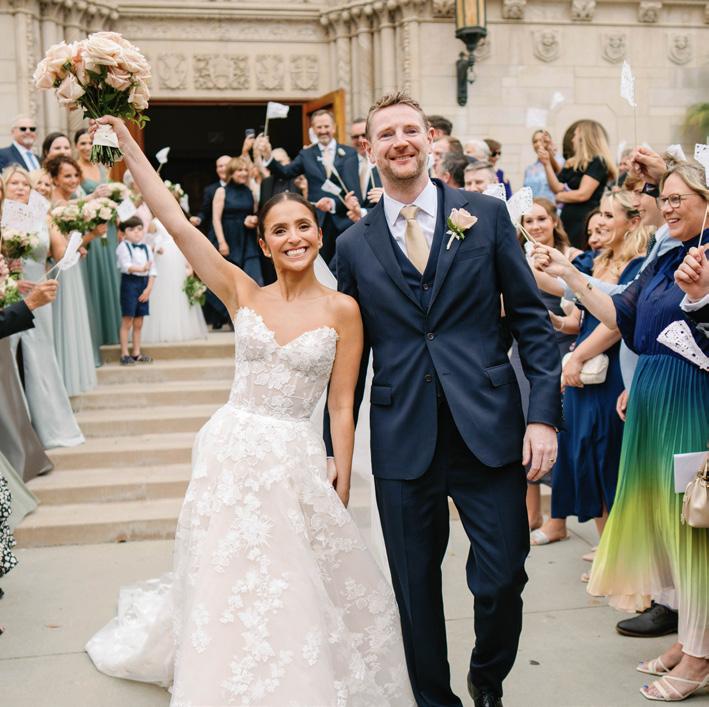
Onyeka Obioha ’05 is a board certified dermatologist. After five years of practice, she opened her own practice in Beverly Hills Boutik Dermatology by ObiohaMD. “As an introvert from a very young age, Archer fostered an environment that allowed me to find my voice and gain confidence in expressing myself, taking risks, and instilling the vision that I currently live today." Part of that vision, through her work as a doctor, is having a positive impact on her patients’ self-esteem.

Shauna Higgins ’06 is a Board-Certified Dermatologist and serves as Medical Director at Metropolis Dermatology in Downtown L.A. Her interest in medicine first developed in Mr. Hinkley’s 7th grade biology class at Archer. Now she practices a mix of medical and cosmetic dermatology with a particular emphasis on patient-centered care.

Philicia Saunders ’06 married Jordan Wilson on November 10, 2024, at the Ebell Club in Long Beach. They had a Bridgerton-themed wedding and it was featured in the Vows section of the N.Y. Times.
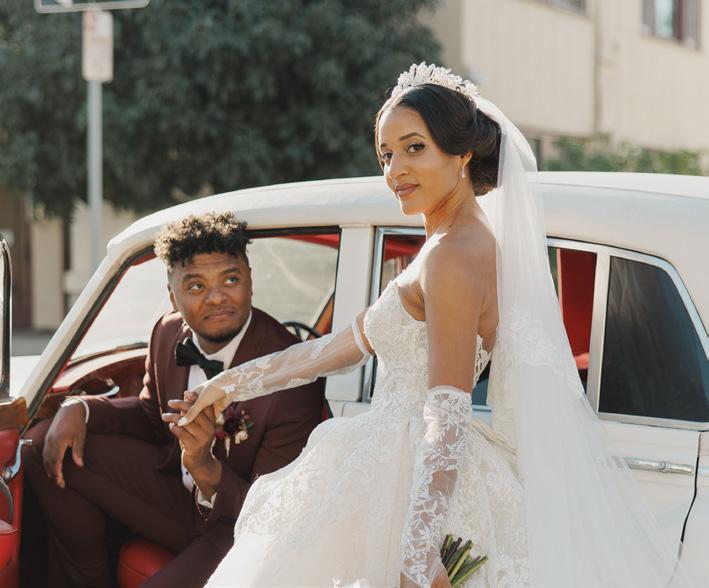
Janine (Doyon) McCall ’07 had a baby girl! Emma Laine McCall was born on November 1, 2024, to Janine and her husband Taylor. Emma's big brother Jack is thrilled to have a little sister!
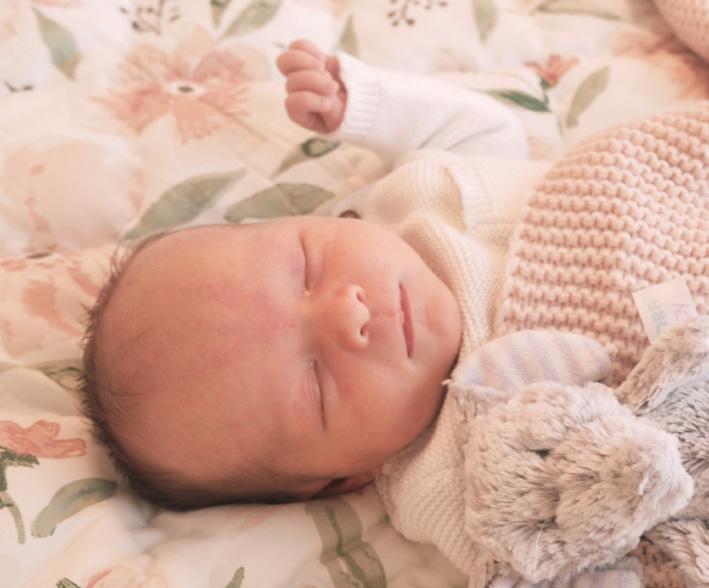
Allie (Davis) Rostov ’07 and her husband Mike welcomed their daughter Violet on September 20, 2024.

Kate (Geller) Baker ’09 married Jonathan Baker this past September at Calamigos Ranch in Malibu! They live in Los Angeles, where Kate works in women’s empowerment, and Jonathan is a licensed marriage and family therapist with a private practice in Beverly Hills. Archer alum Merissa (Acosta) Weinstein ’09 was a bridesmaid in their wedding and planned an unforgettable spa weekend bachelorette in Ojai!

Maddy Siegel ’09 and her husband Steve are pregnant with their first child, a baby girl coming April 2025! They are thrilled to be parents! Madisen is still the Clinical Director for The Frankel Group Therapy Practice in Westwood and loves being a therapist.

Elle Brosh ’11 is a high school humanities teacher and a part-time chef. Last year, she founded “Dadah,” a culinary anthropology project dedicated to preserving North Africa’s diverse cultural heritage through food. Inspired by her North African roots and her years of experience in both hospitality and education, Dadah offers history-infused private dining experiences, pop-ups, and cooking workshops. Elle recently got engaged to her fiancé, Jason, during a trip to Vietnam, and they are getting married this fall!

Rachel Lynd ’11 married her husband Randy Maestas in October 2022 in Palm Springs. Sister Kelsey Lynd ’08 and friend Xzavier Brown ’11 stood by their side as bridesmaids. They joyfully welcomed their beautiful daughter Delaney "Dilly" Maestas into the family in July 2024. The happy family of three resides in Los Angeles, where Randy works in risk management and Rachel works in the fashion industry for the clothing brand Rails, designing their retail stores worldwide.
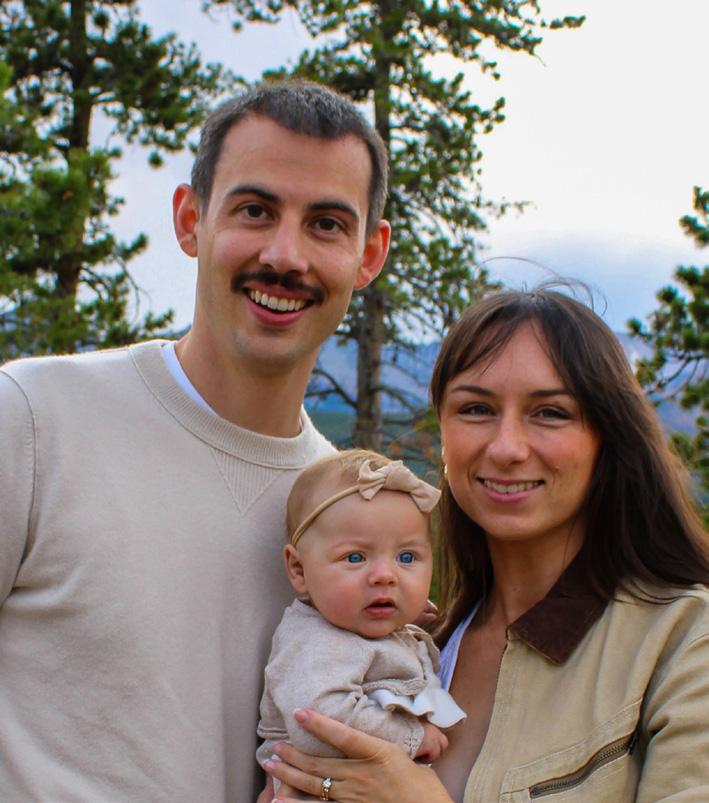
Leasly Salazar ’11 recently achieved a fellowship with Immigrant Justice Corps and will be completing a two-year fellowship as an Unaccompanied Children Program (UCP) Fellow with Public Law Center in Santa Ana, CA, providing free immigration legal services to recently-arrived immigrant children in Orange County. She has also passed the CA bar exam despite numerous challenges and will now be able to serve in both state and federal court processes for immigrant clients.
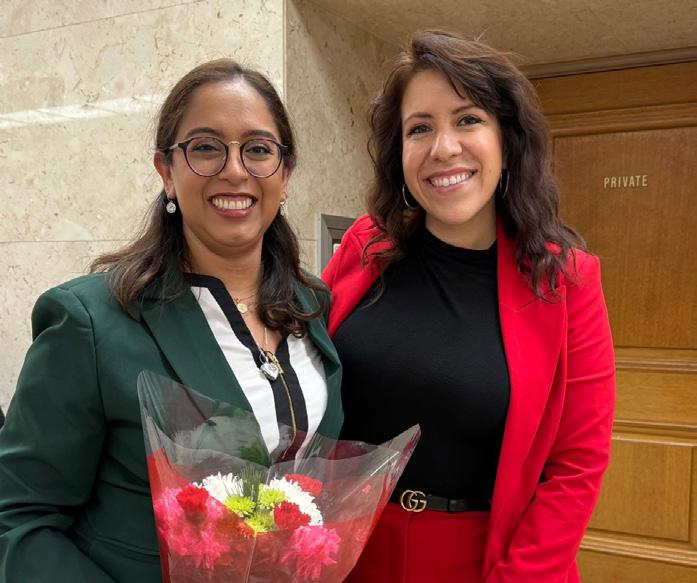
In 2022, Abigail Clark ’12 moved to the United Kingdom to pursue an M.A. in Visual Communications at the Royal College of Art, which she was awarded in 2023. She has just completed a second M.A. in Fashion Photography from University of the Arts London. She has worked as a photojournalist internationally and most recently traveled to Kyiv, Ukraine alongside a global health group supporting Ukrainian healthcare workers and NGOs. Additionally, in 2022, she signed as a client with the Deborah Harris Literary Agency, where she is represented by Rena Rossner, and is currently on submission to various publishing houses for her debut novel. Photography and writing were two passions she nurtured at Archer, particularly under the tutelage of Harris Hartsfield and Jed Donnell.
Austin Maddox ’12 recently launched Flow with Austin, an online yoga community that allows you to find wellness your way. This monthly online membership includes live and on-demand vinyasa classes focused on strength, flexibility, proper form, and modifications that will allow you to personalize your practice to fit your needs. Yoga has been an anchor for self-transformation for Austin ever since practicing at Archer, and by sharing her practice on social media, she was able to build a global community of people who want to nurture their well-being.
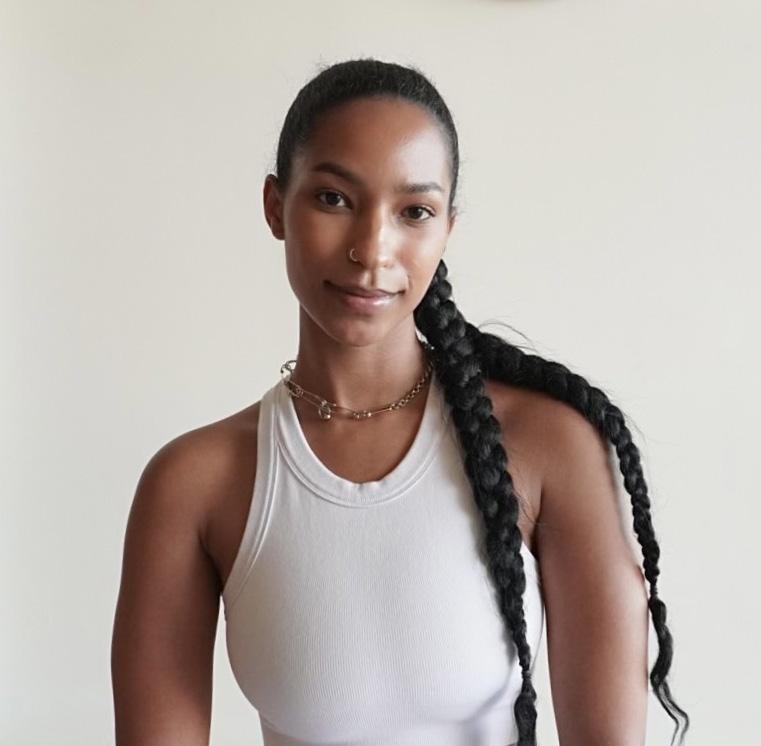
Rebecca Samuelson Clark ’13 married her longtime love Garrett Clark on October 4, 2024. Family and friends watched them officially tie the knot in the gardens of the Santa Barbara Courthouse and then celebrated the newlyweds that evening at their favorite brewery in Solvang.
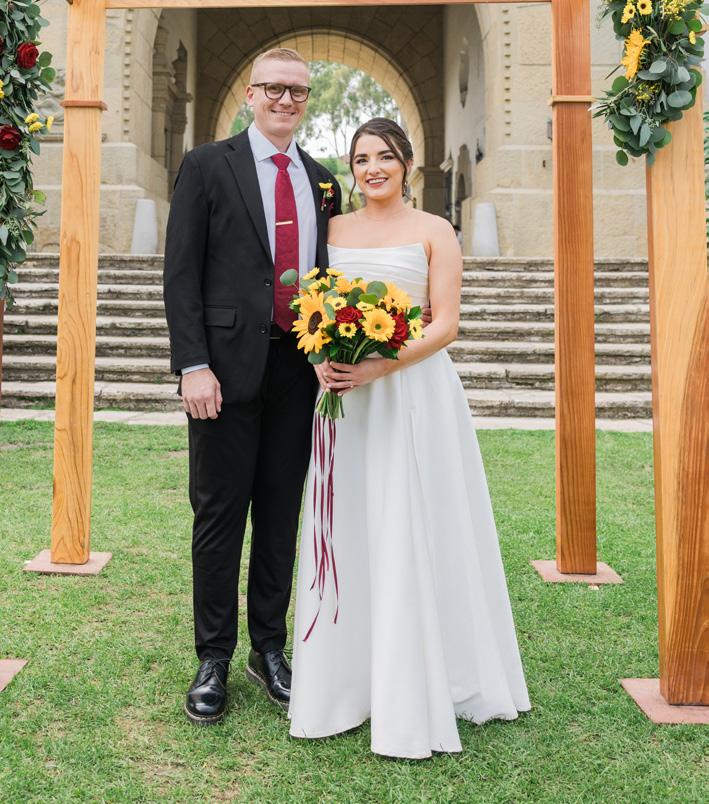
Olivia Kohn ’15 married Ari Silberman on September 21, 2024, at her parents’ home in Malibu, surrounded by friends and family, including some of Olivia’s old friends from Archer! It was a perfect celebration of their love. Olivia and Ari met at their summer camp, Camp Hess Kramer, in Malibu when they were in middle school back around 2010; they started dating in 2017.

Grace Brown ’16 got engaged to Tom Batan on November 23, 2024, in Malibu, CA. The Los Angeles natives met as undergraduates at The University of Wisconsin–Madison. Grace works in marketing for Live Nation while Tom is currently pursuing a career in radiology. Their engagement marks an exciting new chapter in their journey together, and they are thrilled to celebrate this milestone surrounded by loved ones.

Kimia Khatibi ’16 passed the July 2024 bar exam in Washington, DC, and is now in the process of becoming a licensed attorney. She currently works at the Center for Reproductive Rights in DC where her legal focus is on federal policy concerning access to abortion and gender-affirming care. Kimia is also celebrating getting engaged at the end of December 2024.
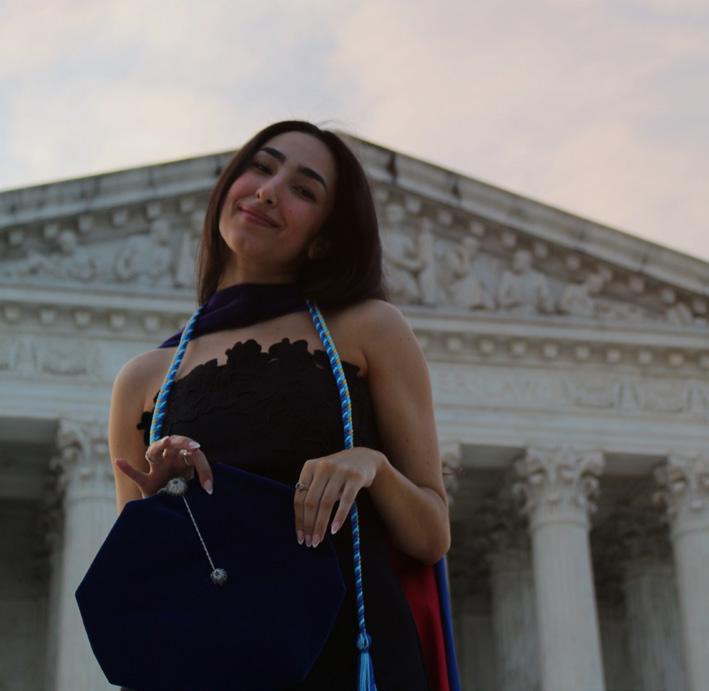
Inspired by her three Archer Arrow Week trips, Rachel Pike ’17 is working as a NOLS instructor along with attending Graduate School at Duke University and the University of North Carolina at Chapel Hill. Last January, Rachel joined a team of Black women on an expedition to summit Mt. Kilimanjaro. “Climbing Kili was inspiring, challenging, and life-changing, and I am so thankful to Archer, NOLS, and so many other people in my life who helped me reach the peak.”

Maya Winkler ’18 graduated from Columbia University in May 2024. She moved back to Los Angeles and now lives in Venice with her fiancé Noah—they’ve been together since she was a sophomore at Archer and went to junior and senior prom together. Maya is working for producer Andrew Form who has a first-look deal at Sony; she is directing two short films in the next few months and is currently in post-production on a music video she directed as well.
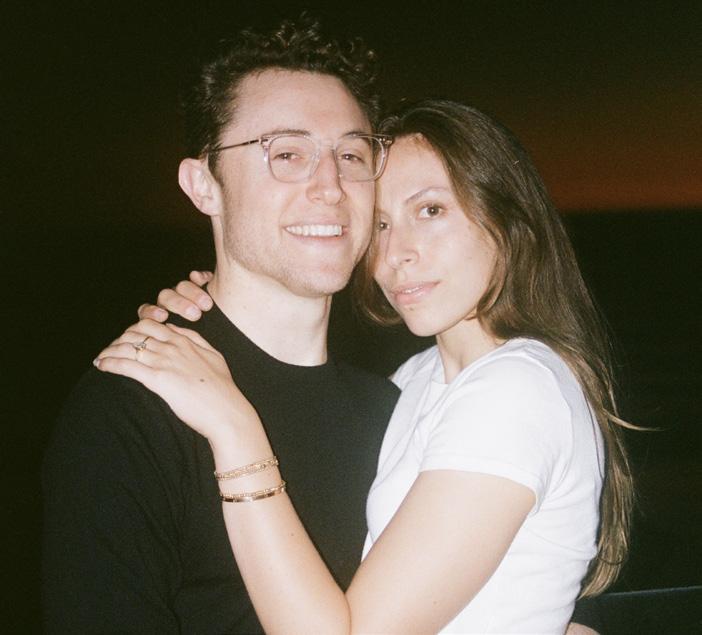
Alyssa Ponrartana ’23 is in her second year at USC studying Health and Human Sciences, and this past summer, she received two funding awards from USC to conduct global health research and outreach in Uganda. On the research front, she studied road safety and menstrual hygiene in the northern district of Lira. As for outreach, Alyssa had the opportunity to teach water, sanitation, and hygiene practices to over 200 primary school students.
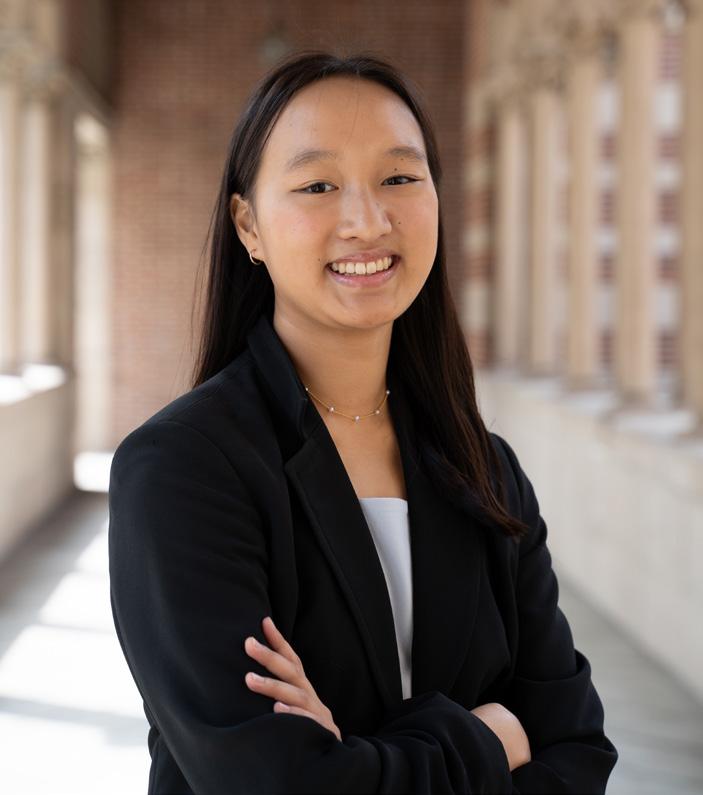
This past summer, Piper Rutman ’23 was an intern for the composer John Powell while he was writing the score for “Wicked: Part 1.” She was able to be in the room with him while he was writing the incredible underscore you hear in the film, and she spent a lot of time with his assistants and mixers while they orchestrated certain parts of the score, printed stems, and mixed the music. Piper also attended the choir recording session. She shares, “It was an incredible experience, and I'm still in disbelief that I got to work with my all-time film-scoring hero. I will continue to use everything I learned this summer in all of the music I do going forward, including scoring my first full-length student feature film this year.”

Anaiya Asomugha ’24 is in her first year at NYU and currently works as a voice actress and is part of the CESD Talent Agency. She has appeared in Inside Out 2 on Disney+ and Jurassic World: Chaos Theory (Season 2) on Netflix.

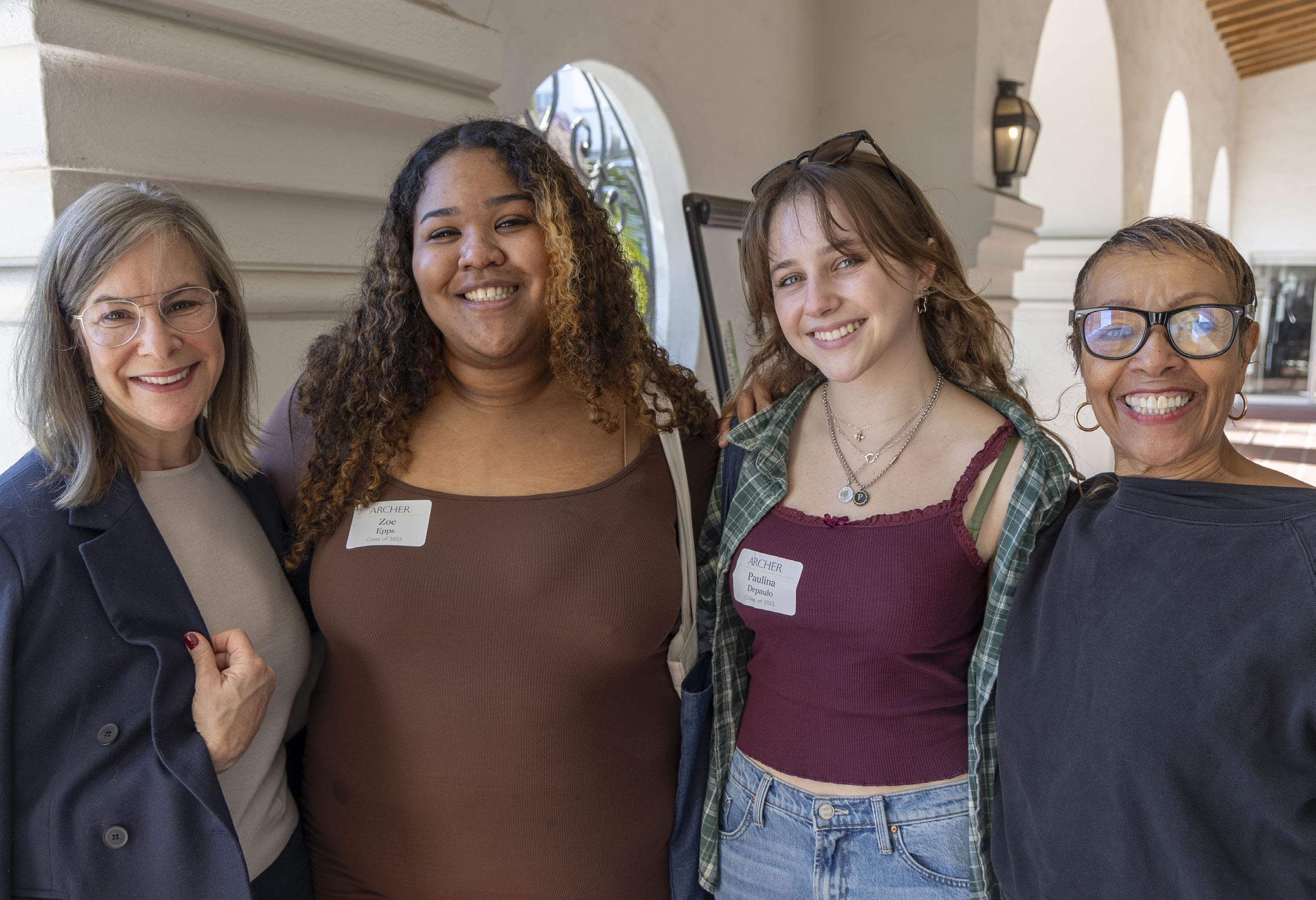
Alumni Event Dates for 2024–2025
Milestone Reunion: Saturday, June 7, 2025 for the Class of 2005, 2010, 2015, and 2020
archer.org/alumnievents
Stay Connected with the Archer Alumni Community
Social Media
Facebook & Instagram: @archeralums
Contact Information archer.org/contactform
